
Chicago — See the Most Extraordinary Art & Architecture in the USA
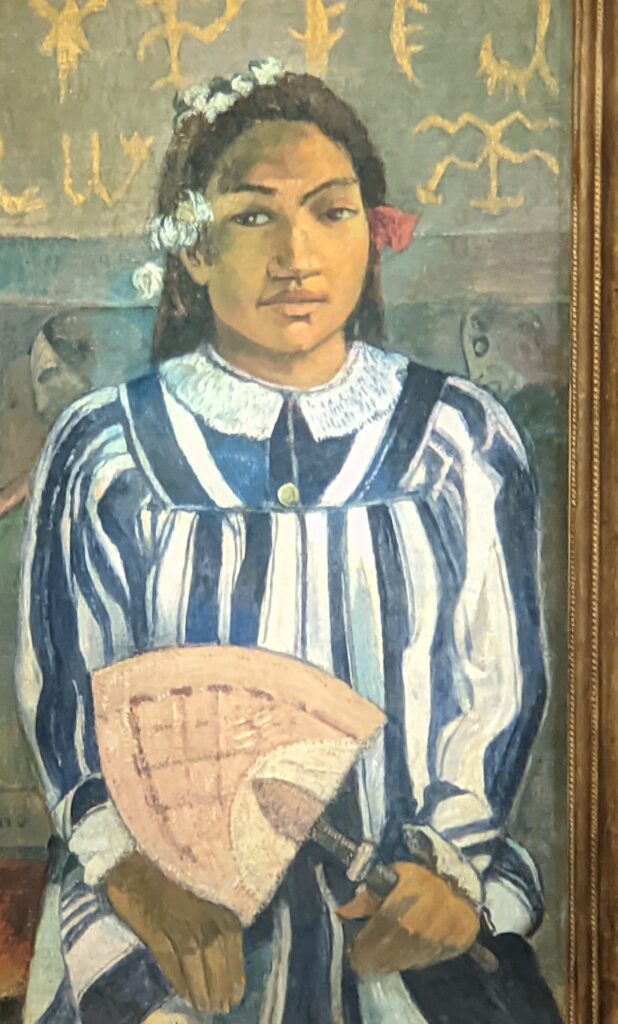



Iconic American Art Is on View at the Art Institute of Chicago
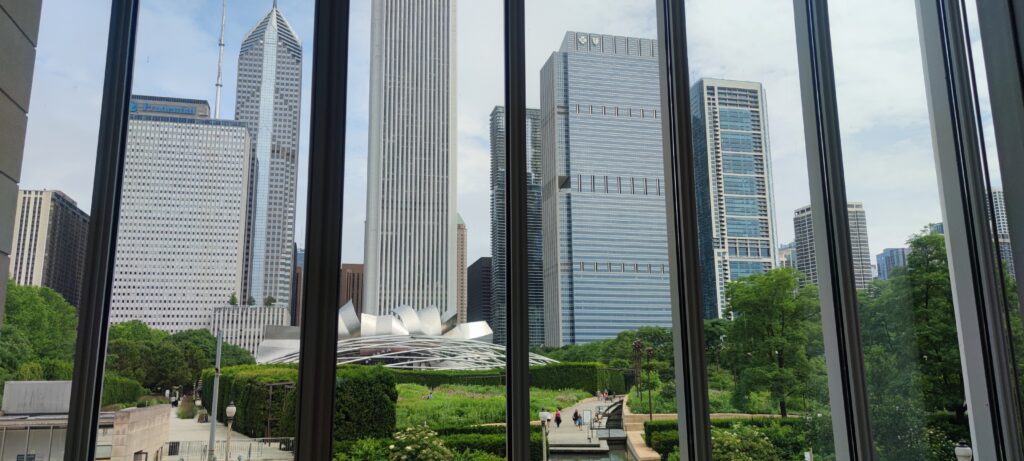


During stressful times, when one hopes to gain perspective on life’s complexities, the best tonic may be a walk by a lake or through a park, perhaps a boat ride to take in the creativity all around us, or an inspirational visit to a museum. As the poet and mystic Thomas Merton observed, “Art enables us to find ourselves and lose ourselves at the same time.” In the U.S.A., travelers often discuss the vibrant cities on the East Coast or the beautiful destinations on the Pacific. Whatever itinerary you choose, we encourage you to include a few days in Chicago in your travel plans. A visit to the amazing Art Institute of Chicago, famous for French paintings by Gauguin, Toulouse-Lautrec, Renoir (shown above) and many others, is guaranteed to surprise you.
Chicago offers you the most dramatic architectural experience in the United States, and the Art Institute has a fabulous collection of paintings by American women and men. After reading this article, our hope is that you will be able to see yourself on Lake Michigan in Chicago, enjoying a slice of the American experience which cannot be found on either of the Coasts.
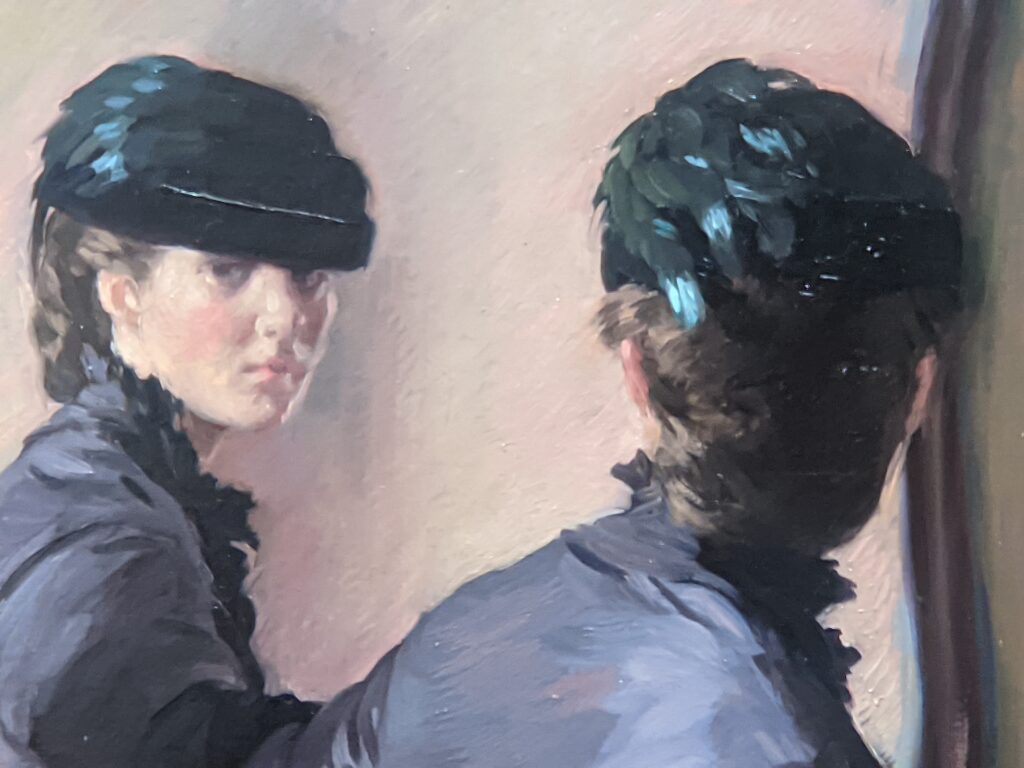

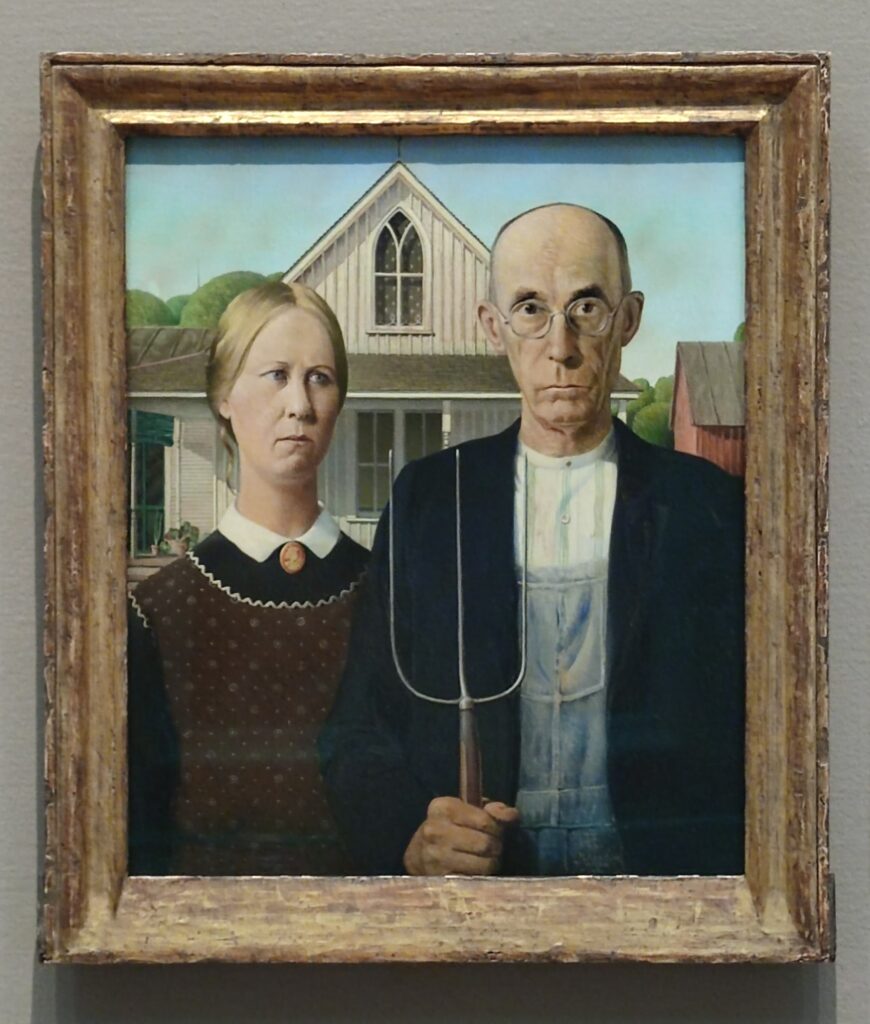

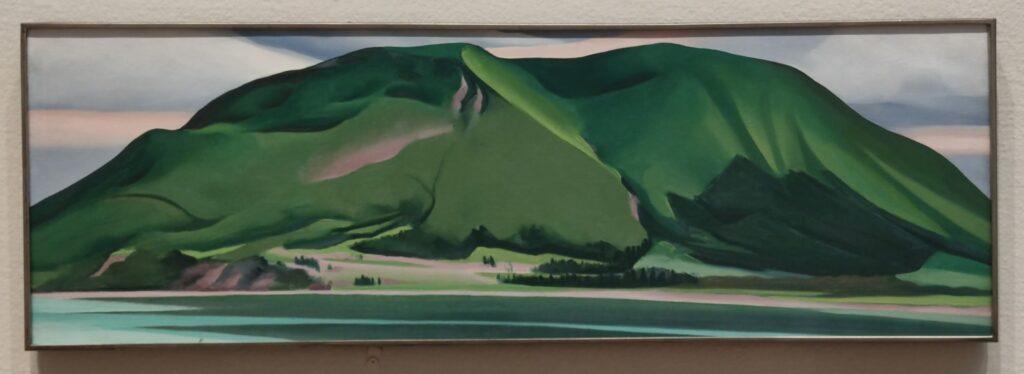



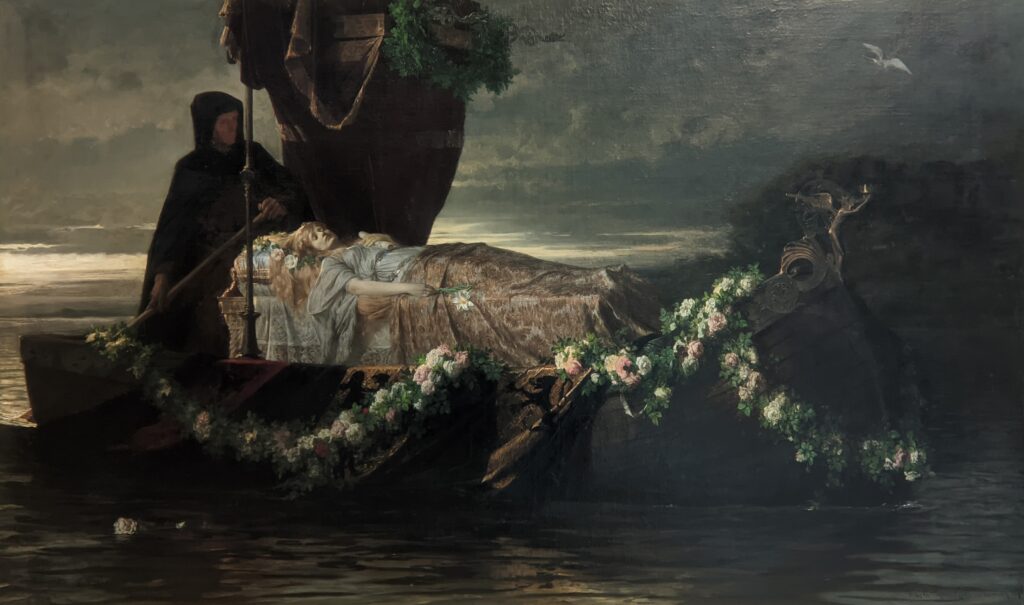



The Great Chicago Fire of 1871 Led to a Revolution in Architecture
Following a devastating fire in 1871 and a second blaze in the hot summer of 1874, many architects relocated to Chicago to participate in a great rebuilding, which led to the construction in 1885 of the world’s first skyscraper — the Home Insurance Building — the first tall building to be supported both inside and out by a fireproof structural steel frame.
Another major change that resulted from the two fires was the use of terra cotta as building cladding. In 1878, the Northwestern Terra Cotta Company was established here to mass produce this mixture of clay and sand, baked rock-hard at 2000-degree Fahrenheit temperatures to obtain a fireproof material that could also be molded into ornamental, three-dimensional forms. The construction of steel-framed buildings — a new technology pioneered in Chicago — combined with terra cotta that could be formed into myriad architectural styles led to historic structures such as the Wrigley Building and the neo-Gothic Tribune Tower (finished in 1924 and 1925, respectively) and Chicago became known worldwide as the “Birthplace of Modern Architecture.”
“Eventually, I think Chicago will be the most beautiful great city left in the world.”
Frank Lloyd Wright
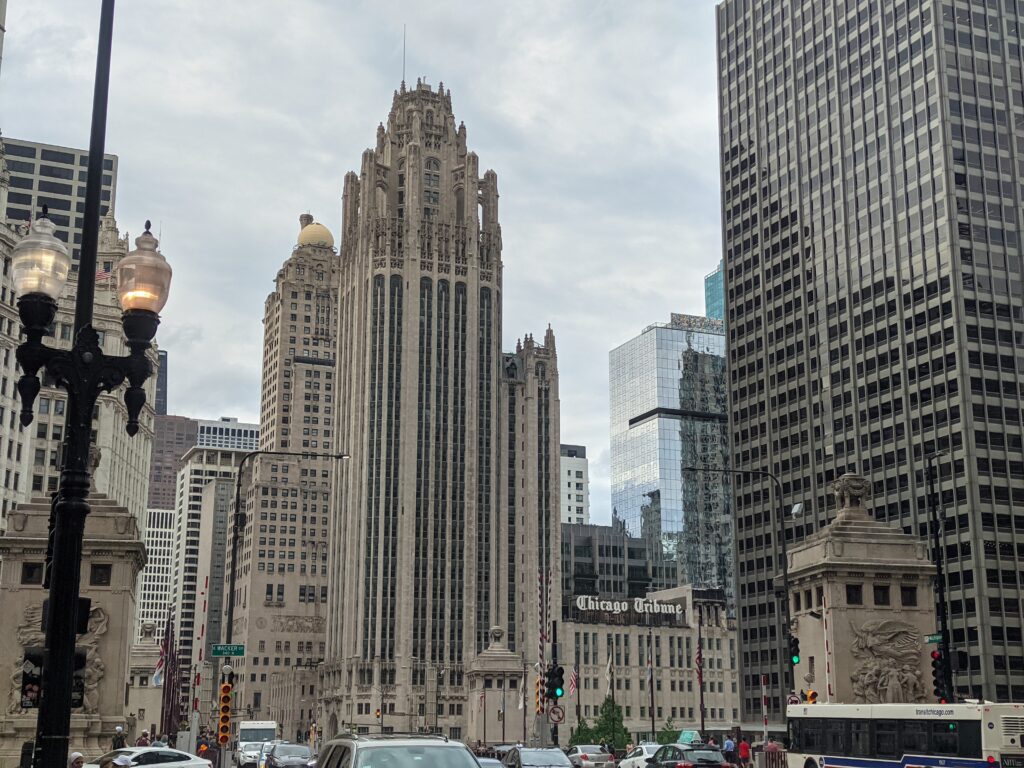

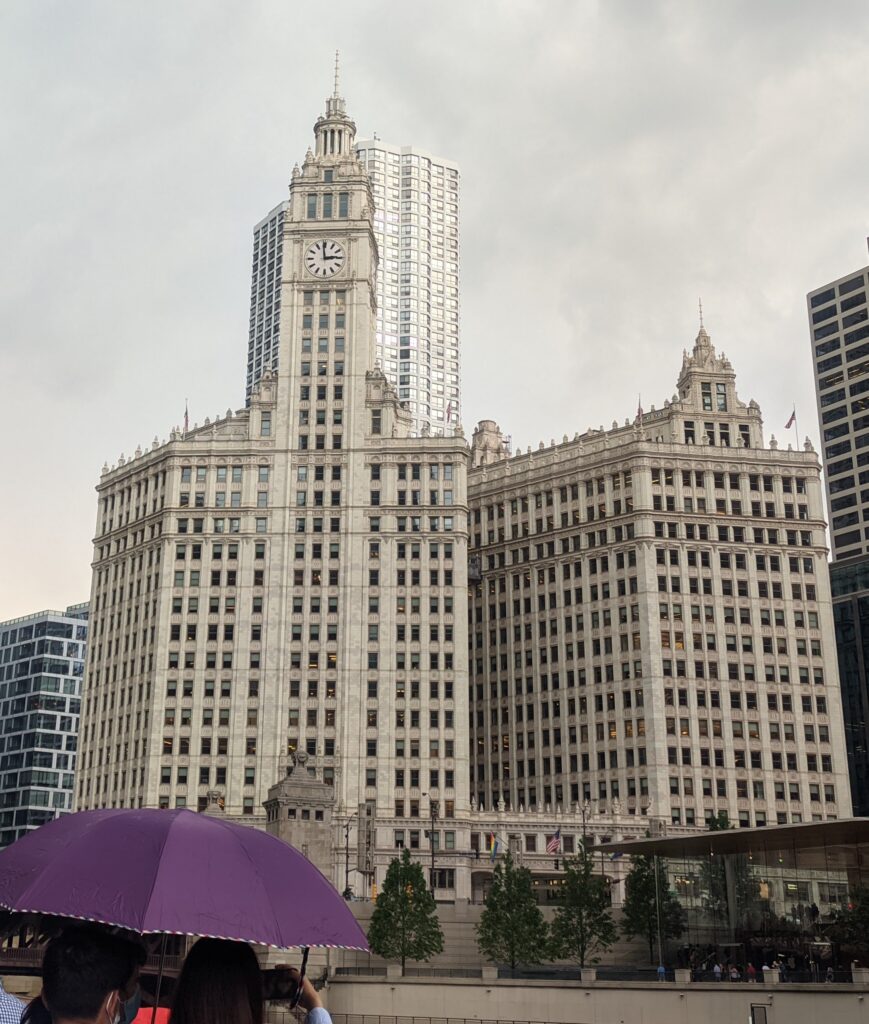



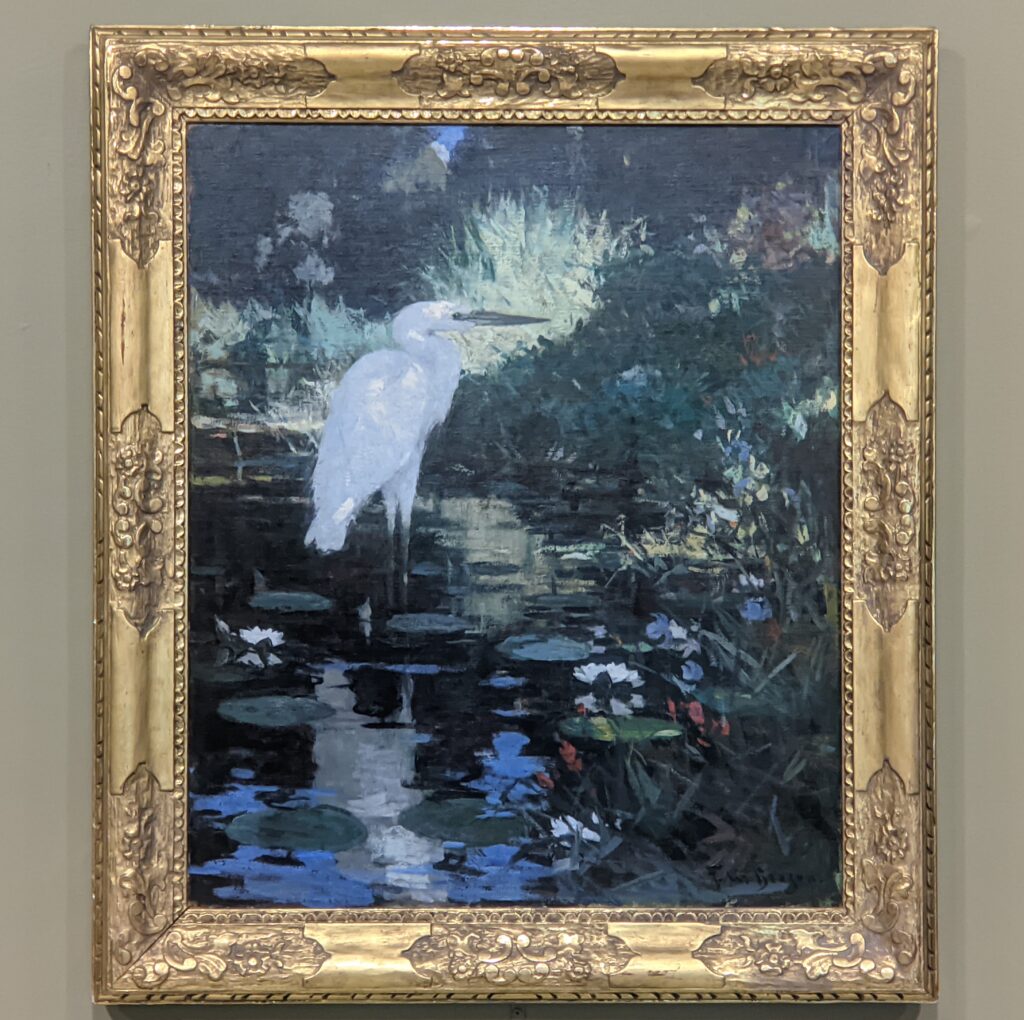



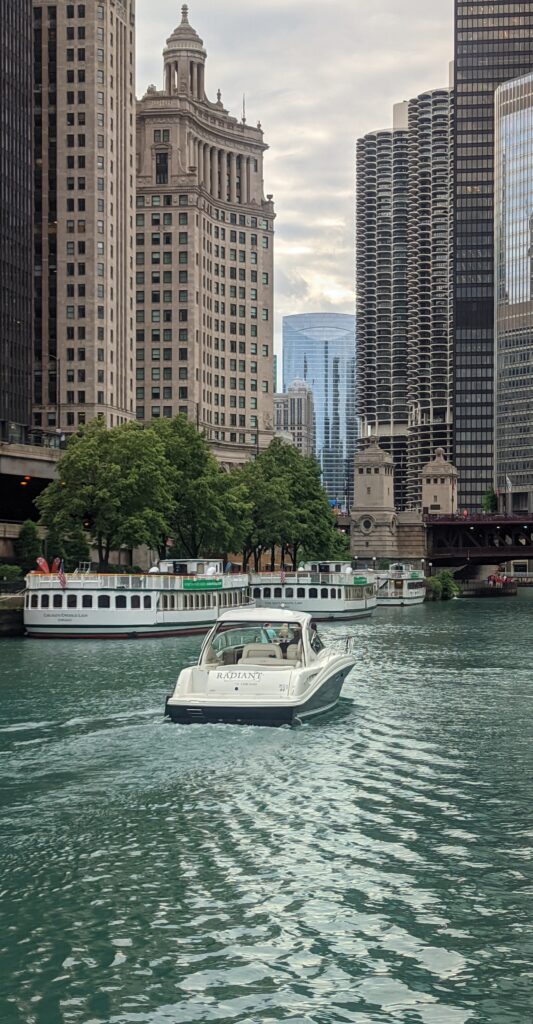

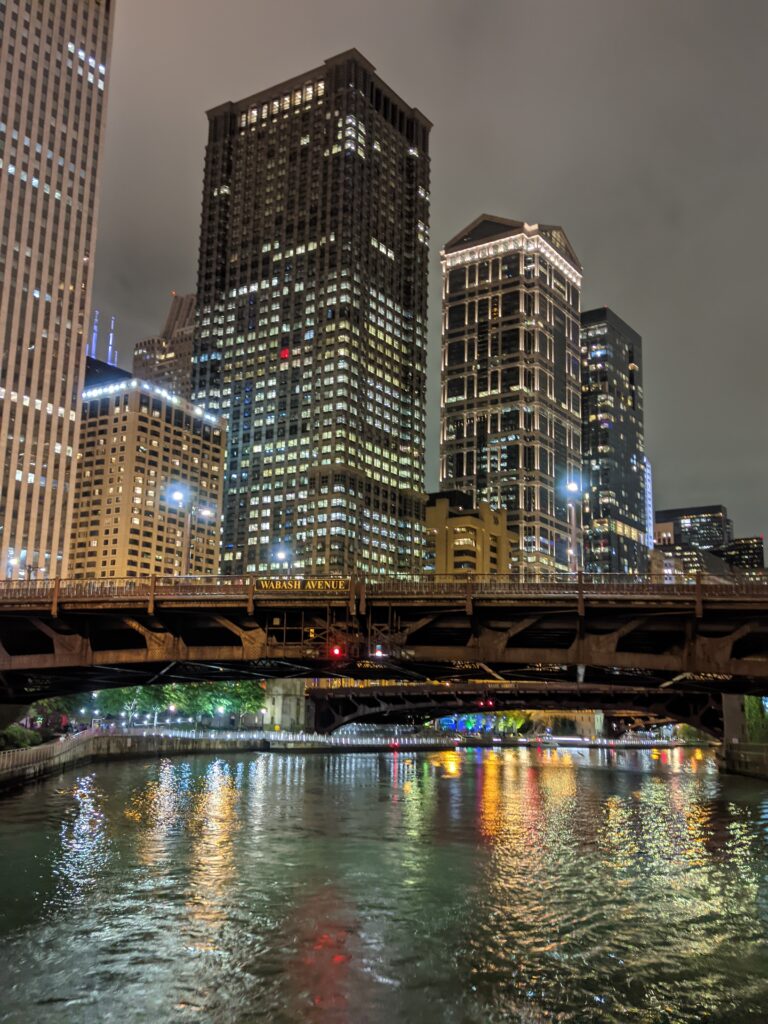



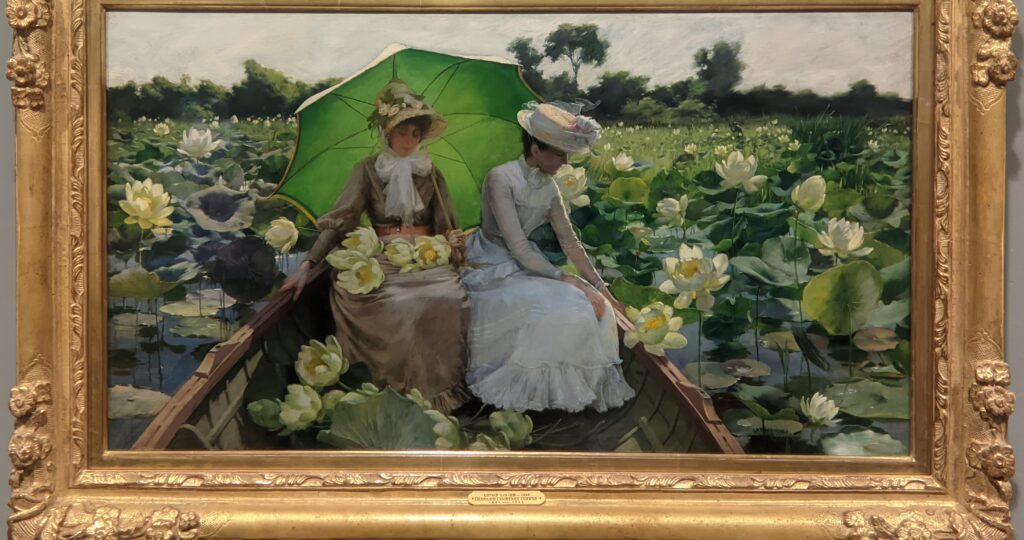



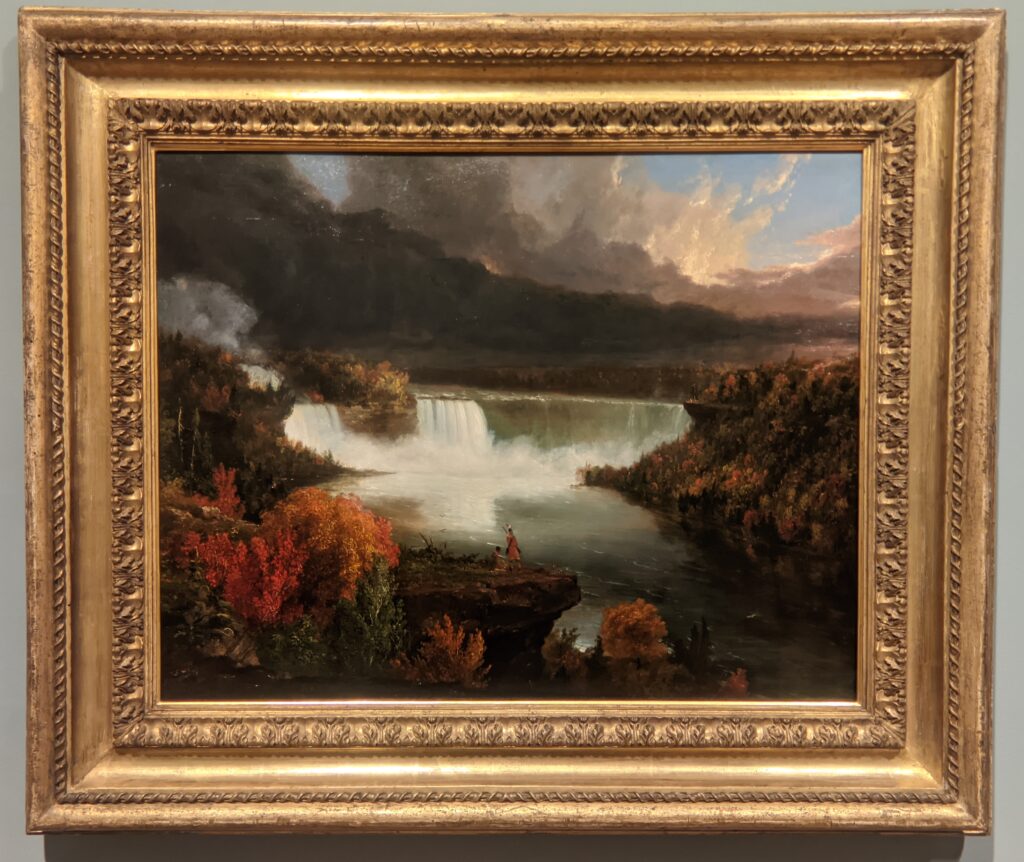

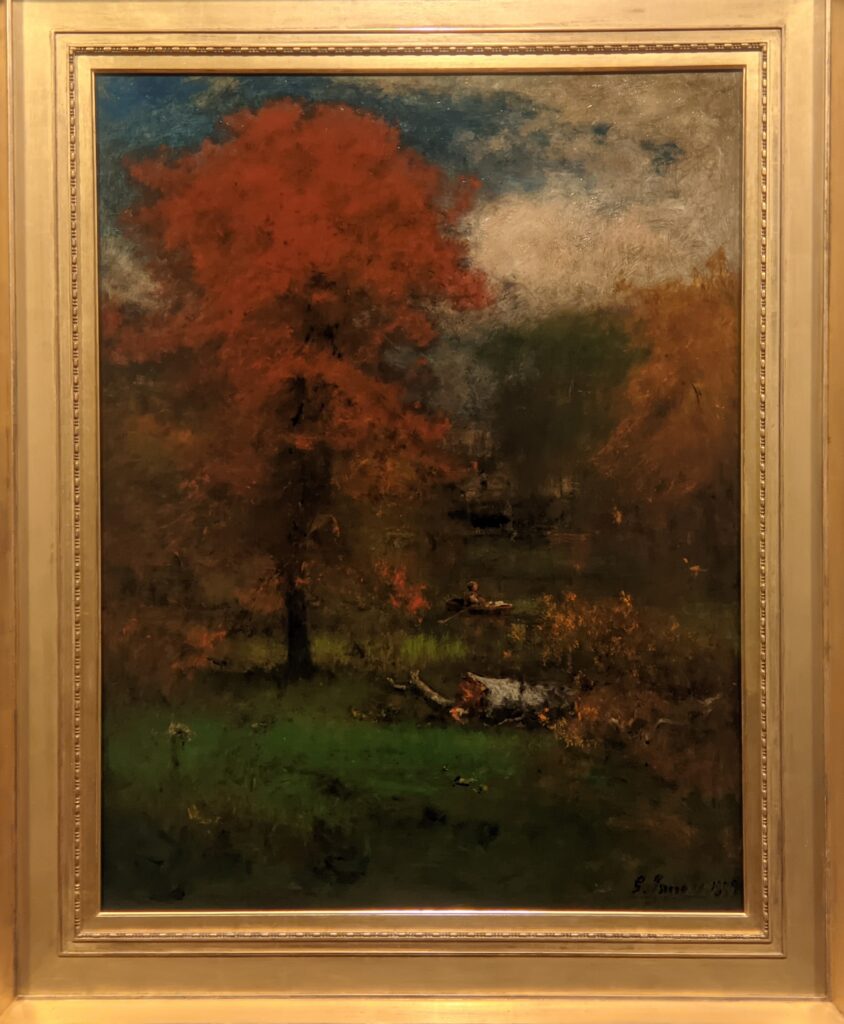



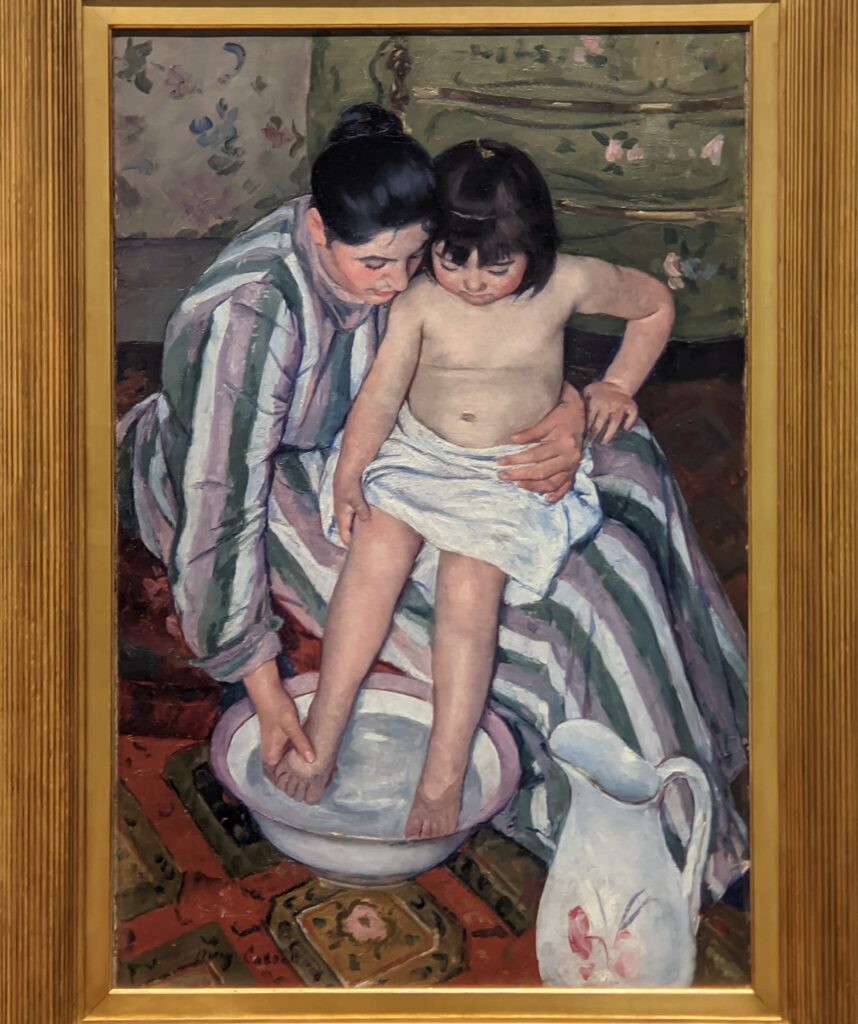



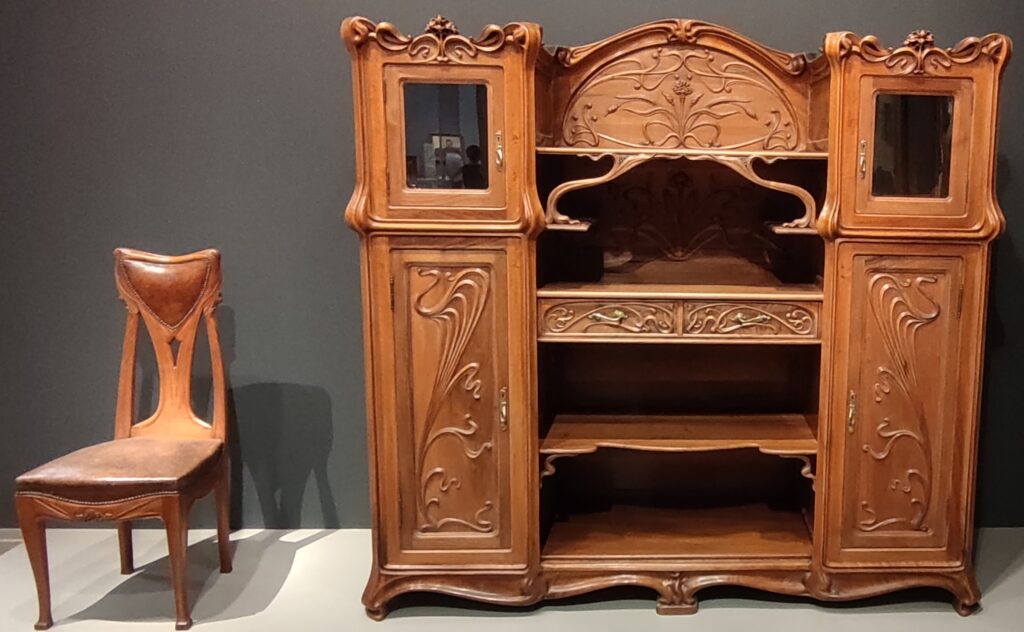



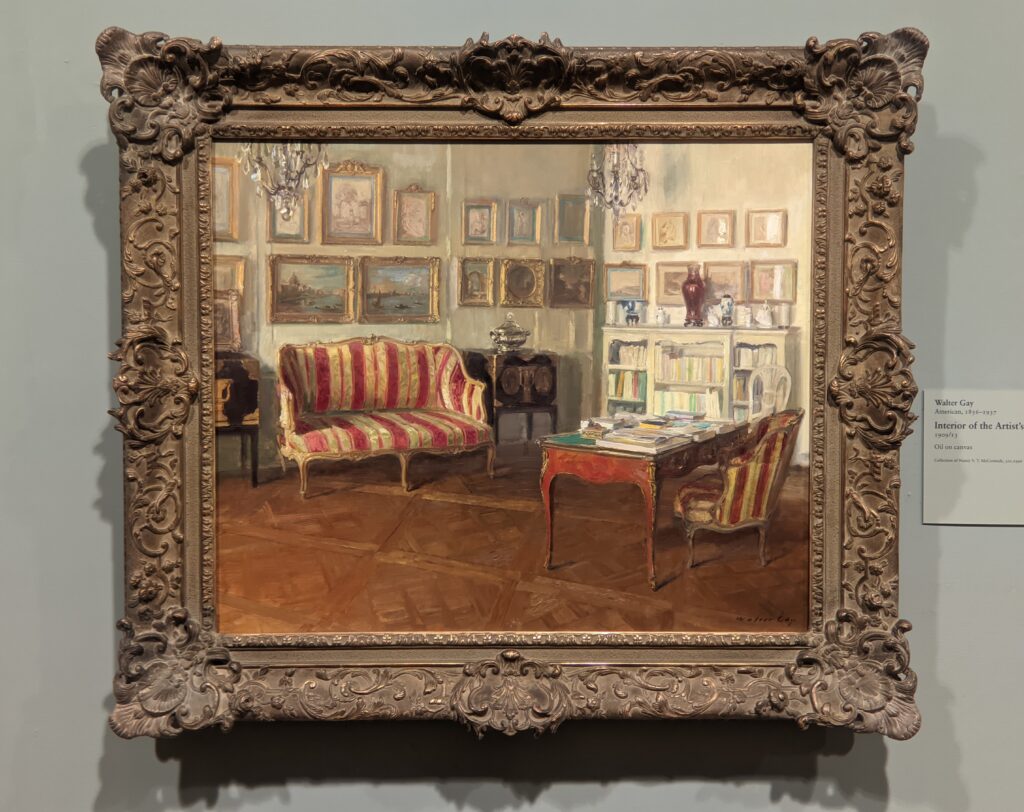

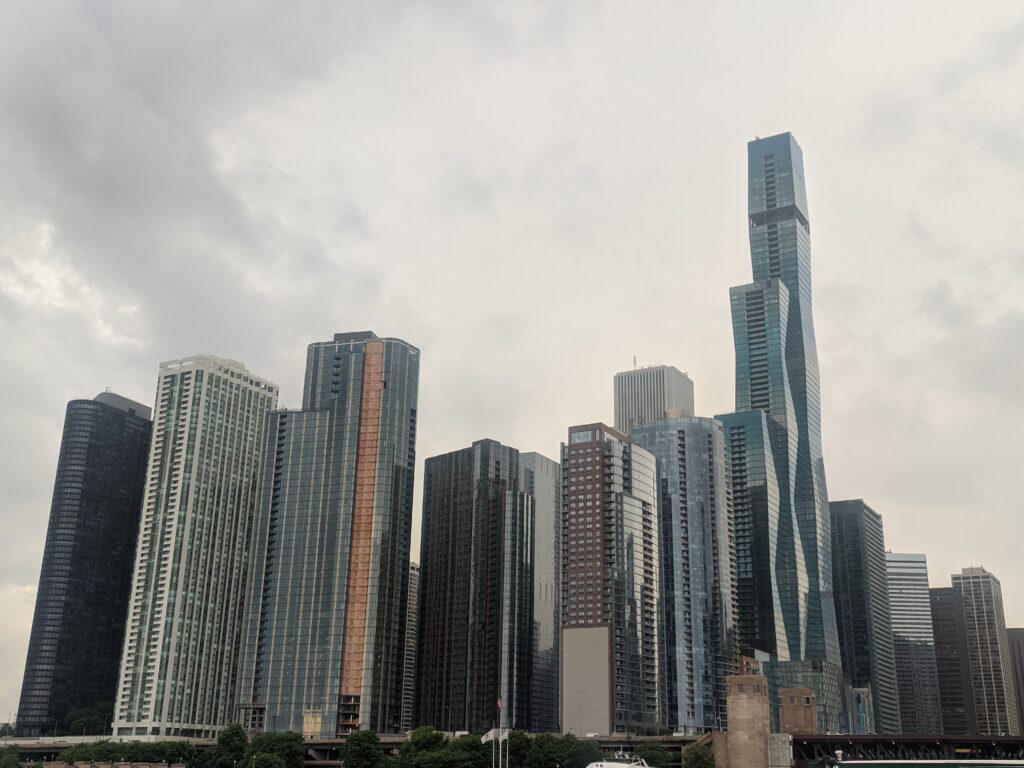

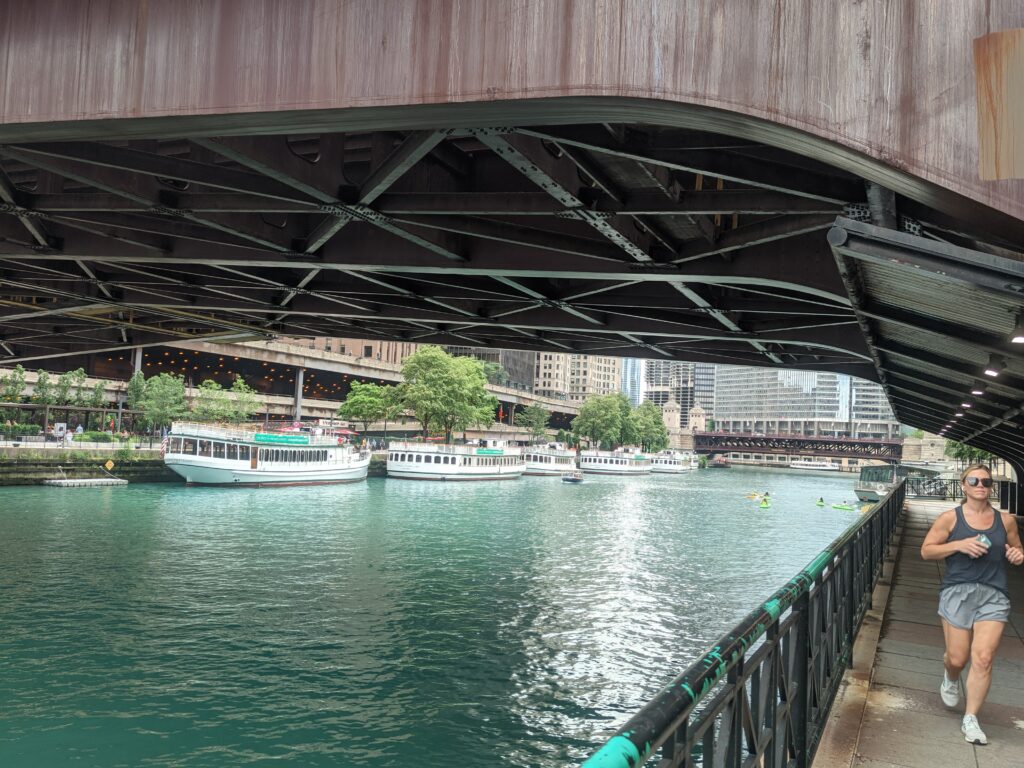

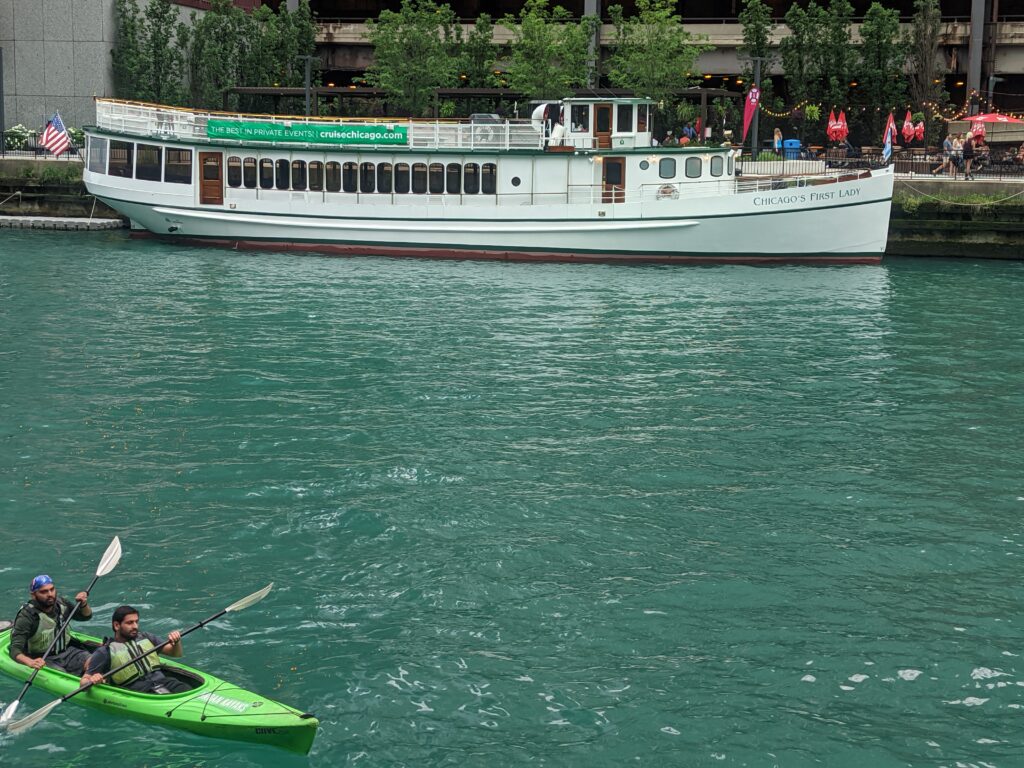

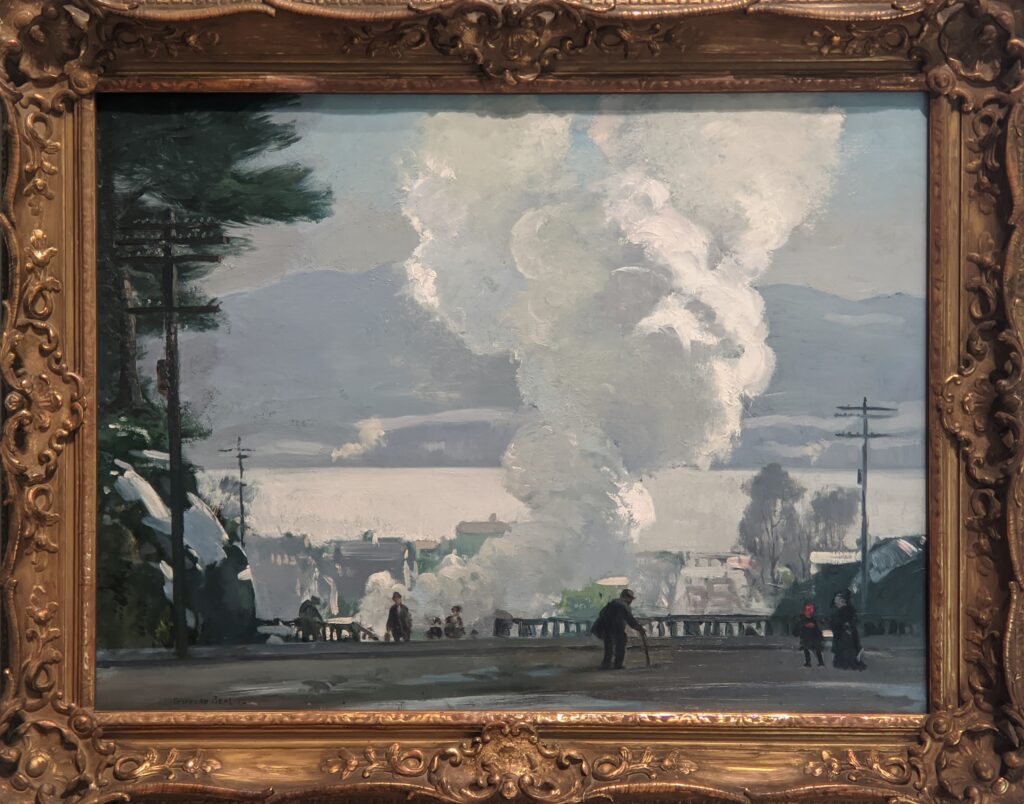

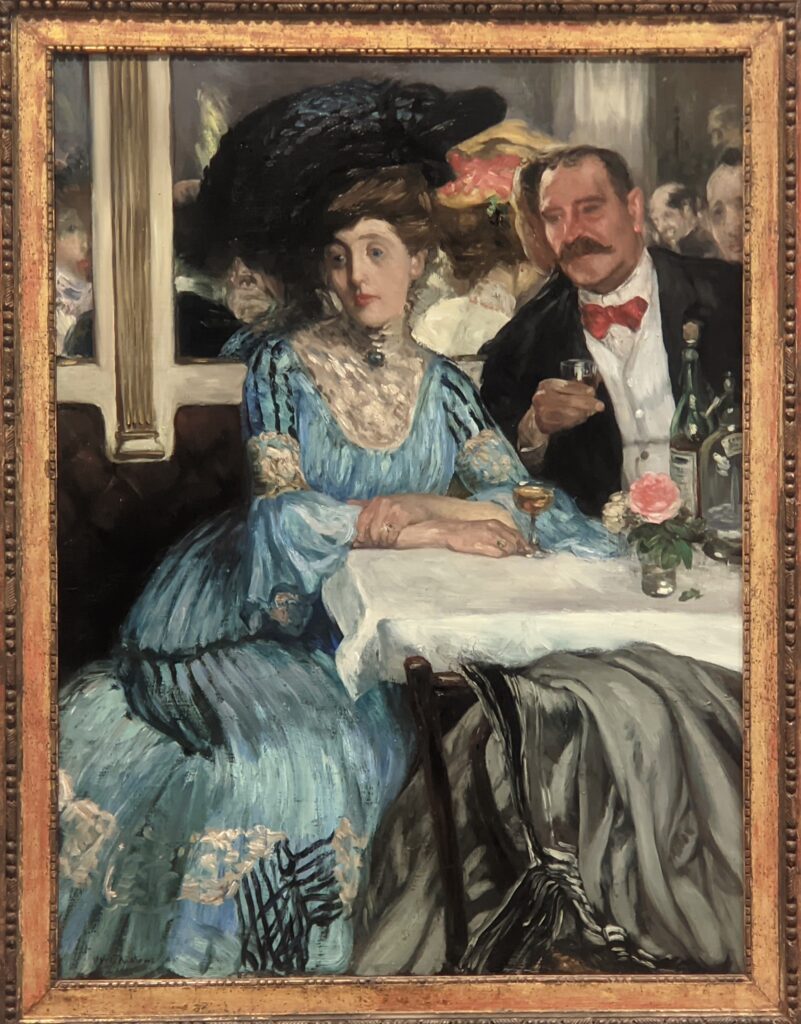



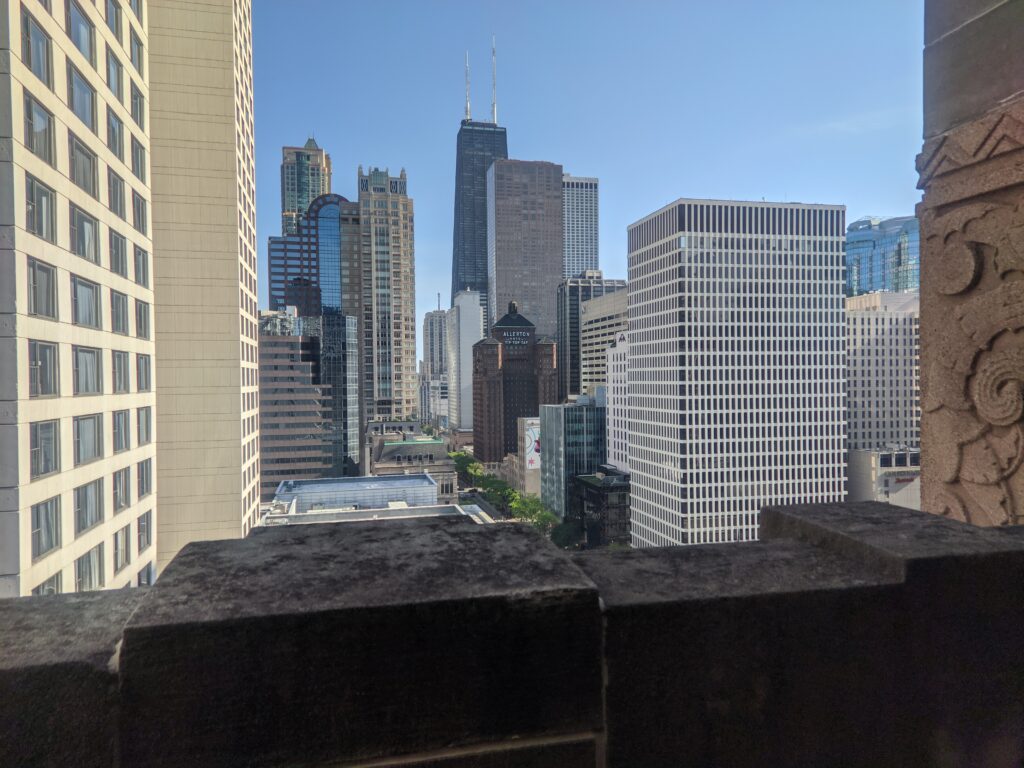



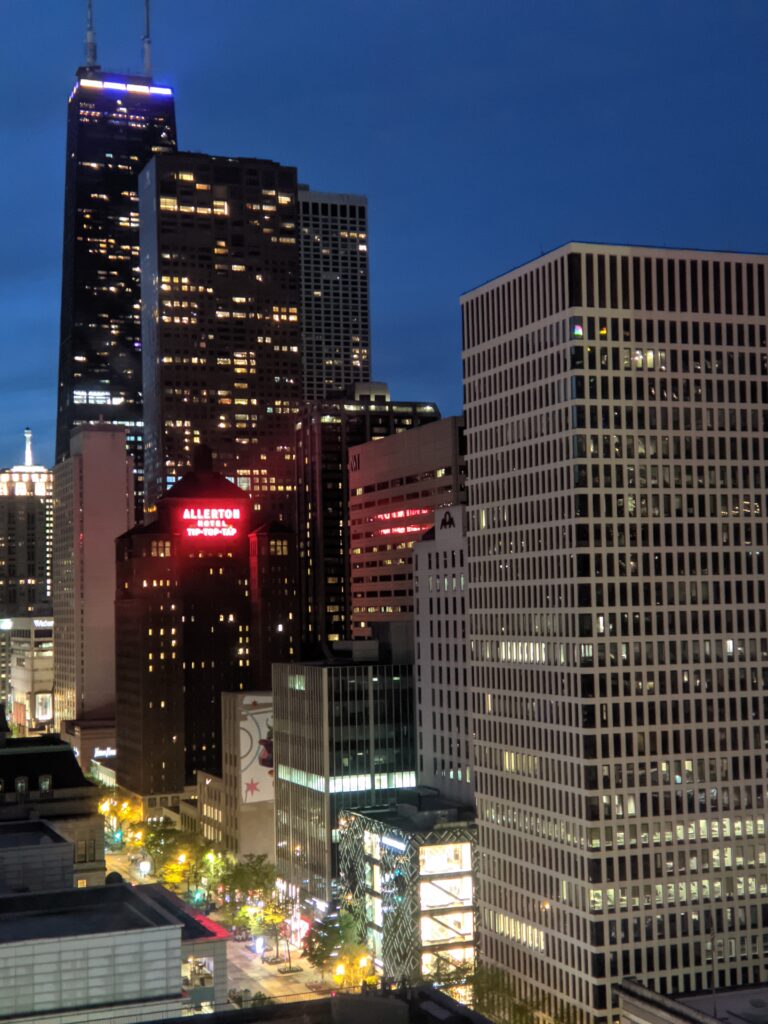

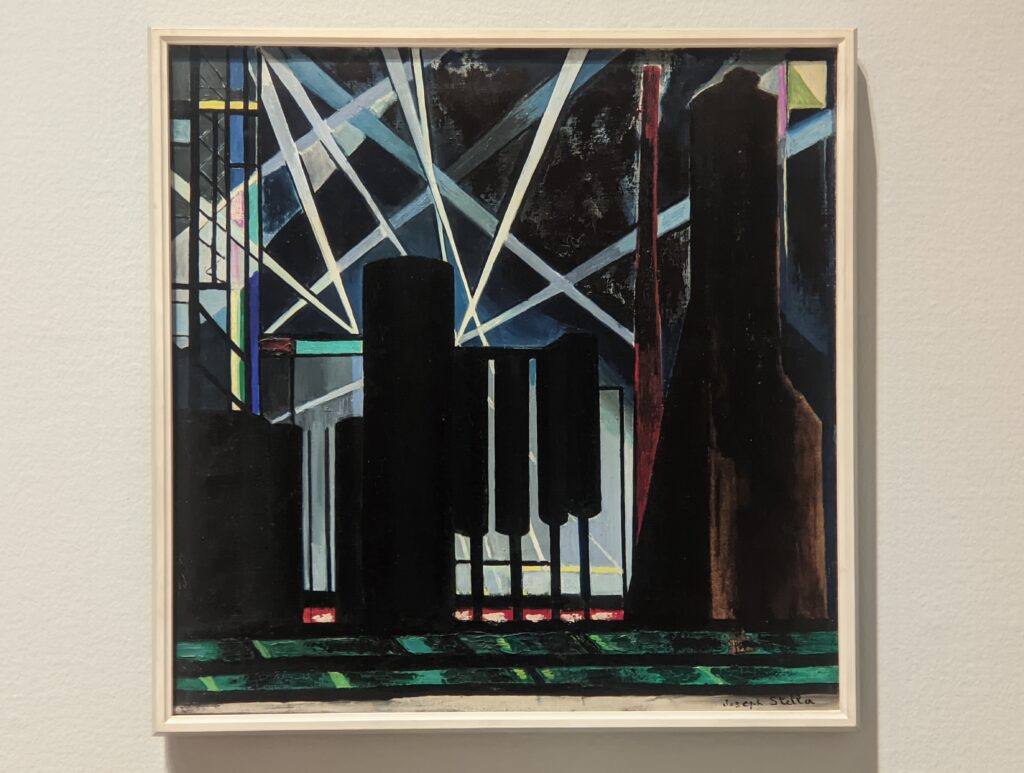

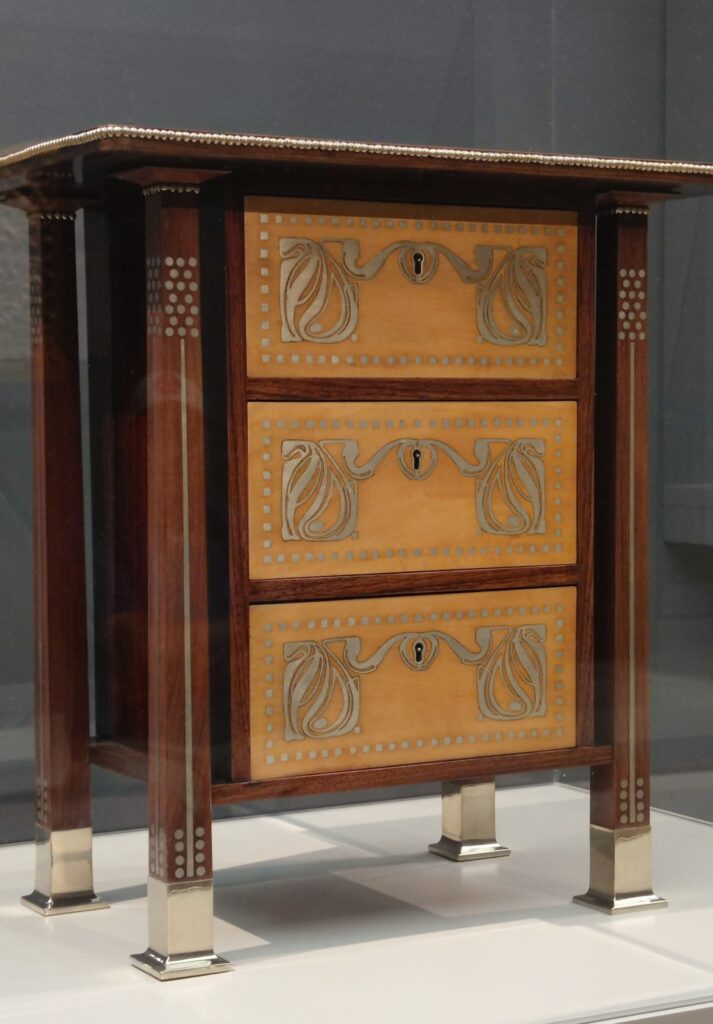



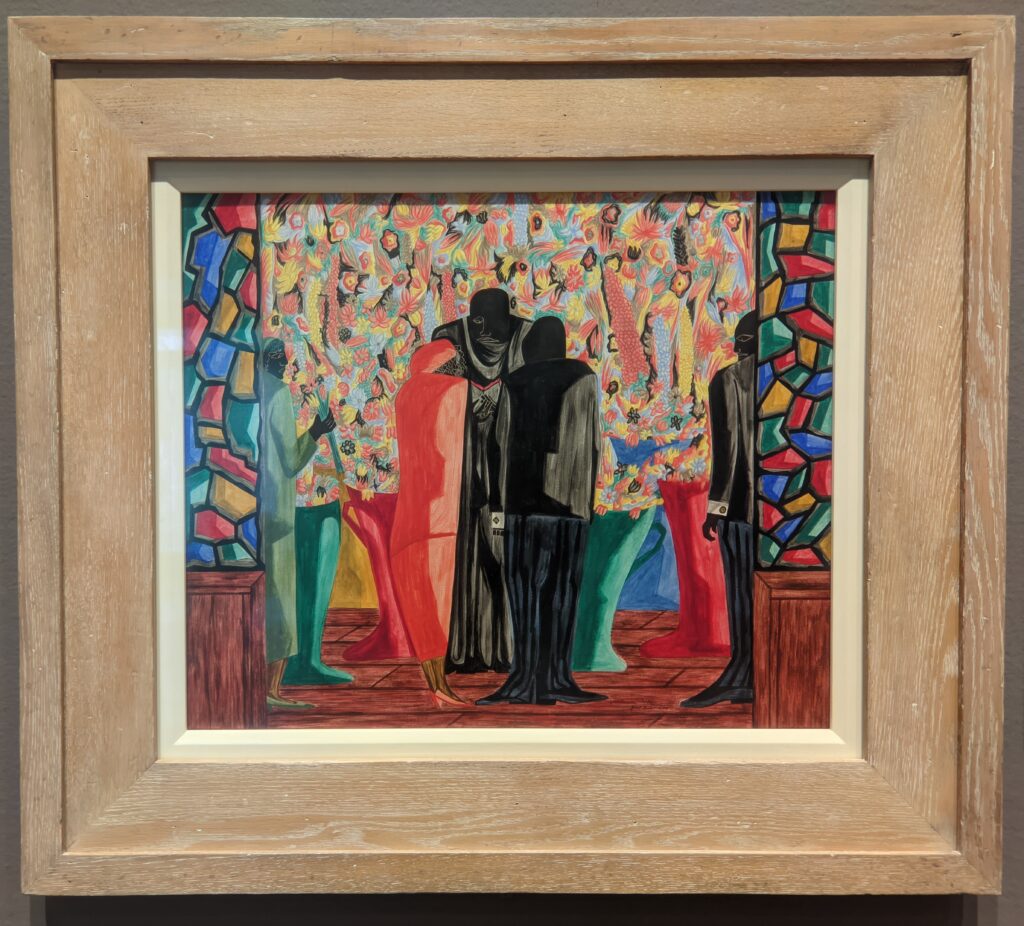

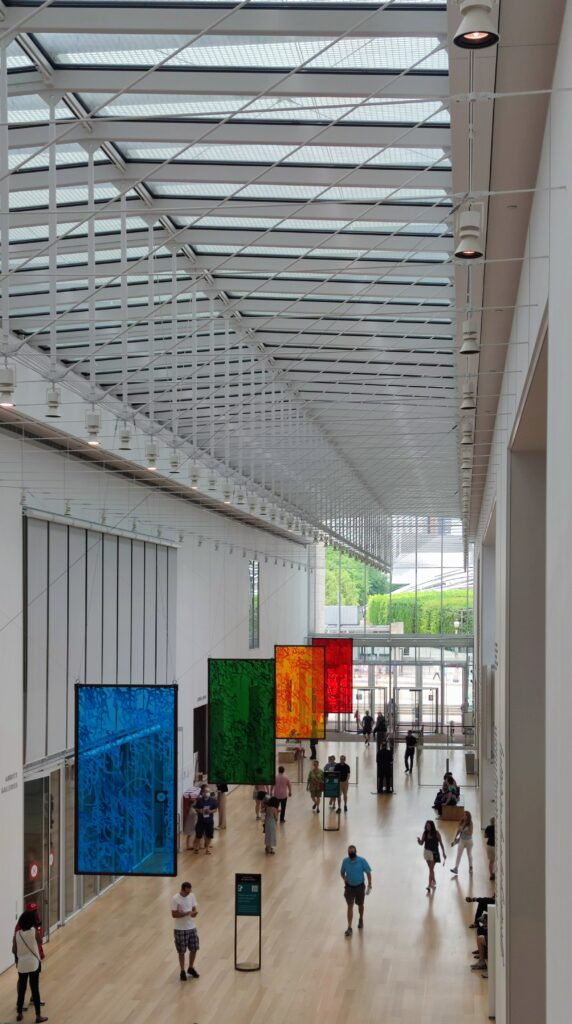

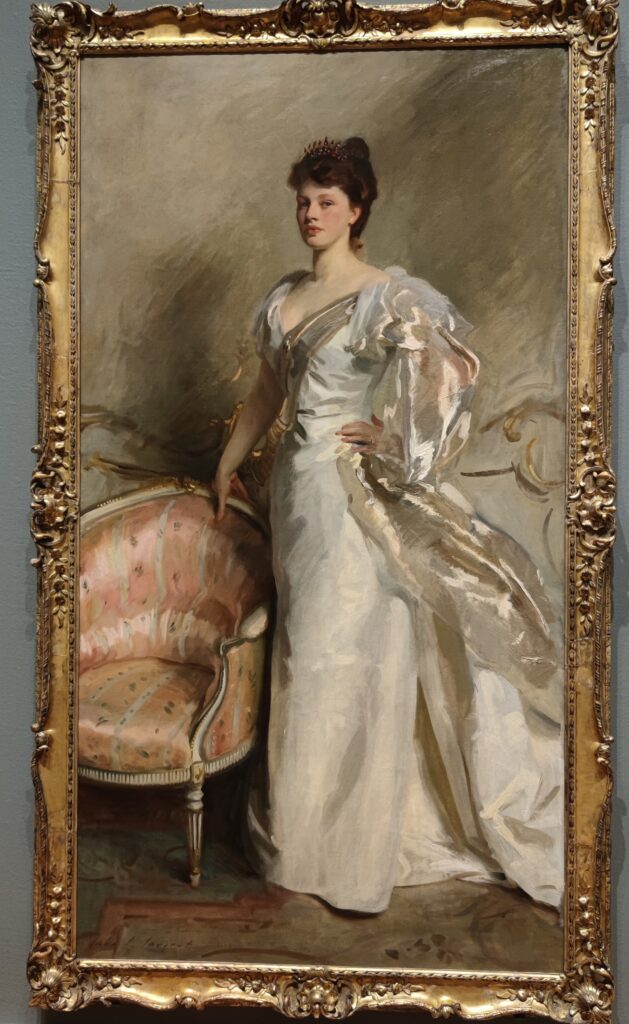

Art Lovers TIP: For quicker entry into the Art Institute of Chicago, enter through the north entrance (pictured above, at left) at 159 East Monroe Street. This is the nearest entrance to the Modern Wing and the Modern Café, which offers lighter fare and beverages. In addition, the Member Bar at Terzo Piano is nearest the Monroe entrance/exit, where Museum Members and their guests are offered free coffee and tea, plus excellent city views!
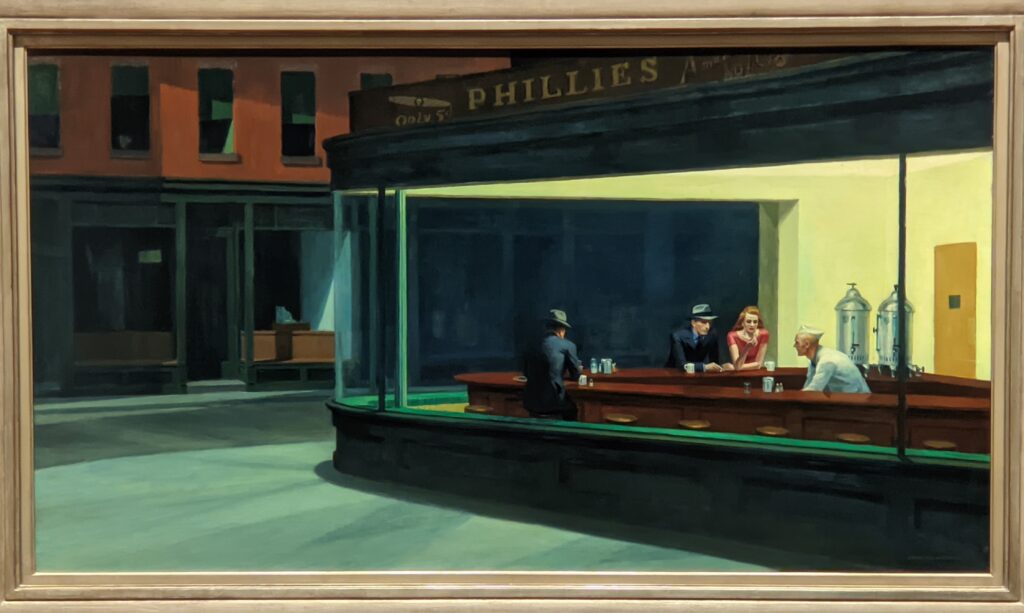

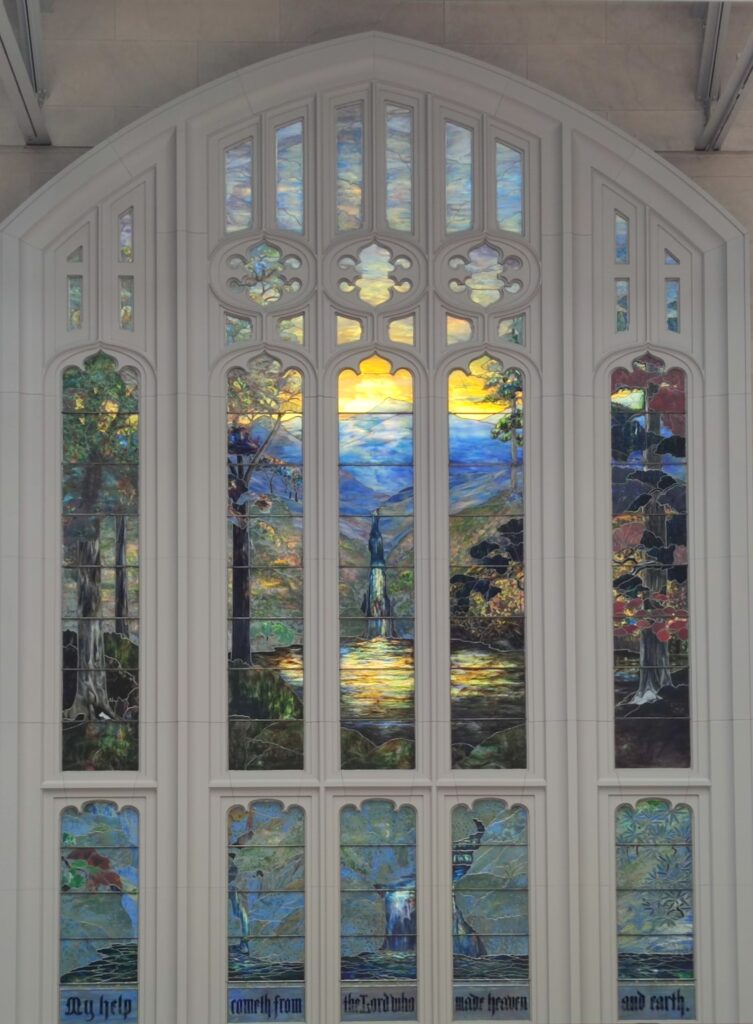

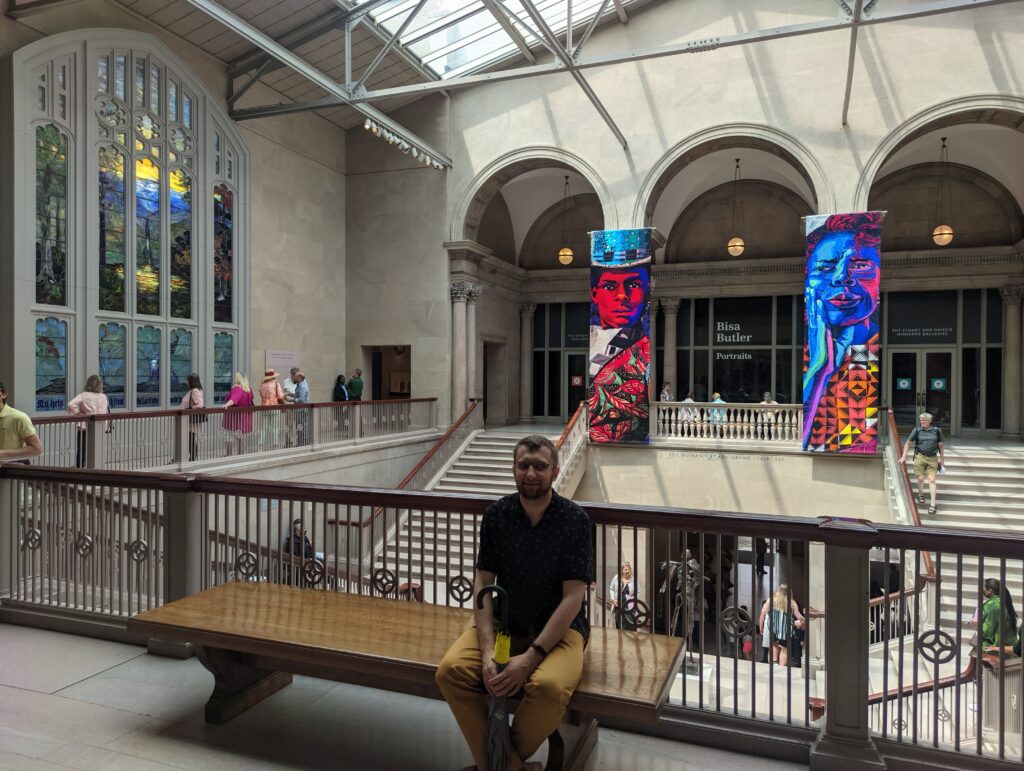







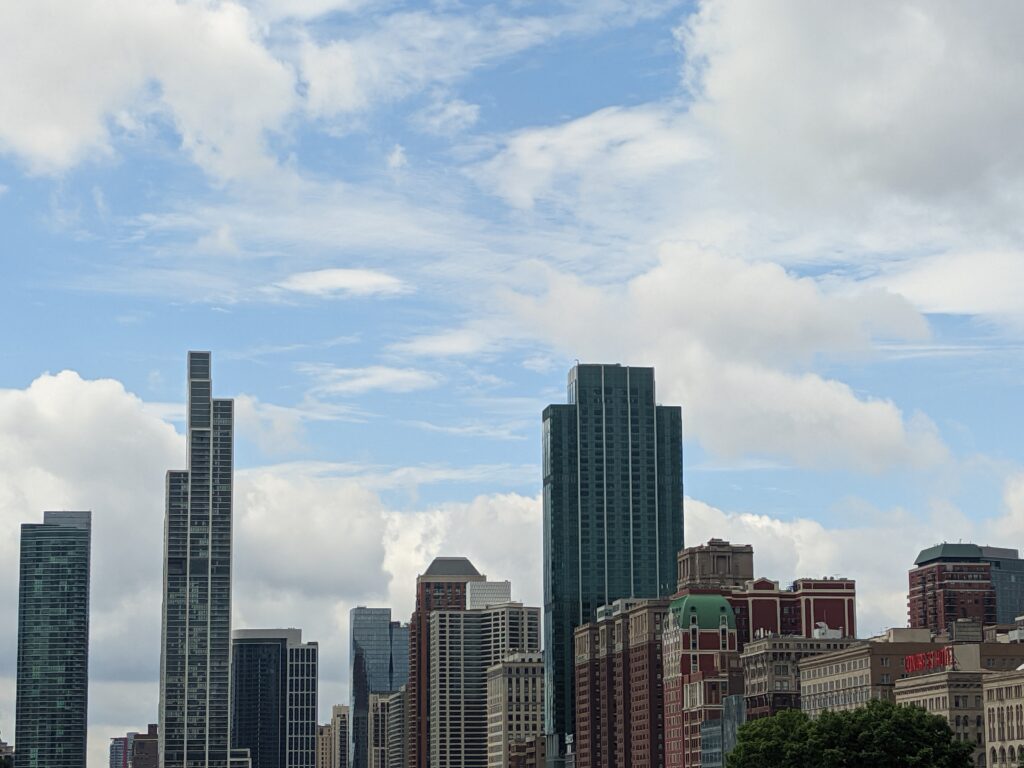

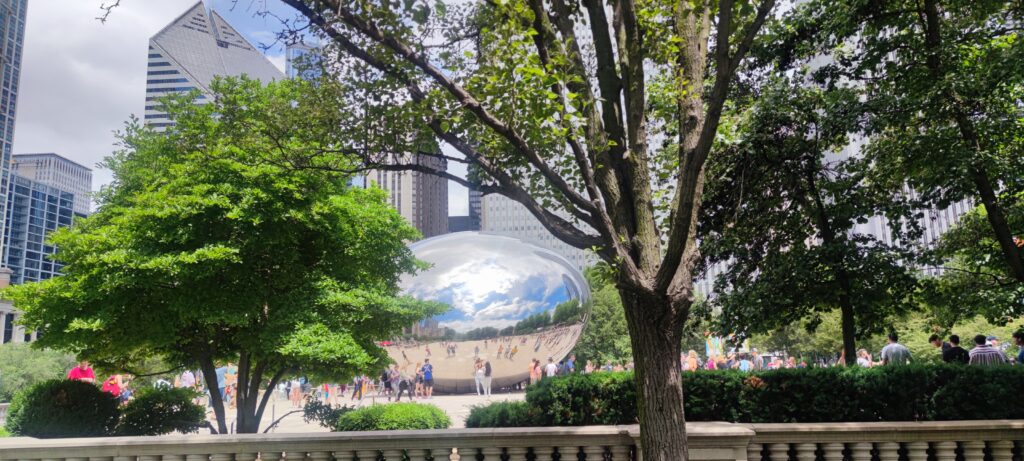



Art Lovers TIP: If you enter/exit the Museum through its main entrance, 111 South Michigan Avenue (above), please plan to visit the unique Thorne Miniature Rooms on the Lower Level.
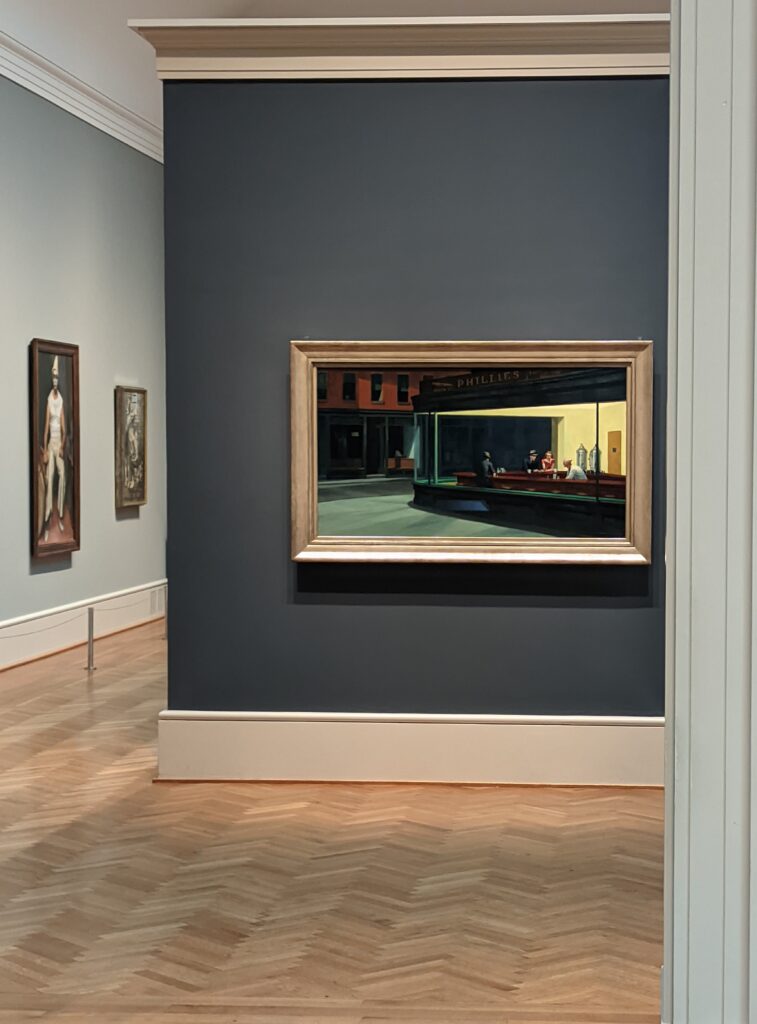

The Art Institute
With a footprint of nearly 1,000,000 square feet and nearly 300,000 works of art, the Art Institute of Chicago is surpassed in importance and size only by the Metropolitan Museum of Art in New York. Founded in 1879, this museum is one of the oldest in the U.S.A. and one of the 15 largest in the world.
After visiting rooms devoted to art from the Americas, including Edward Hopper’s masterpiece entitled “Nighthawks” (above), we suggest you devote most of your time to the collection of European paintings and sculptures. The Art Institute of Chicago’s selection of Impressionist and Post-Impressionist paintings is arguably the finest in the U.S.A.
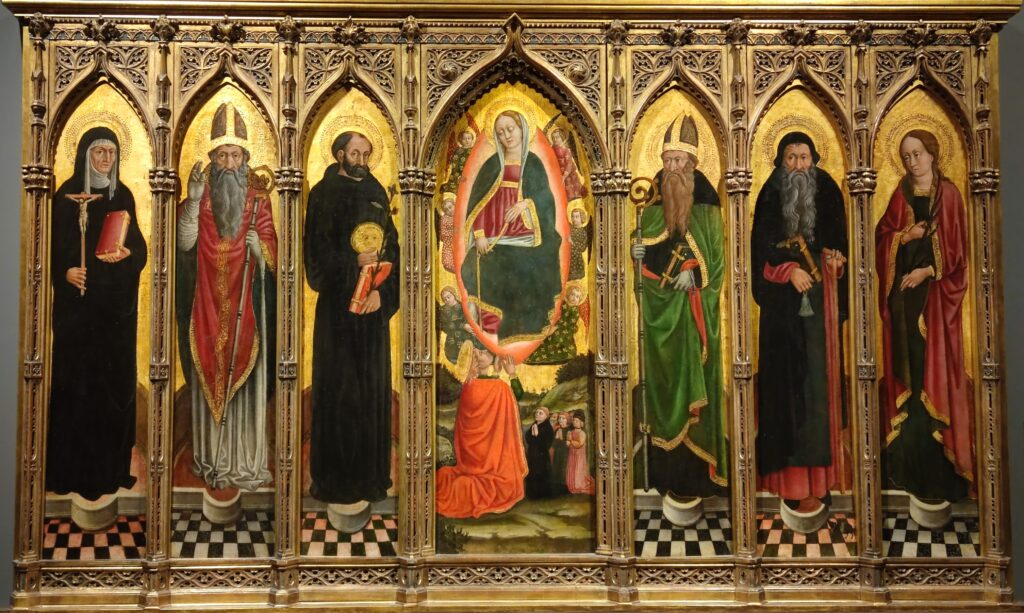

European Paintings




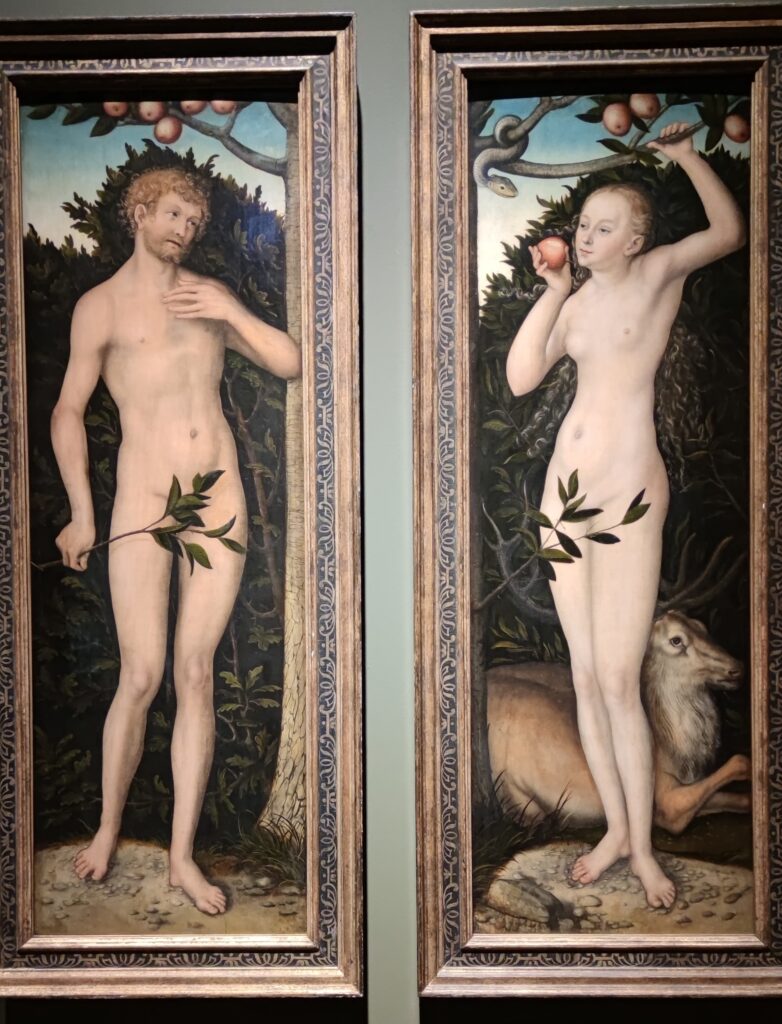

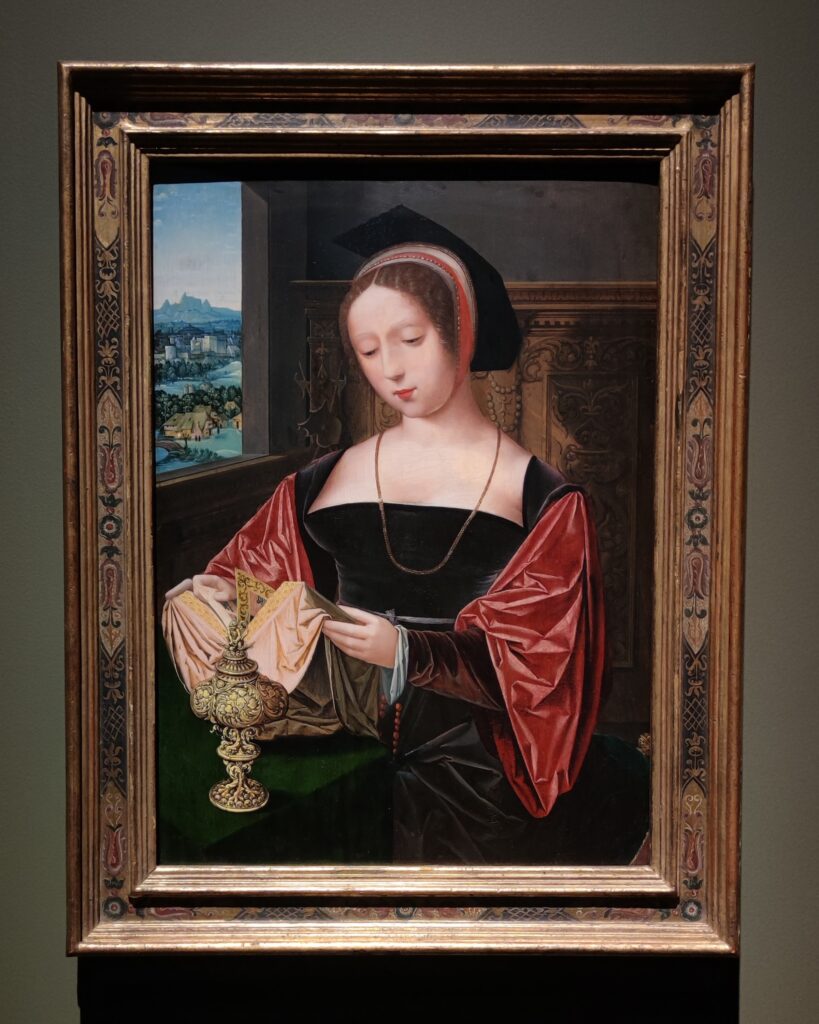







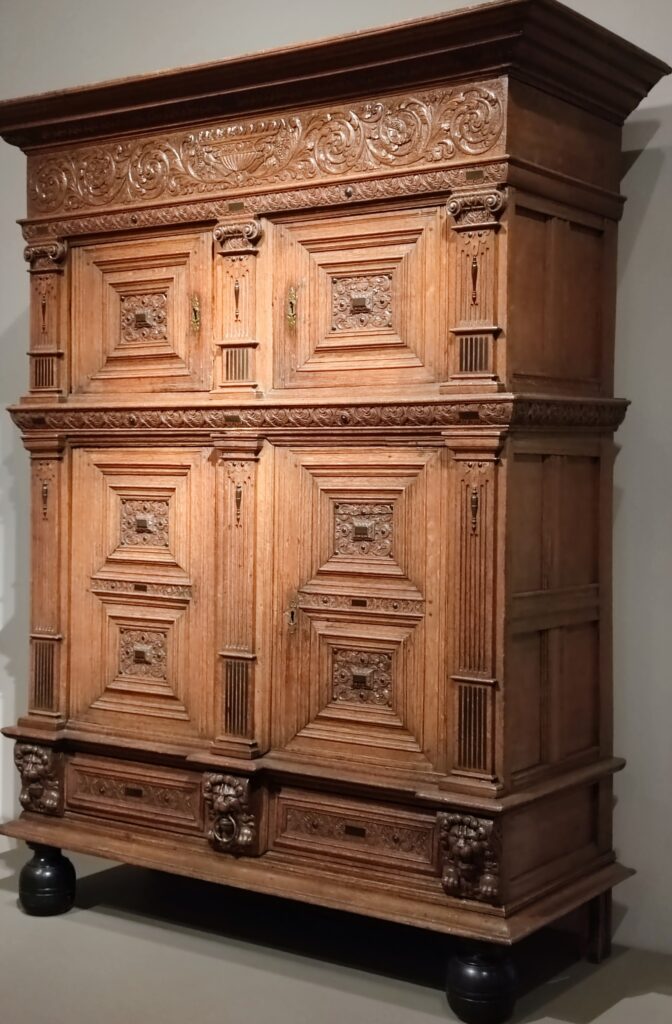

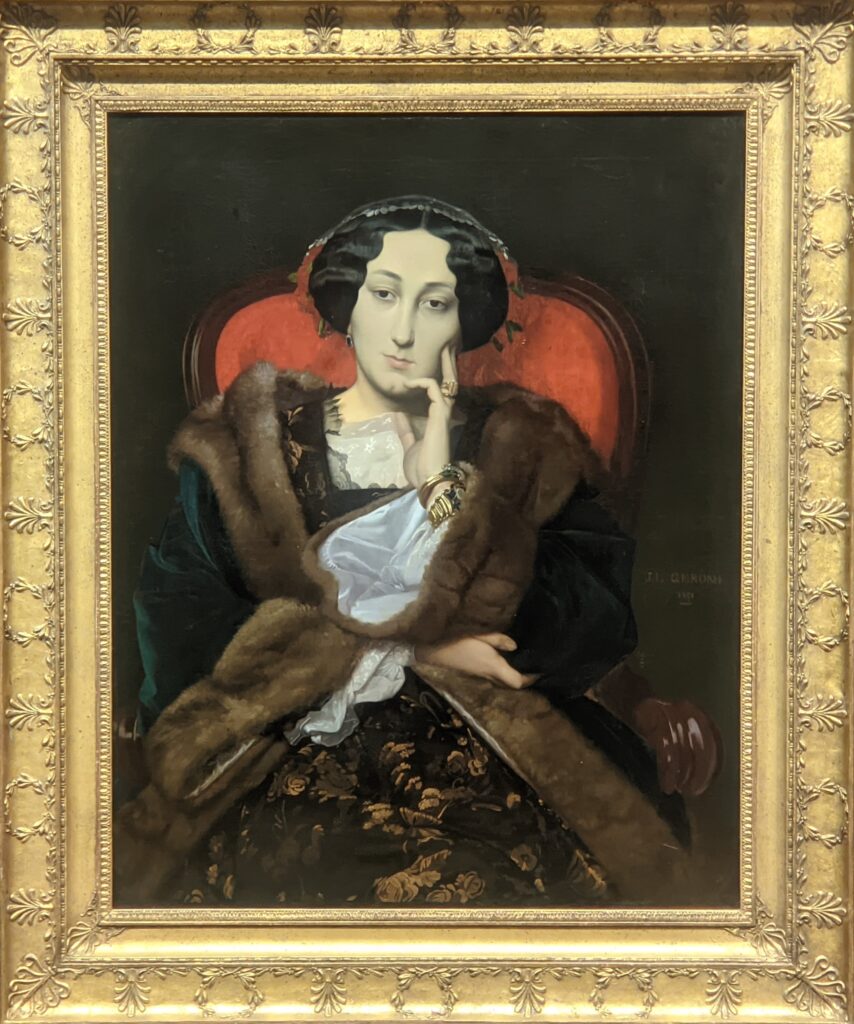



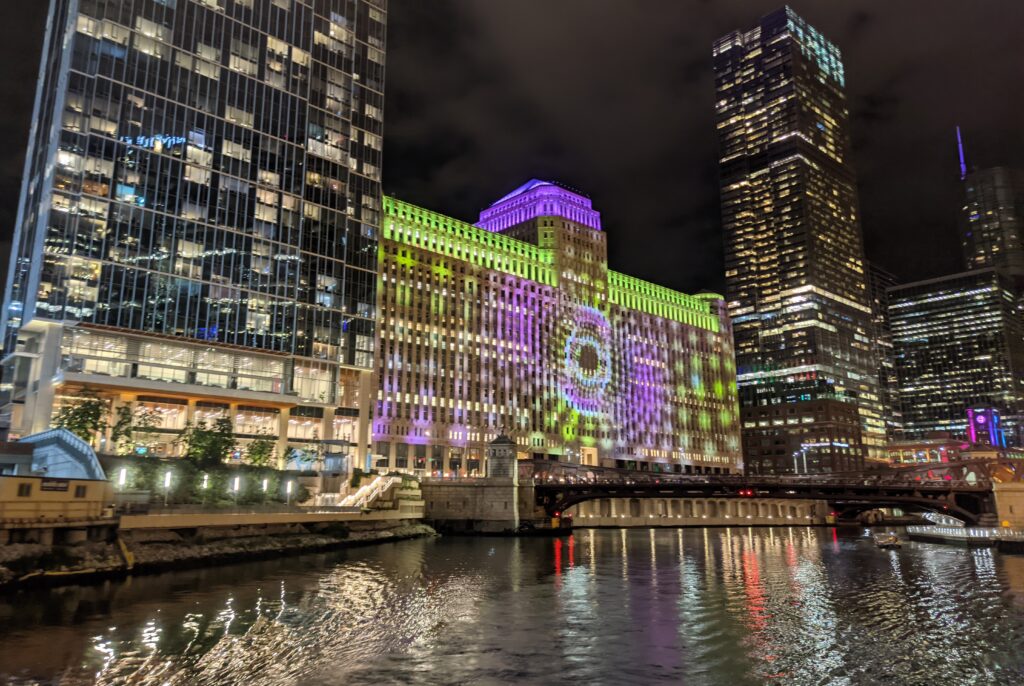

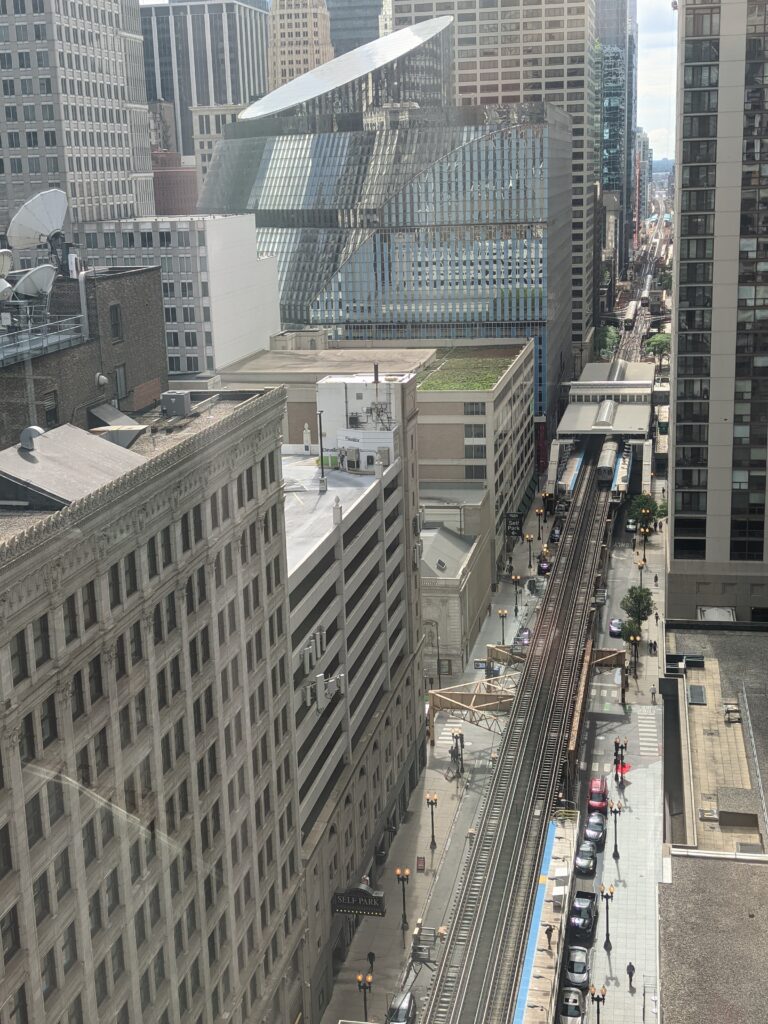

Chicago serves as the hub for the United States’ national passenger railroad company, AMTRAK, and has long been the most important interchange point for freight train traffic among the major railroads. The first “L” (elevated) train service began in Chicago in 1892 (three years before construction began on the first practical subway in Boston). Elevated trains did not require much digging, and there were concerns at that time in Chicago that the city’s swampy soil would not tolerate a subway system. Today, Chicago is the only U.S. city that still uses elevated trains (above) in its downtown area. The Willis Tower (pictured below, at right), a 110-story skyscraper, was the world’s tallest building when it opened in 1973, a title that it held for almost 25 years, and its observation deck called “Skydeck” receives more than 1.7 million visitors each year.
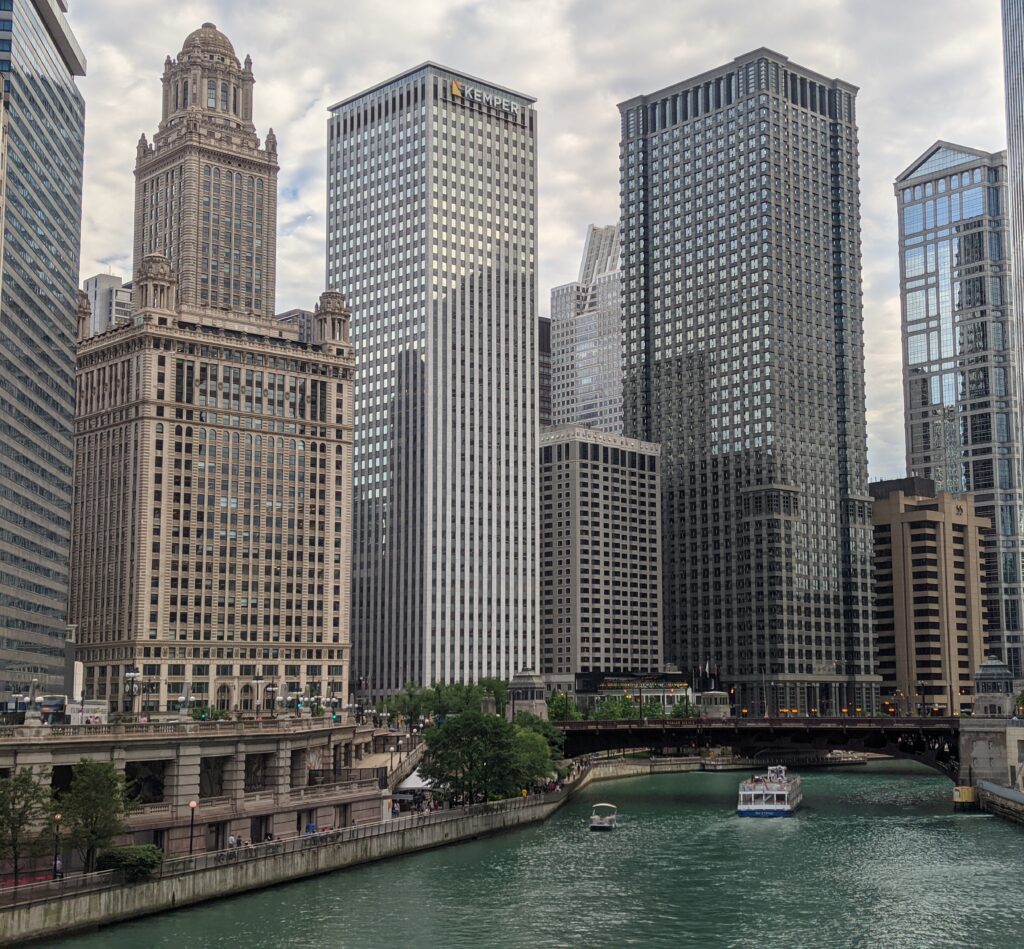

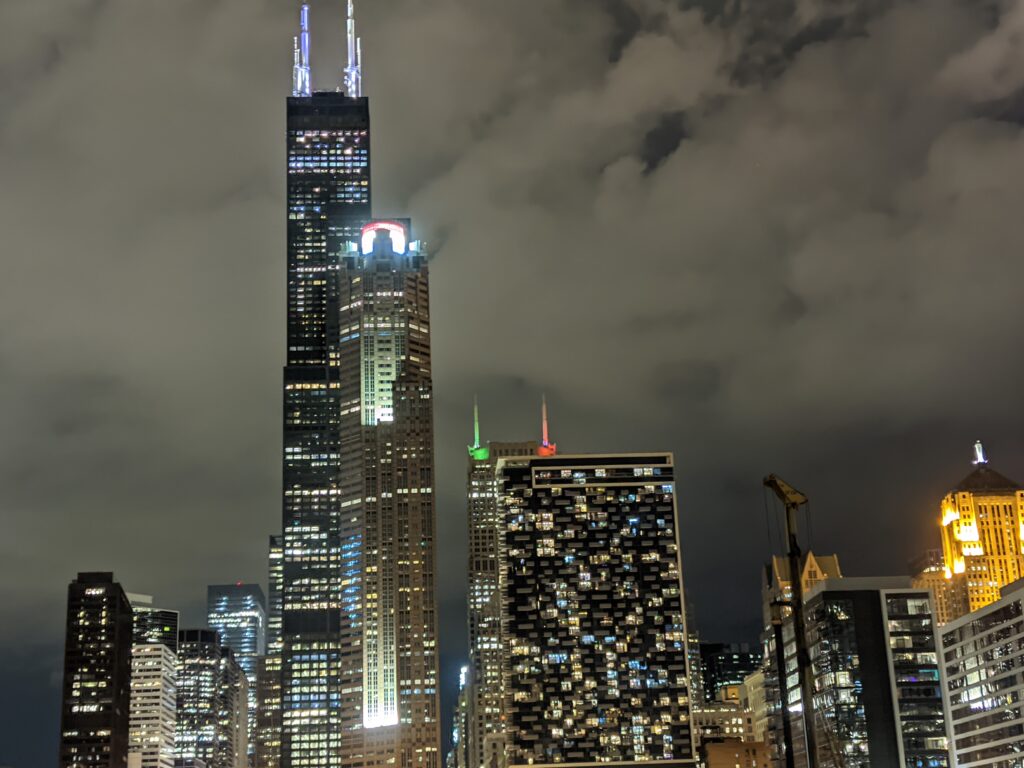

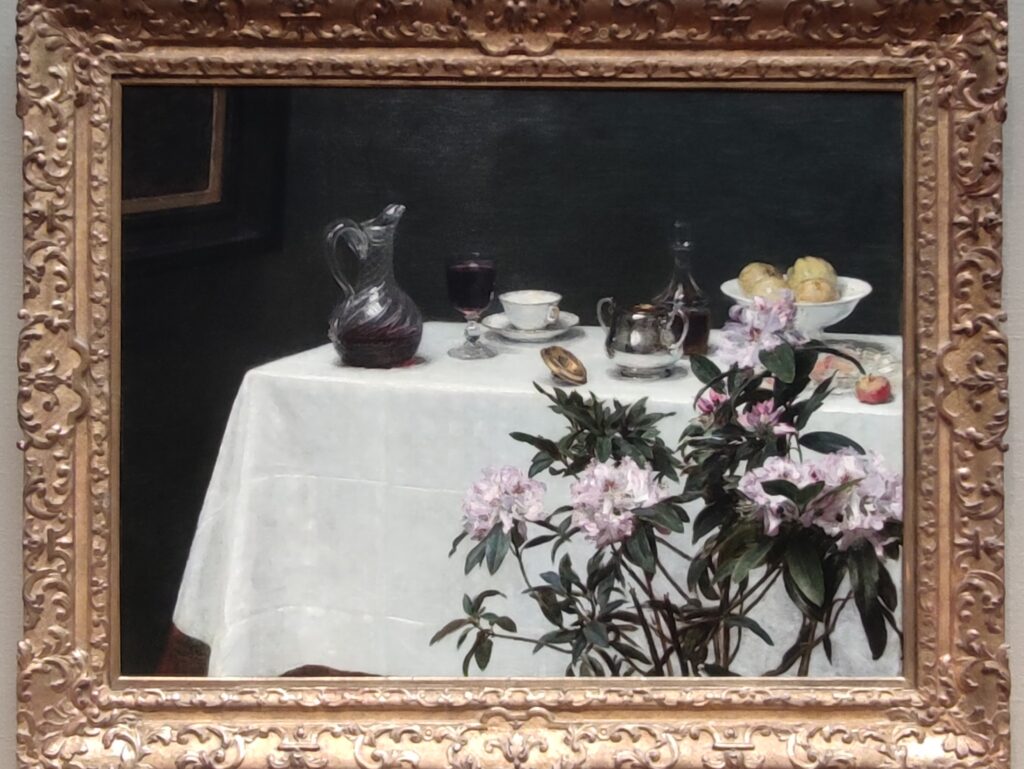



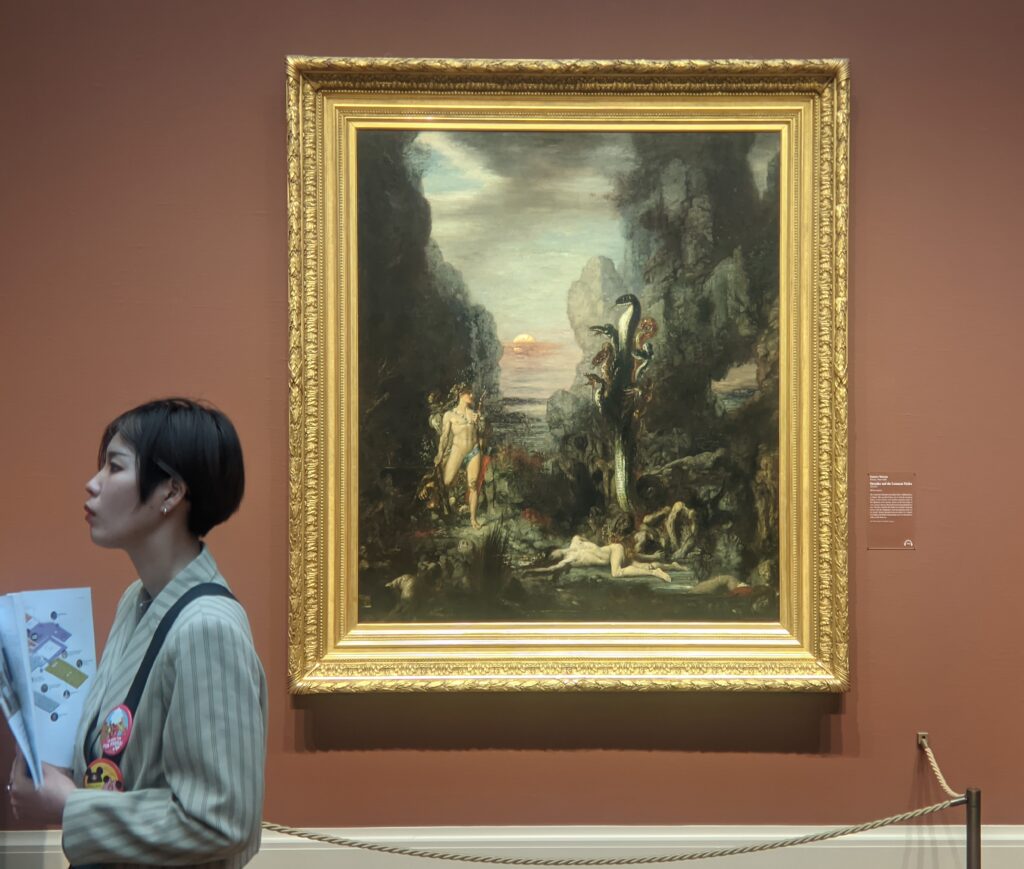



Chicago Possesses the Finest Impressionist Art Outside of Paris
The collection of French art assembled by the Art Institute is comparable to New York’s Metropolitan Museum of Art, and in our opinion surpasses the excellent displays of Impressionism you will find at the Museum of Fine Arts, Boston, the National Gallery of Art in Washington, D.C., and in Philadelphia where the Barnes Foundation owns the most complete — and, in terms of quality, the most uneven — Impressionist collection featuring 181 paintings by Renoir alone.
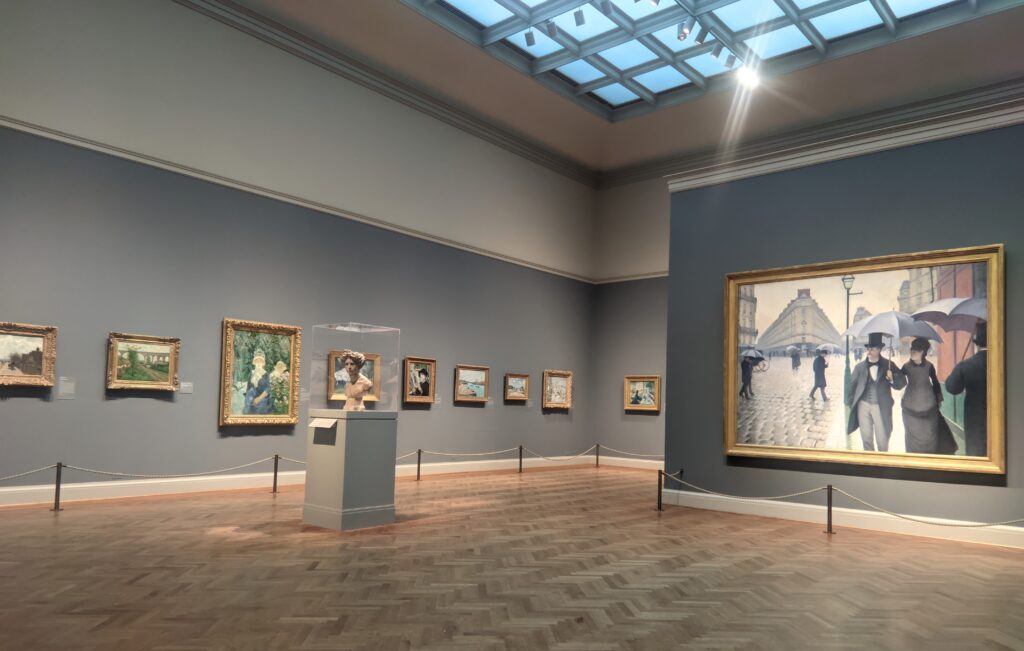



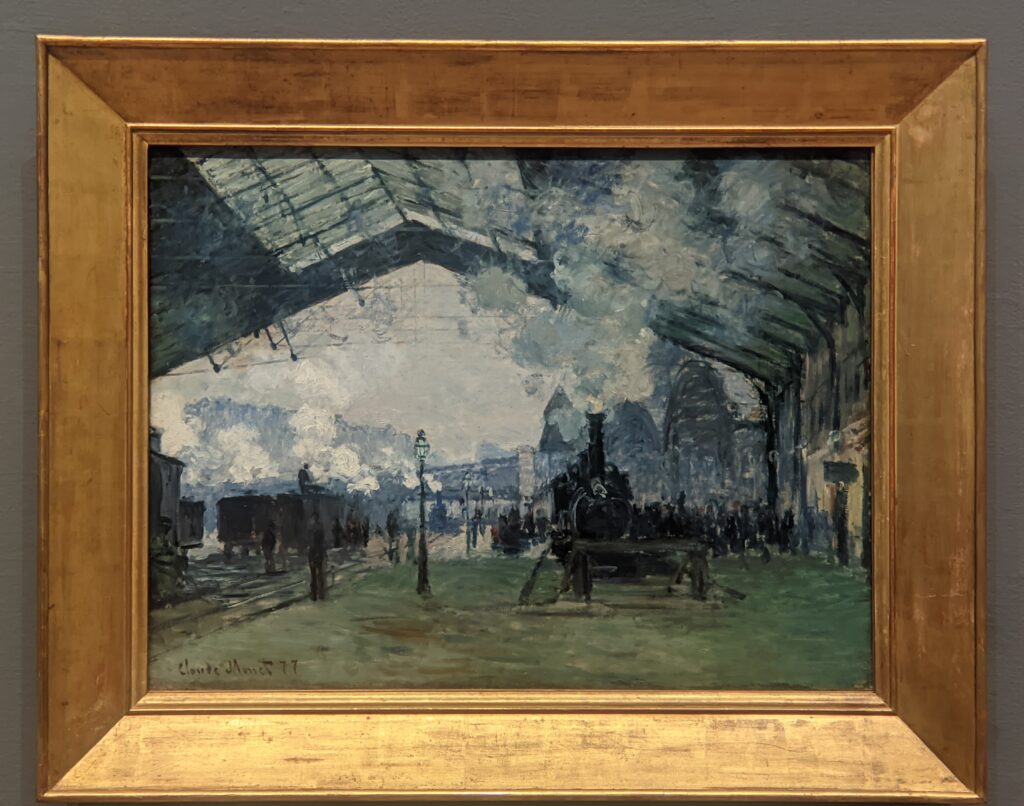

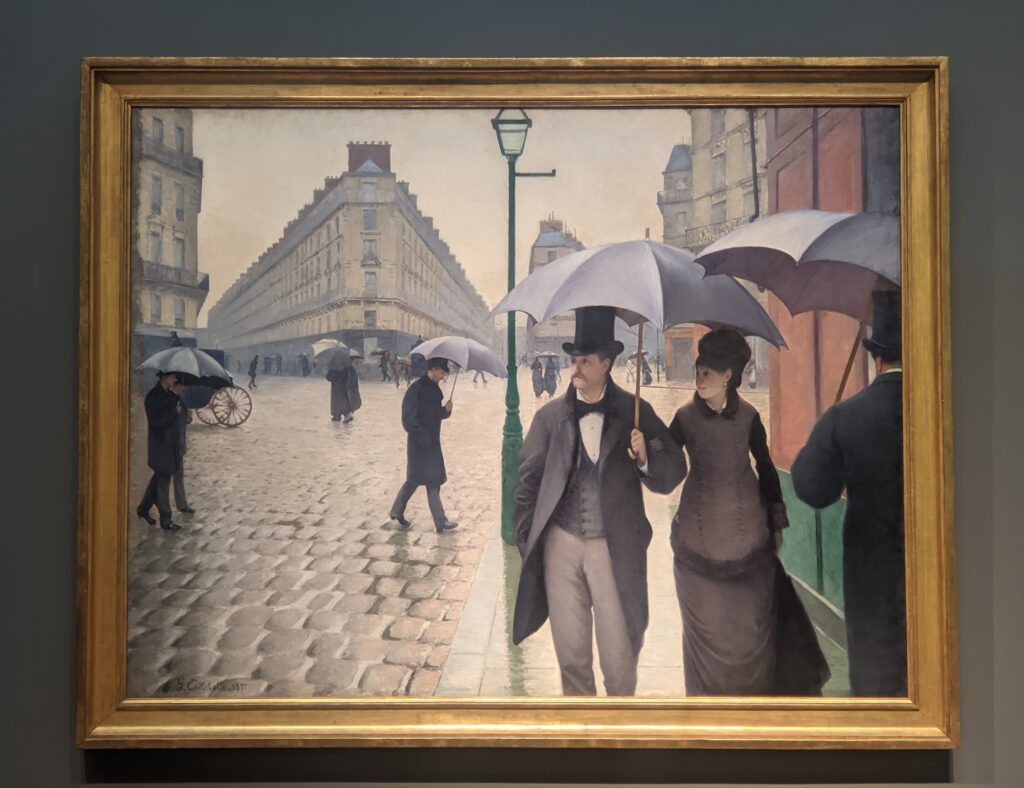

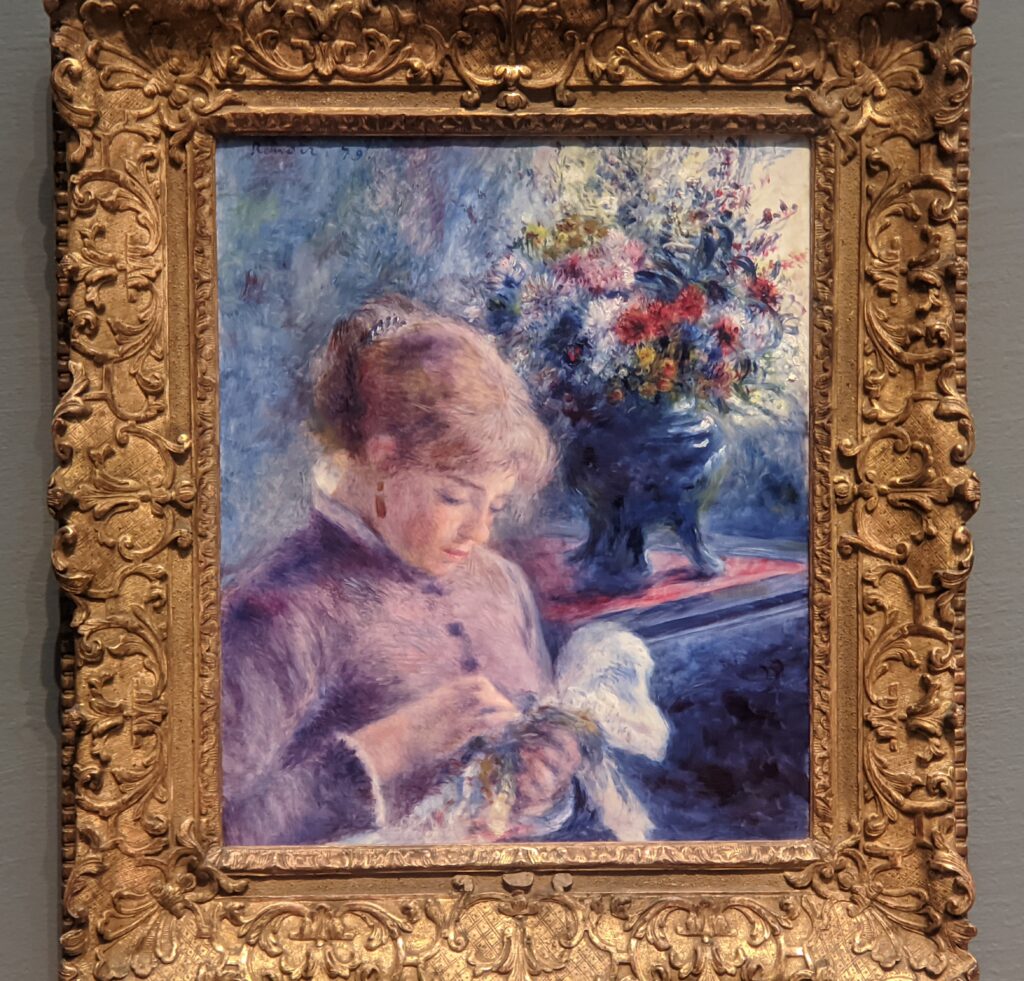



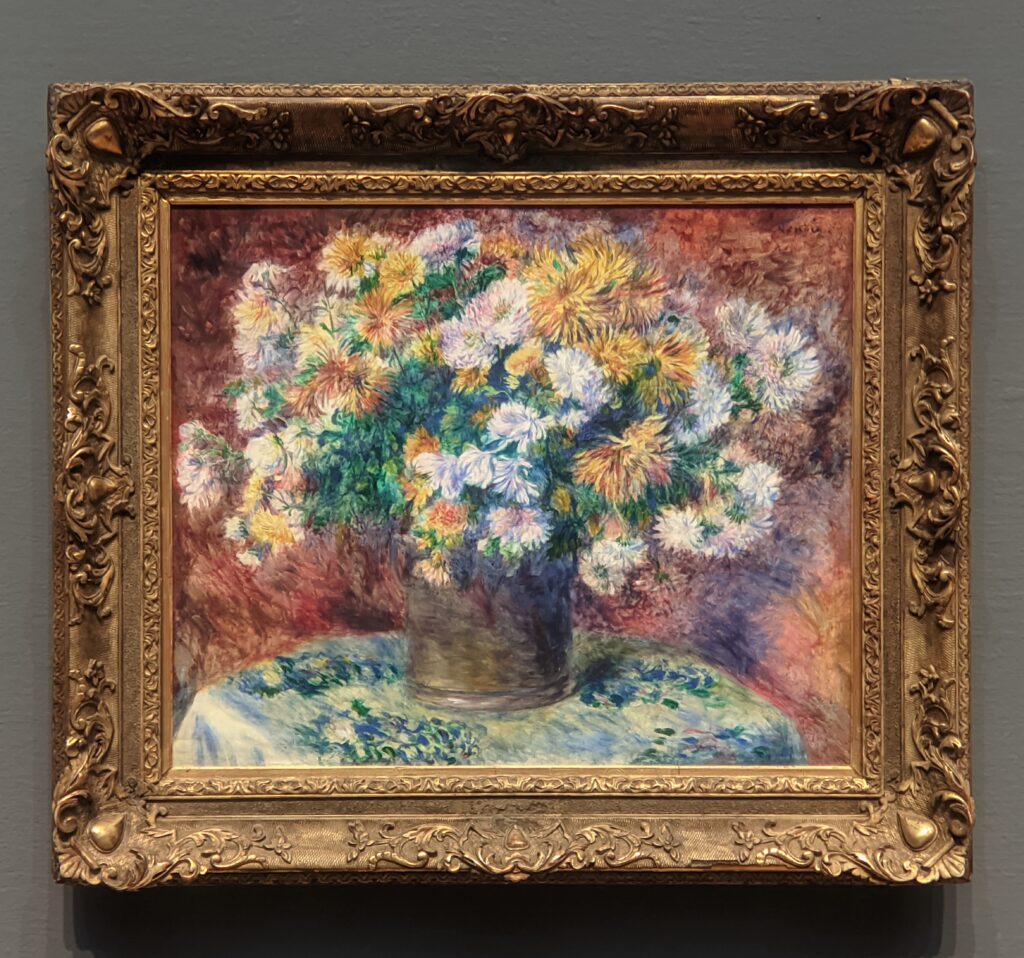

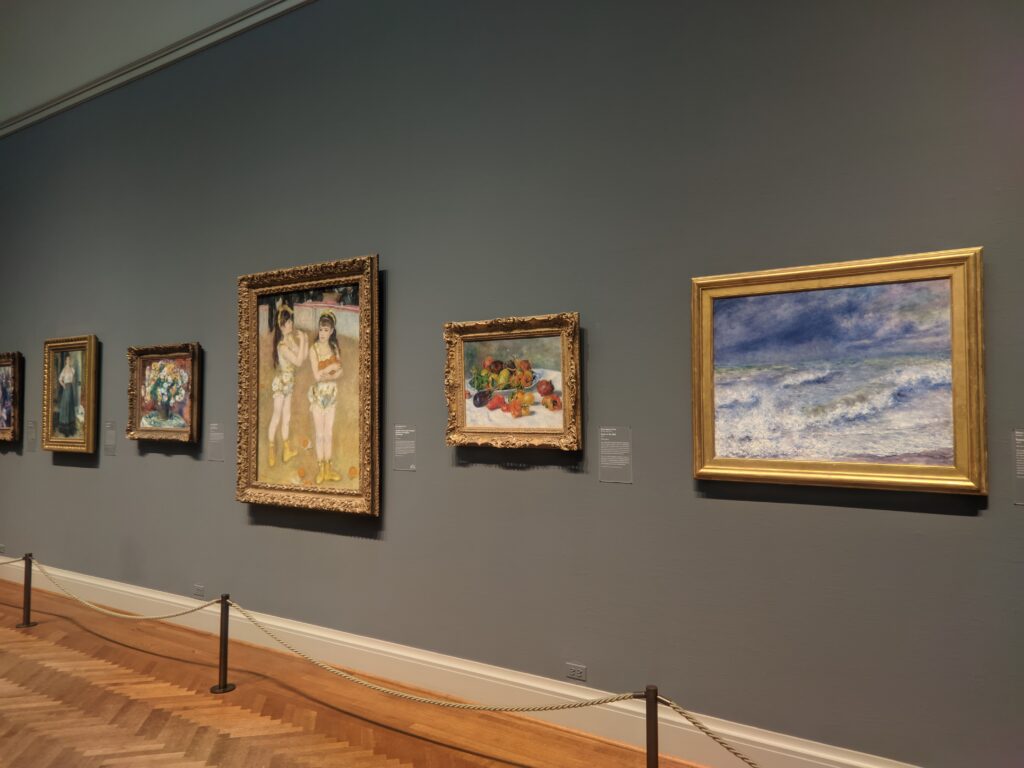



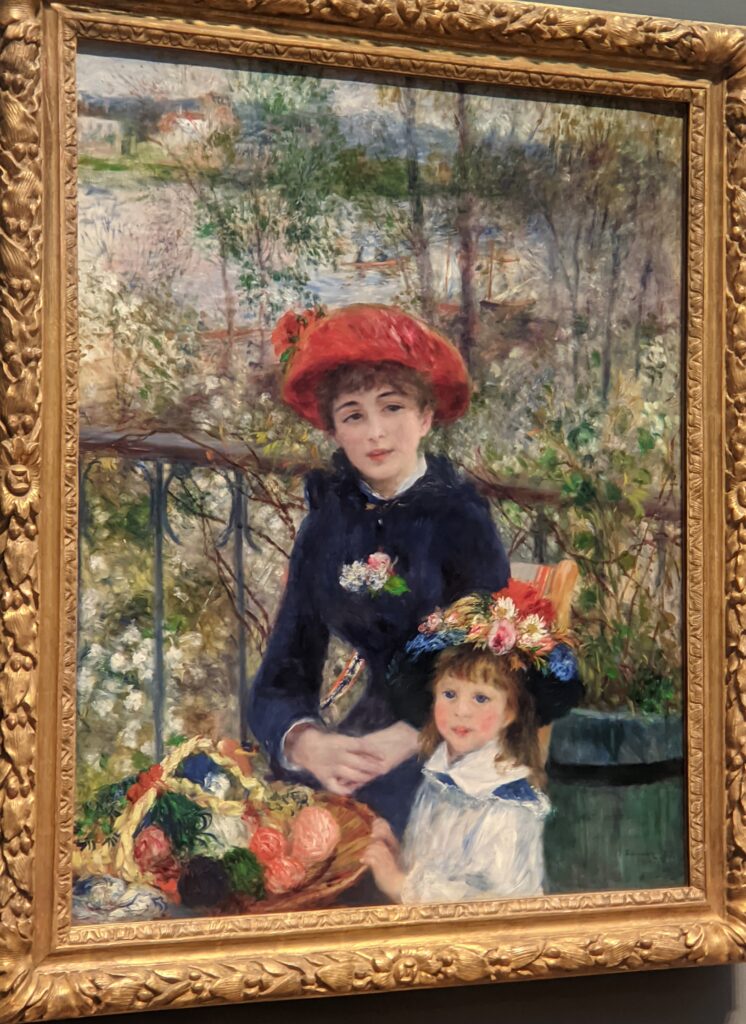



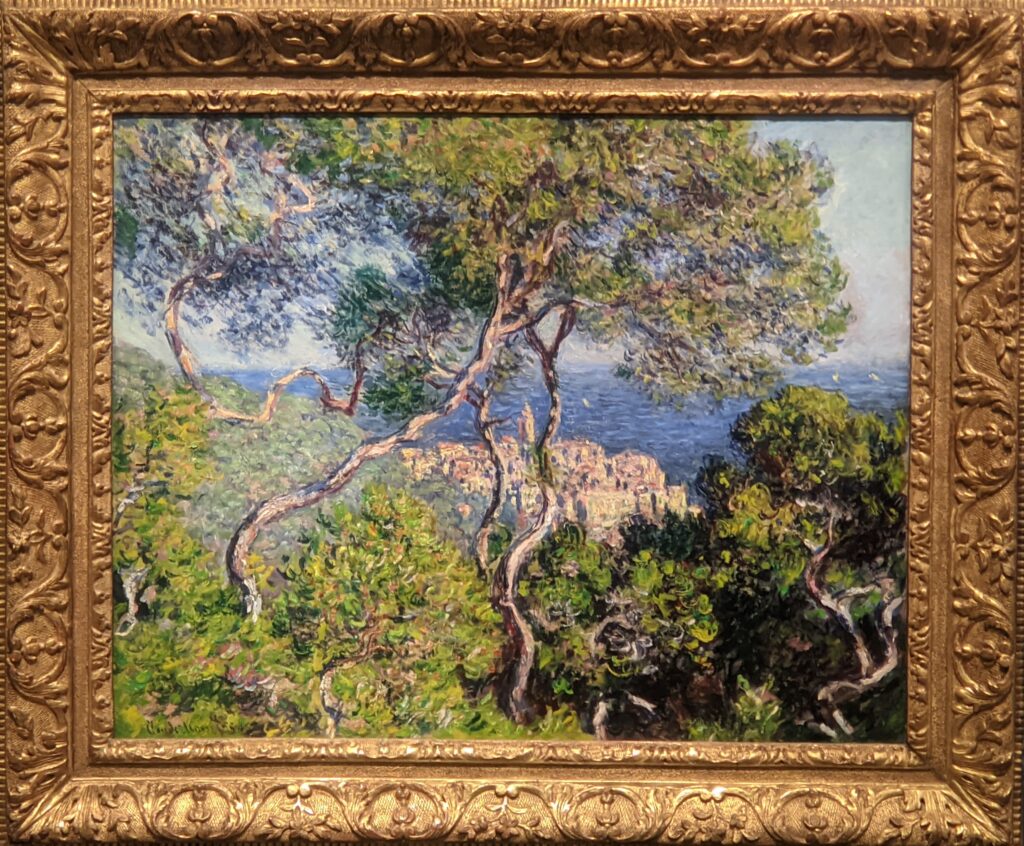

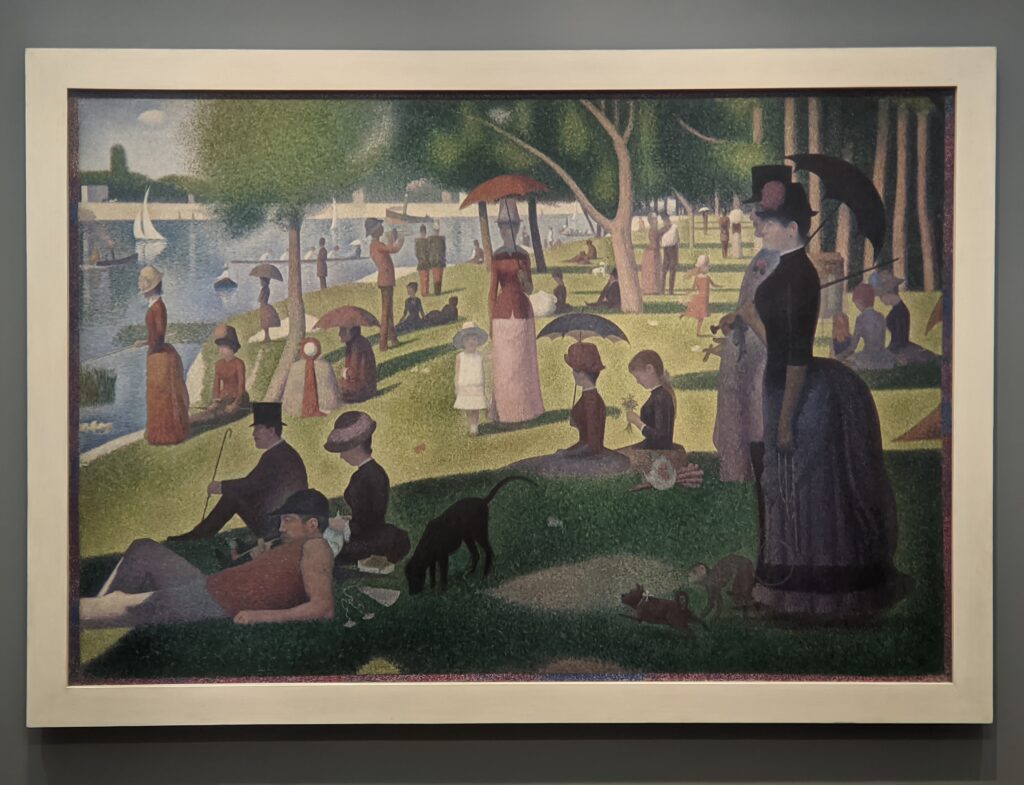

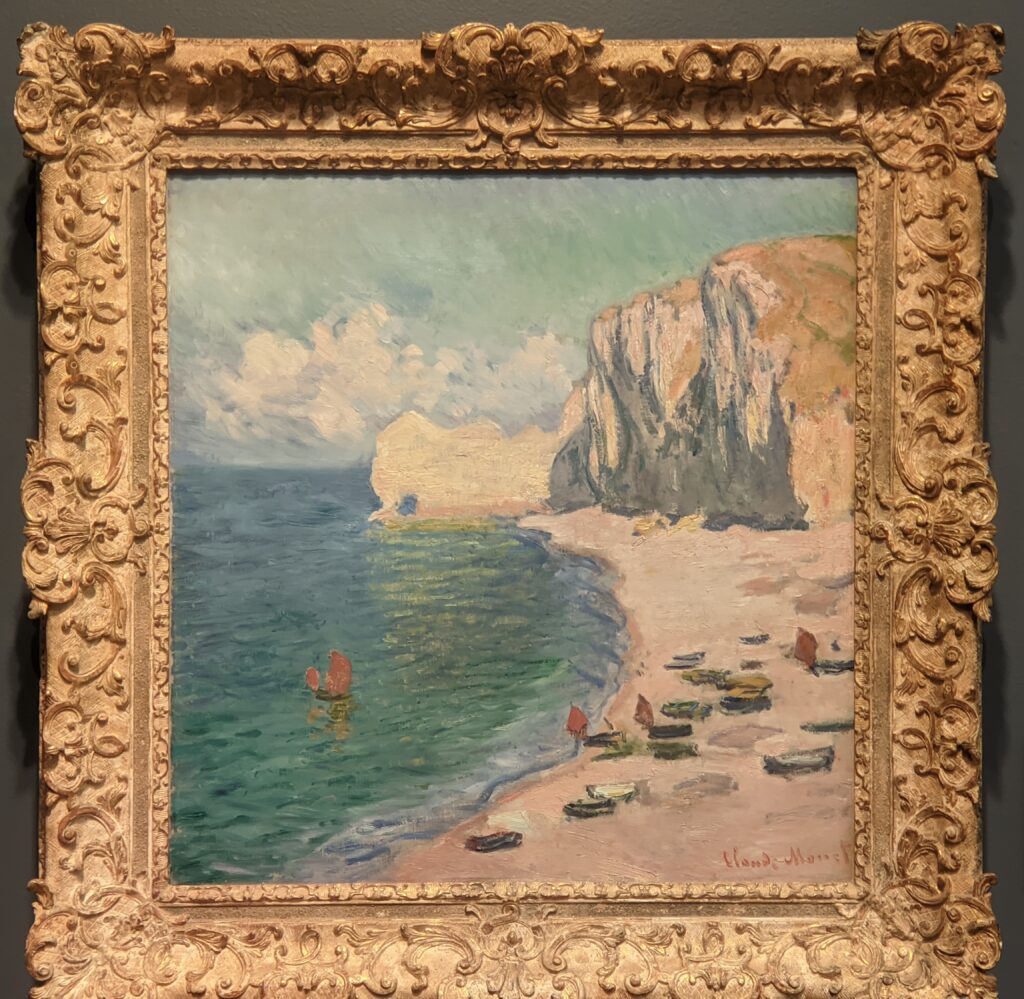

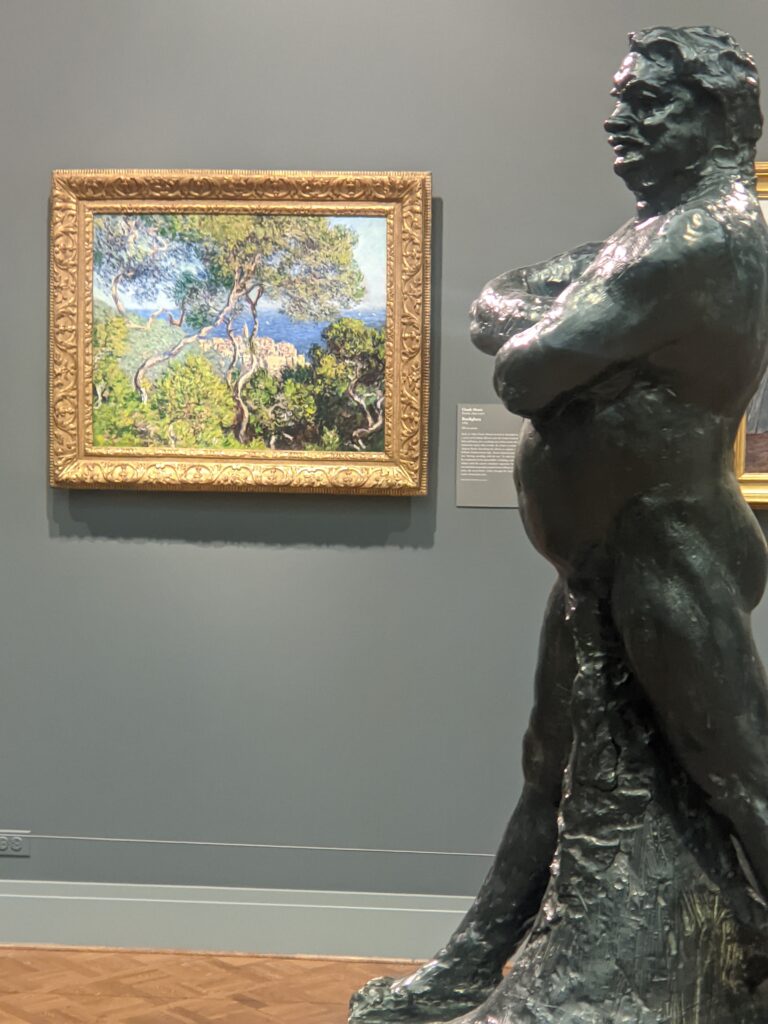

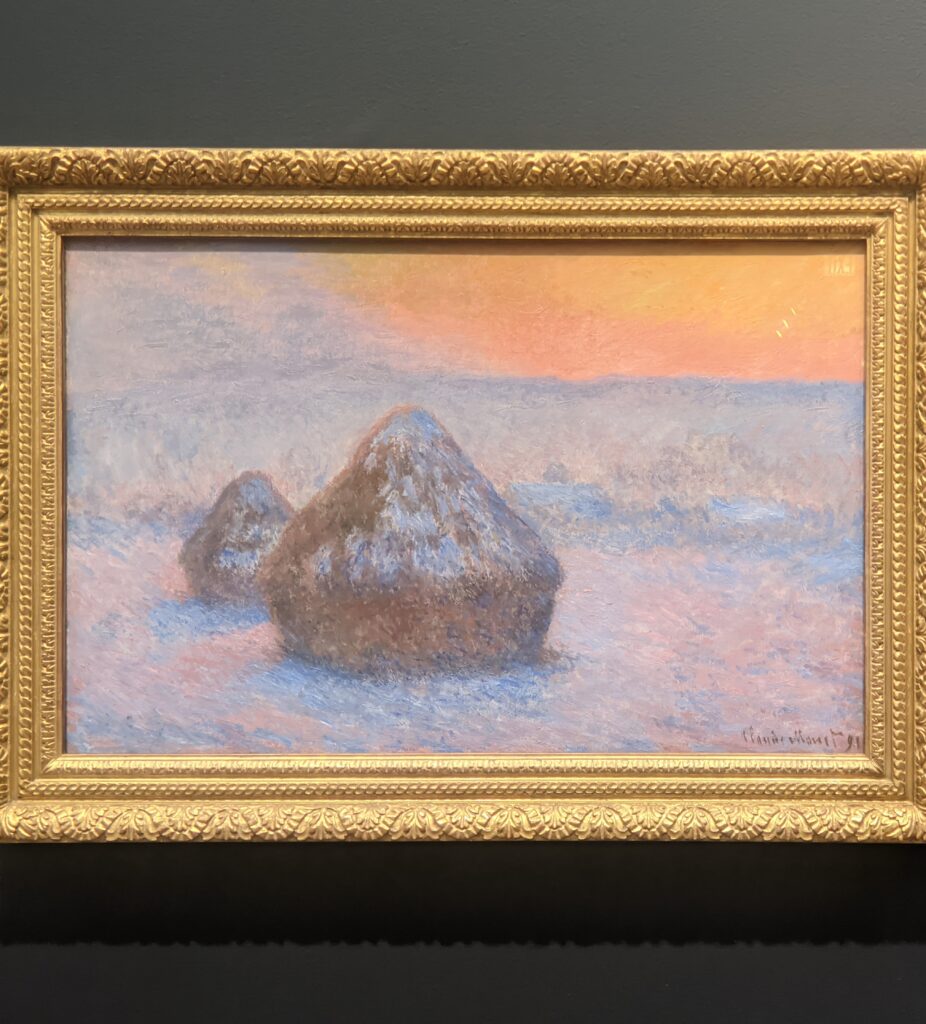





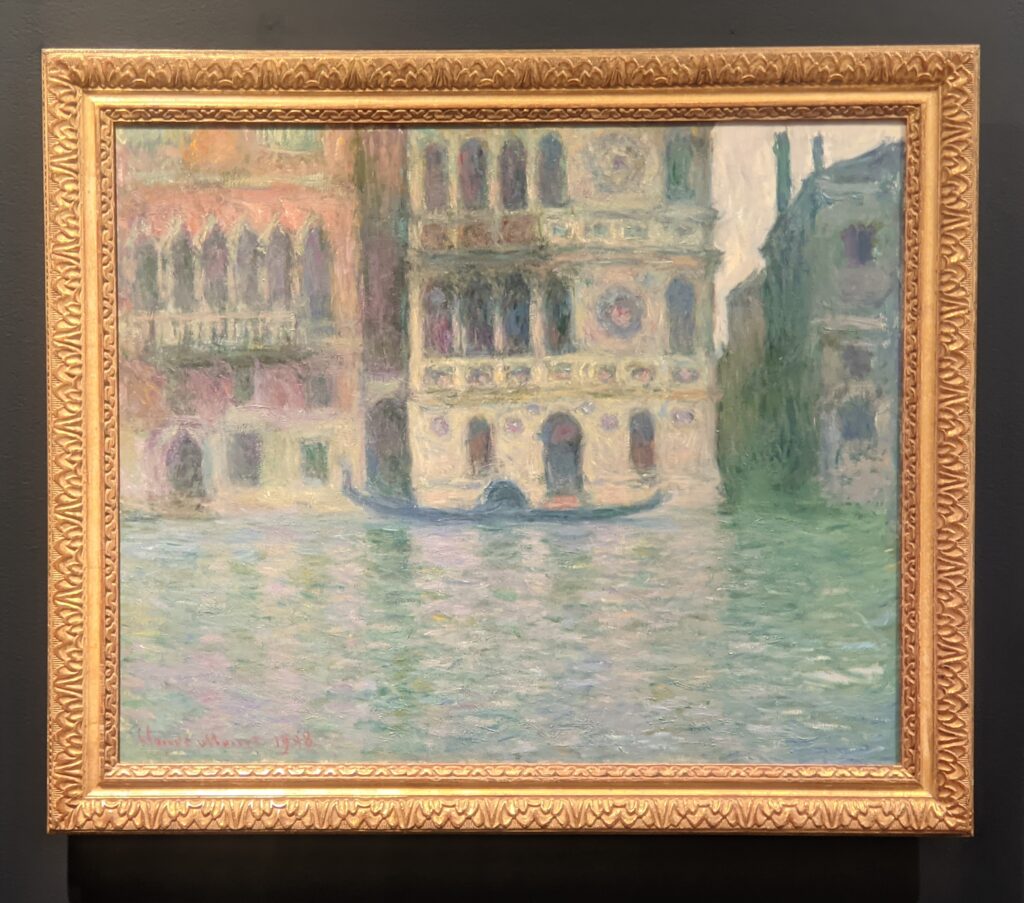



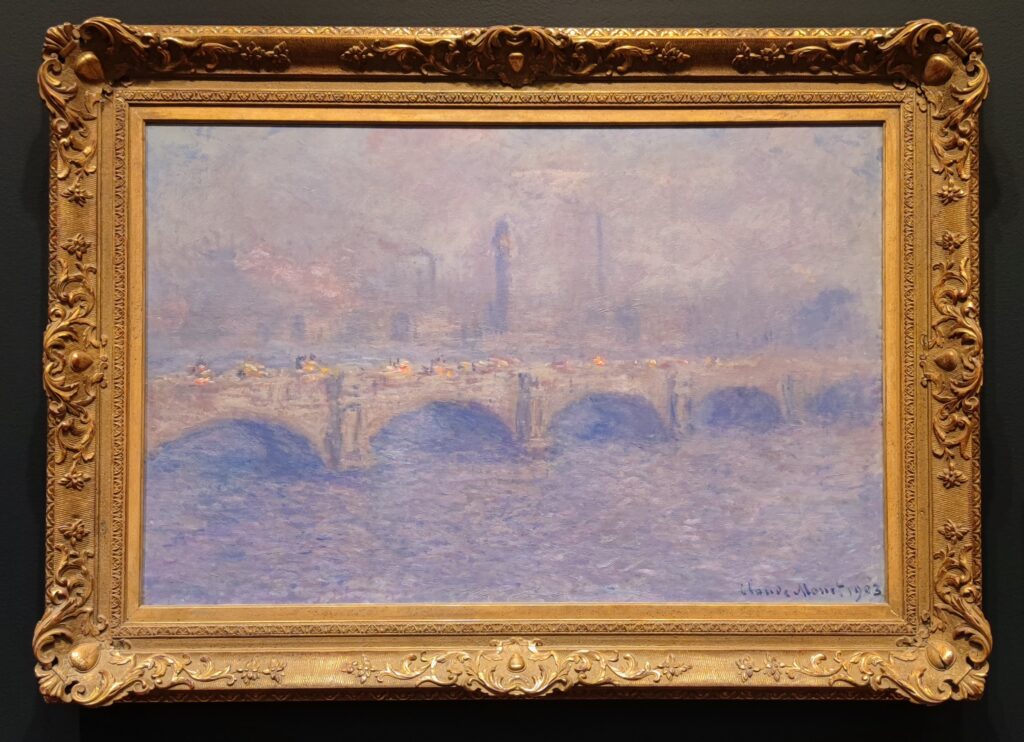

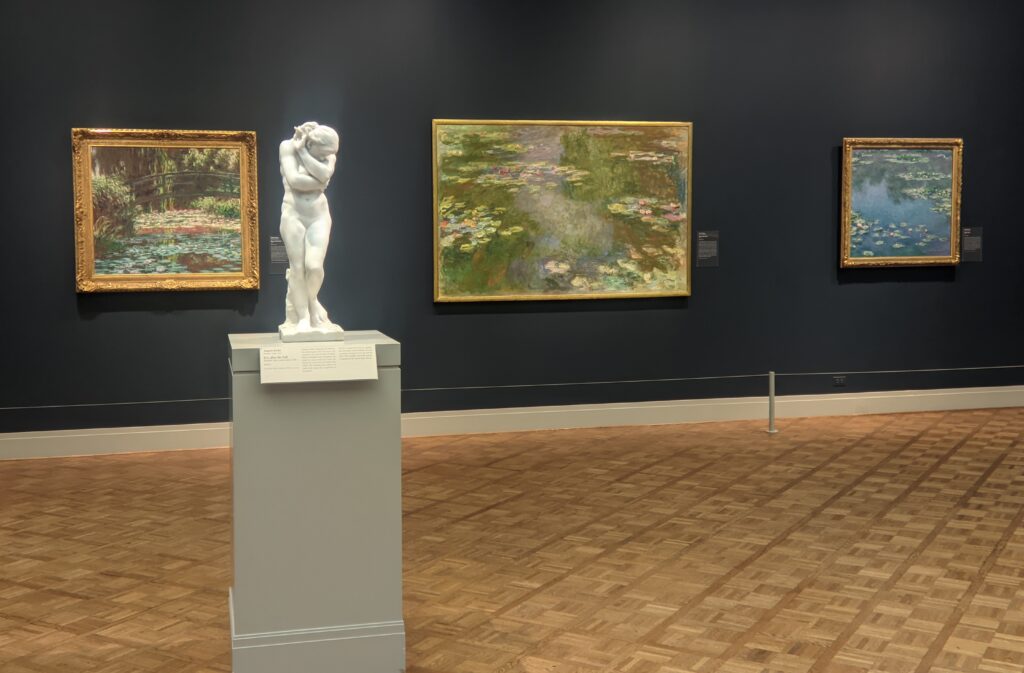







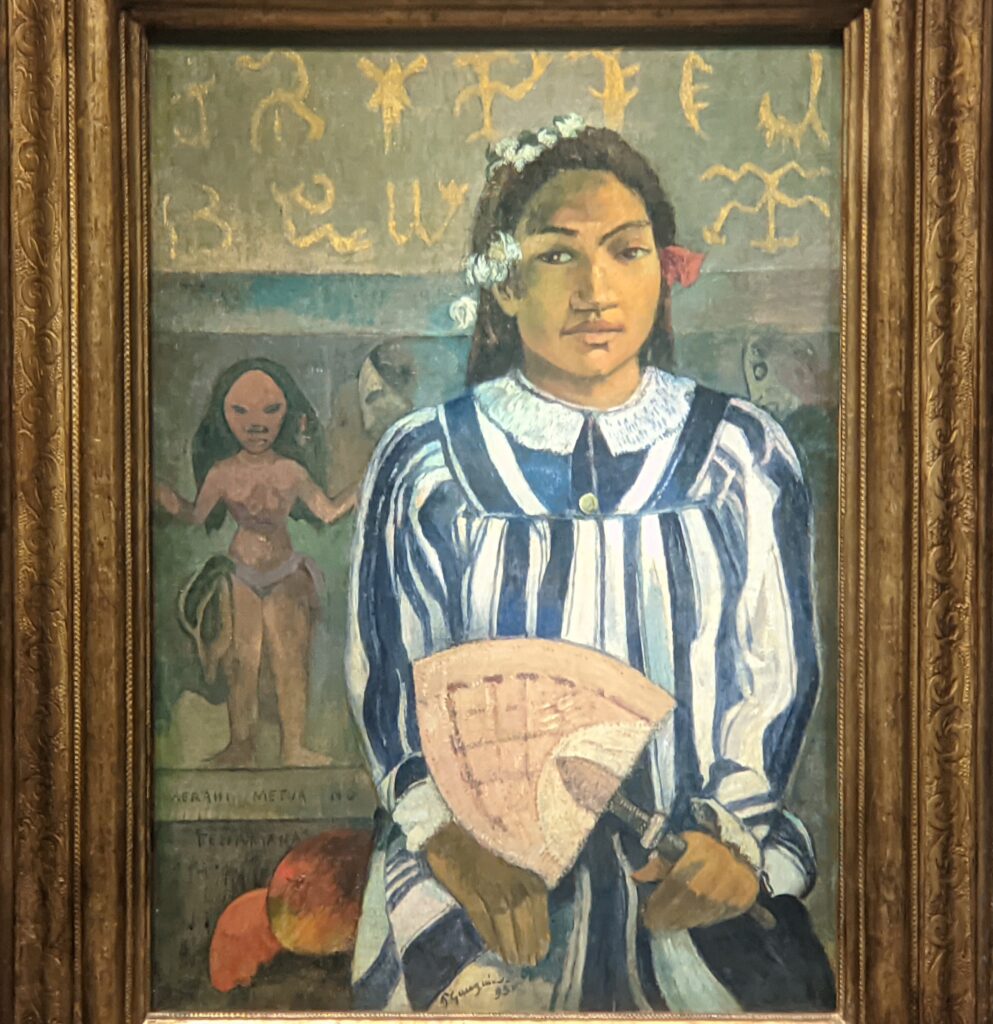

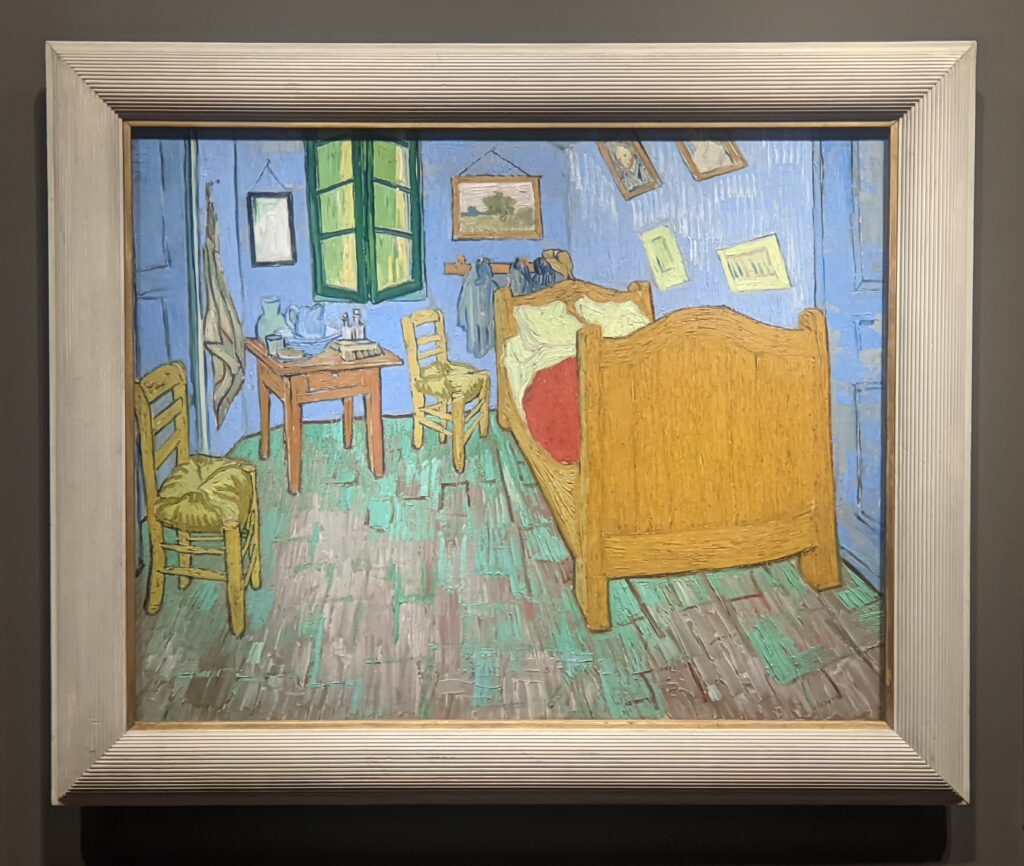

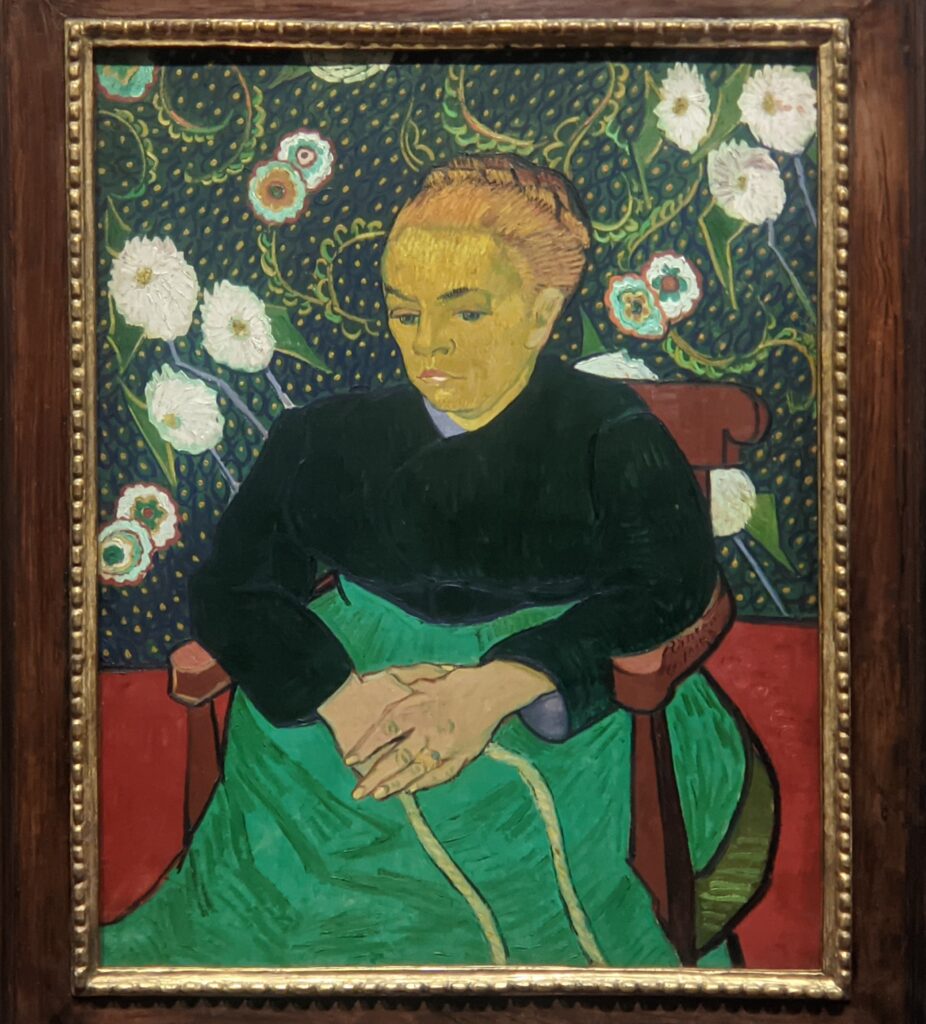

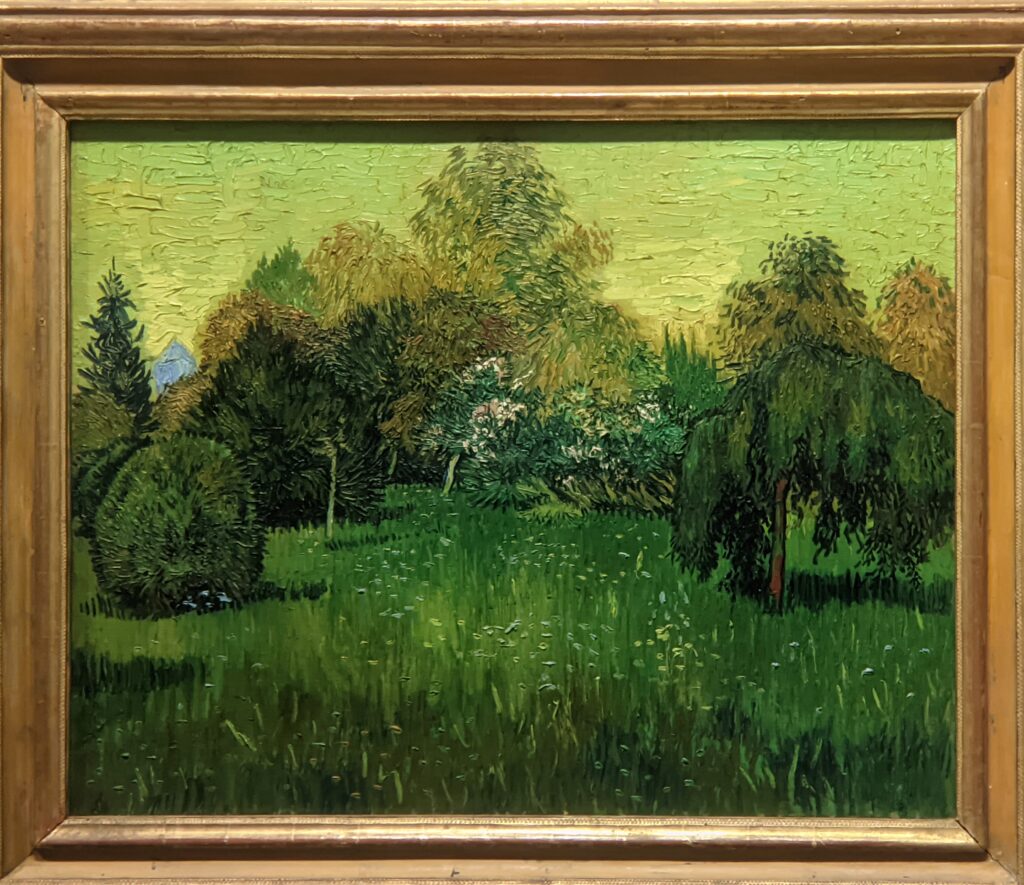

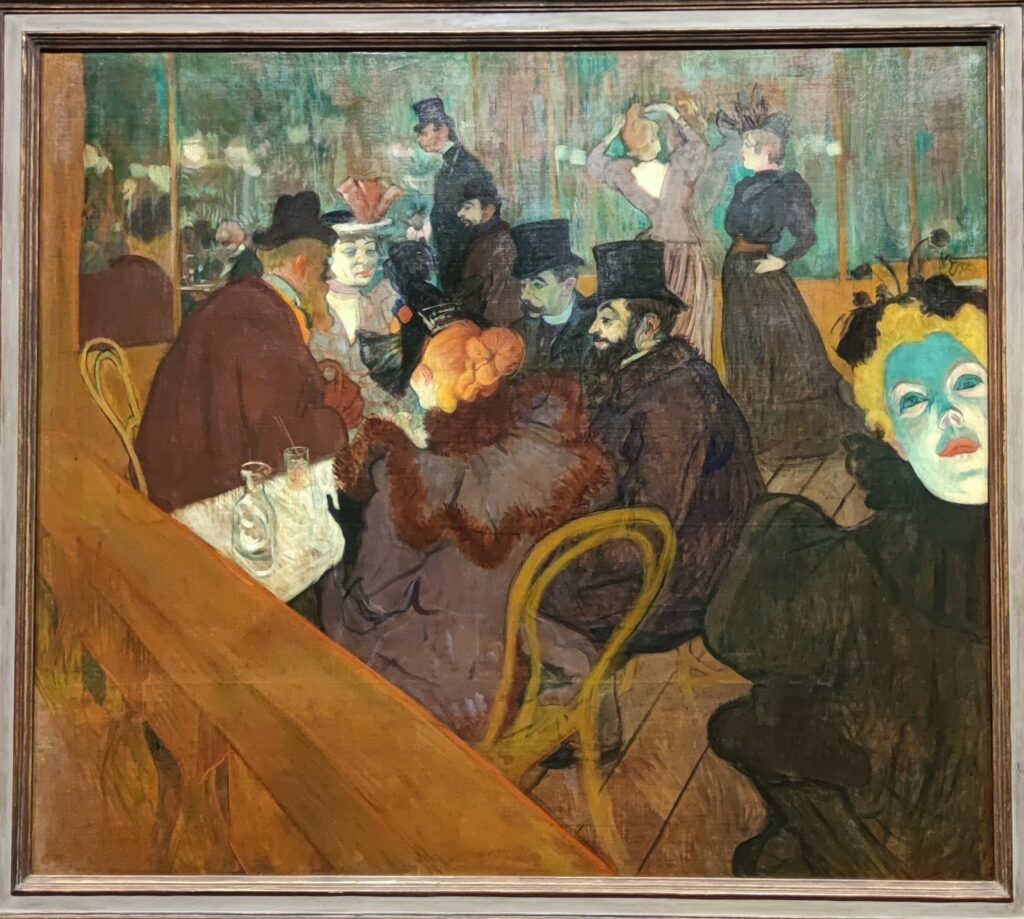

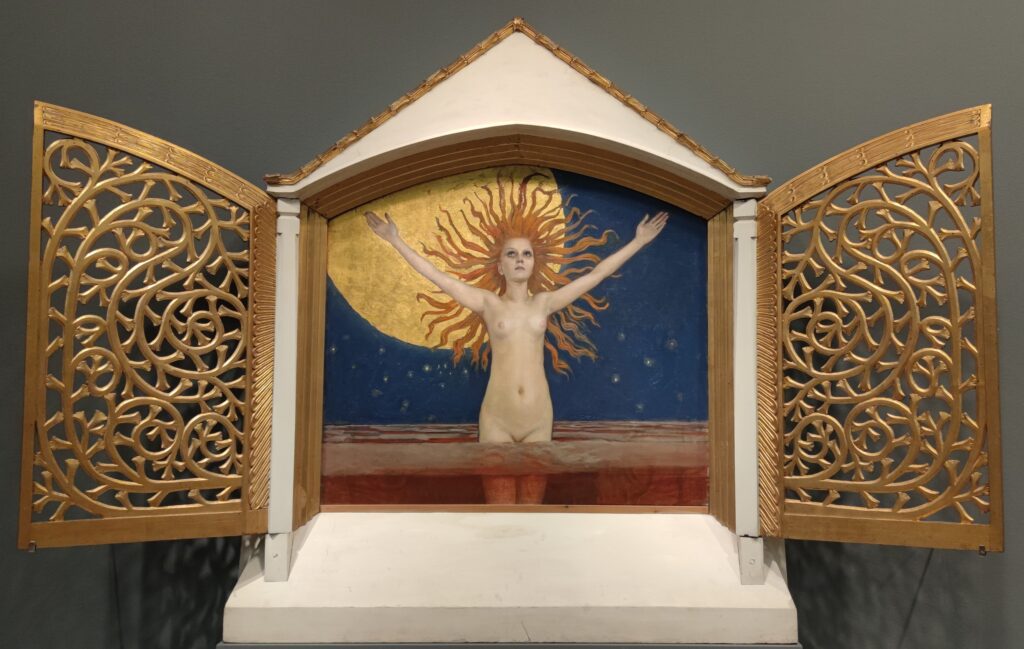



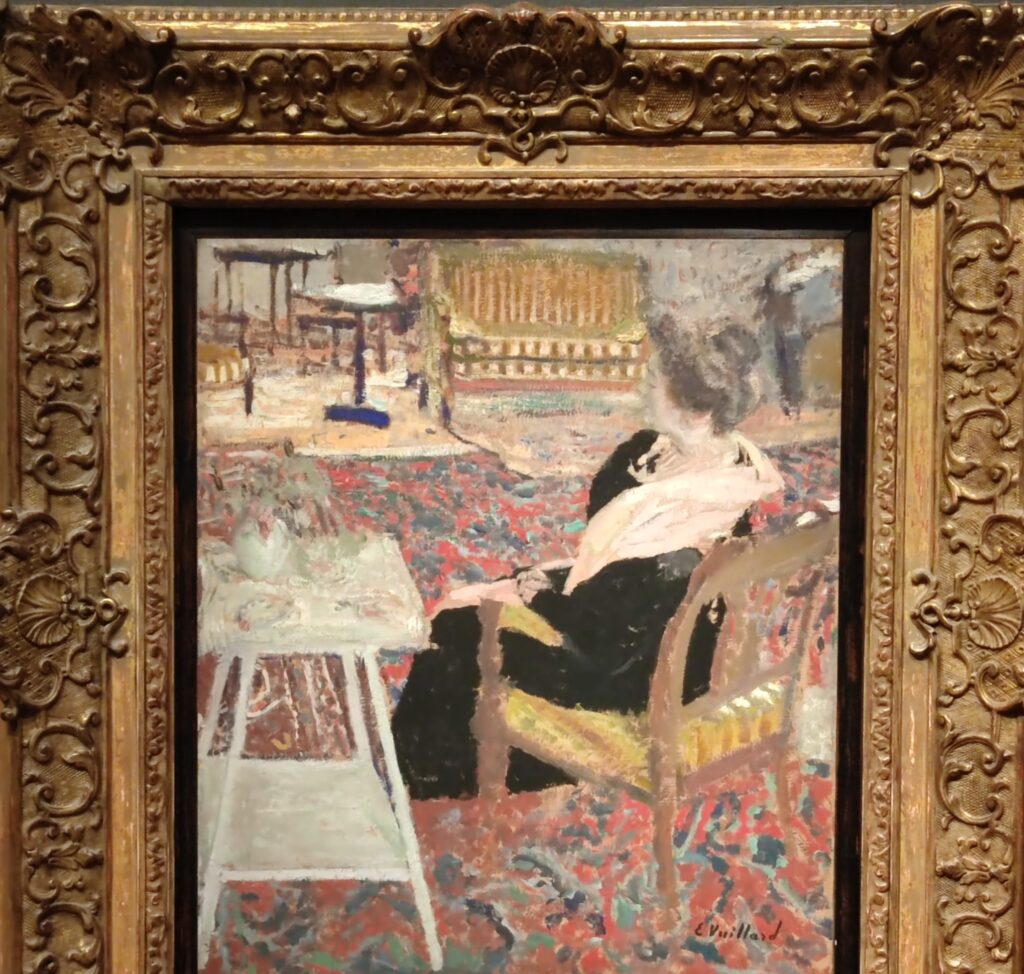

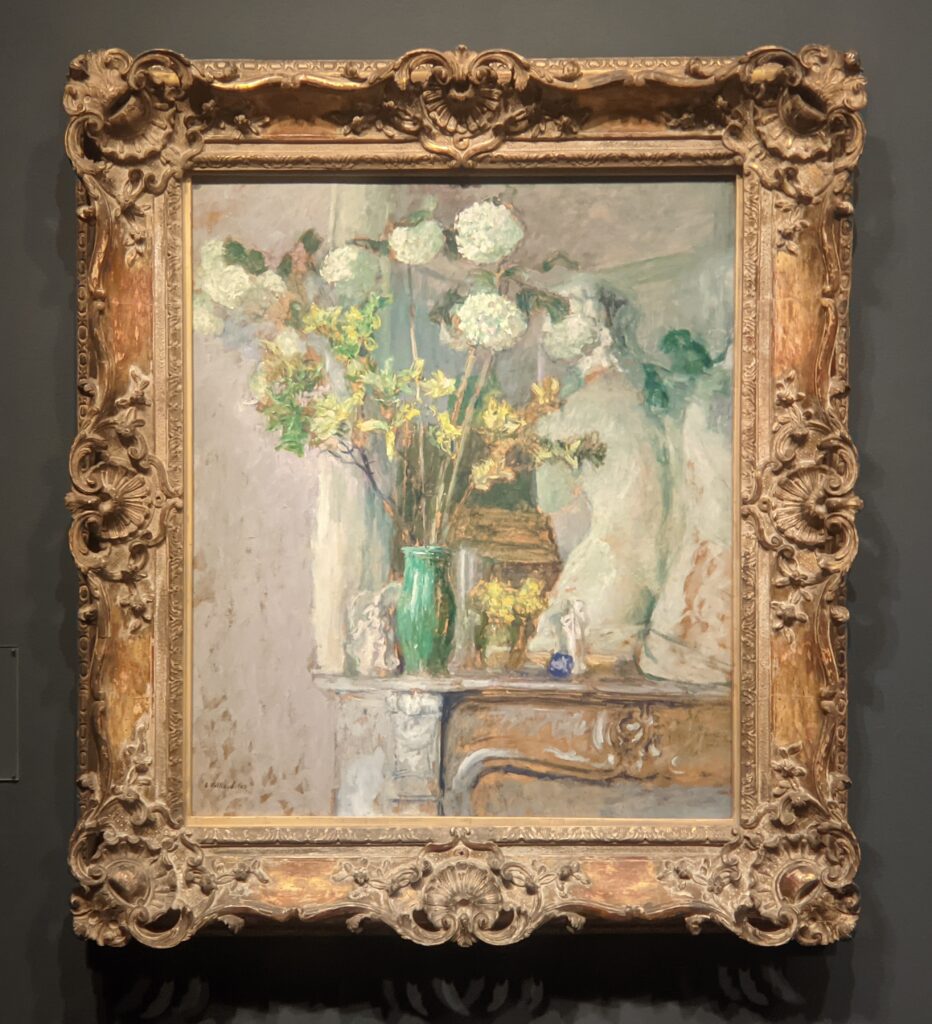

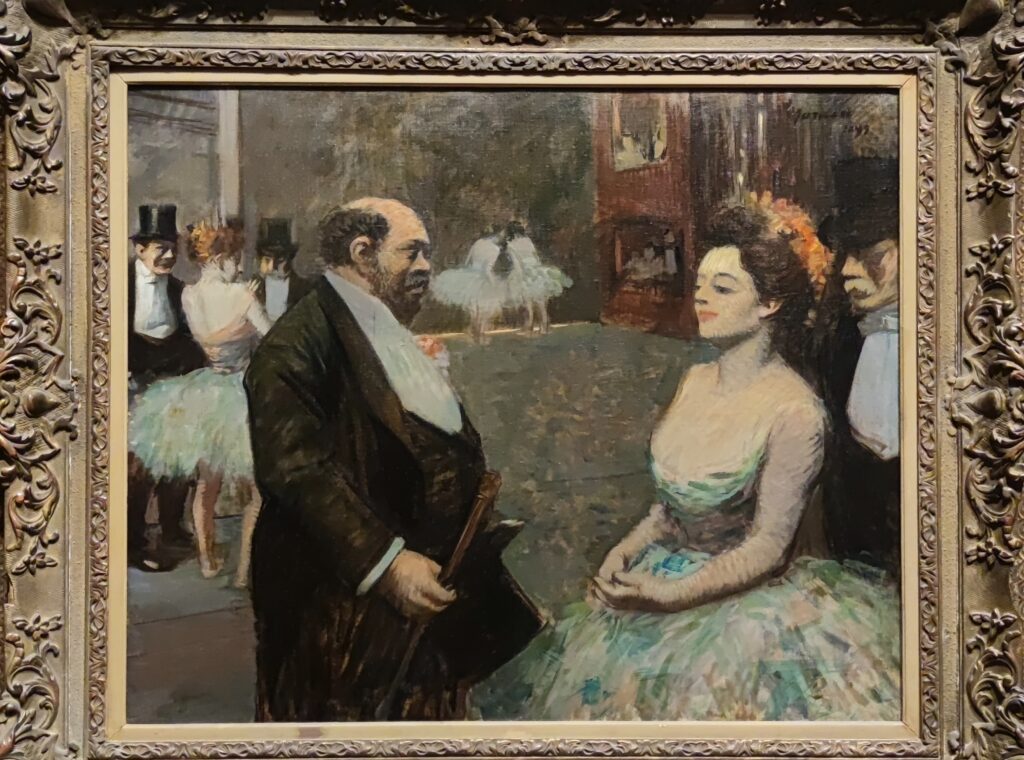

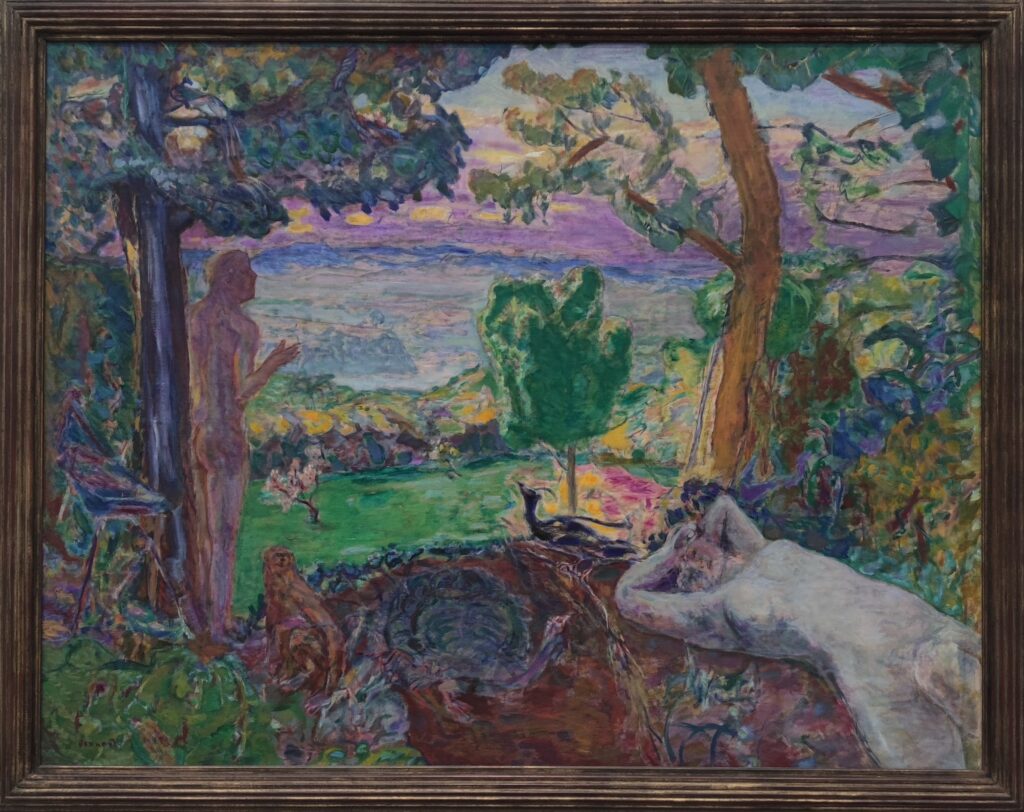

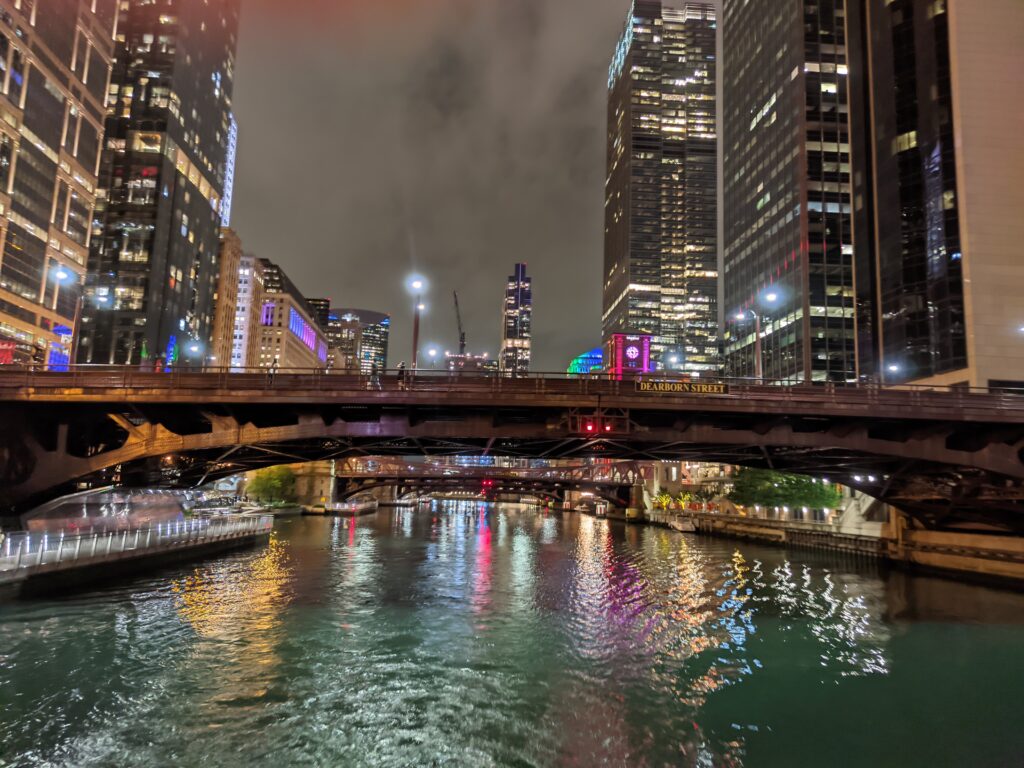

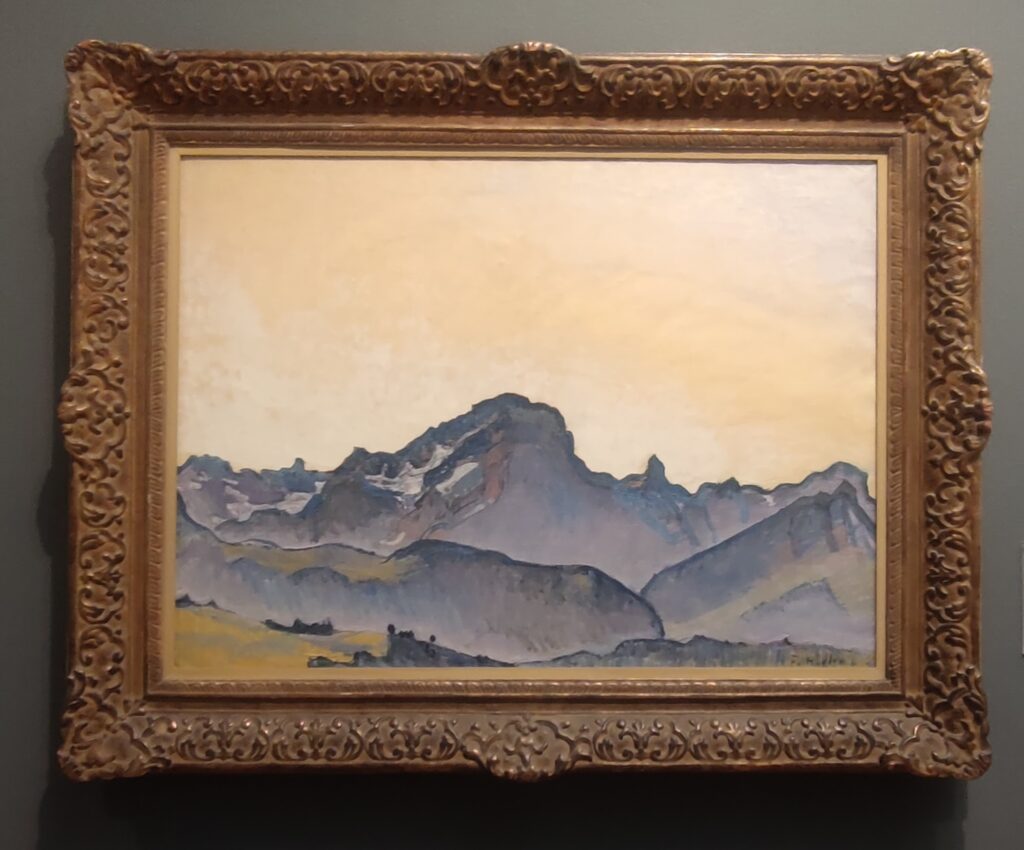

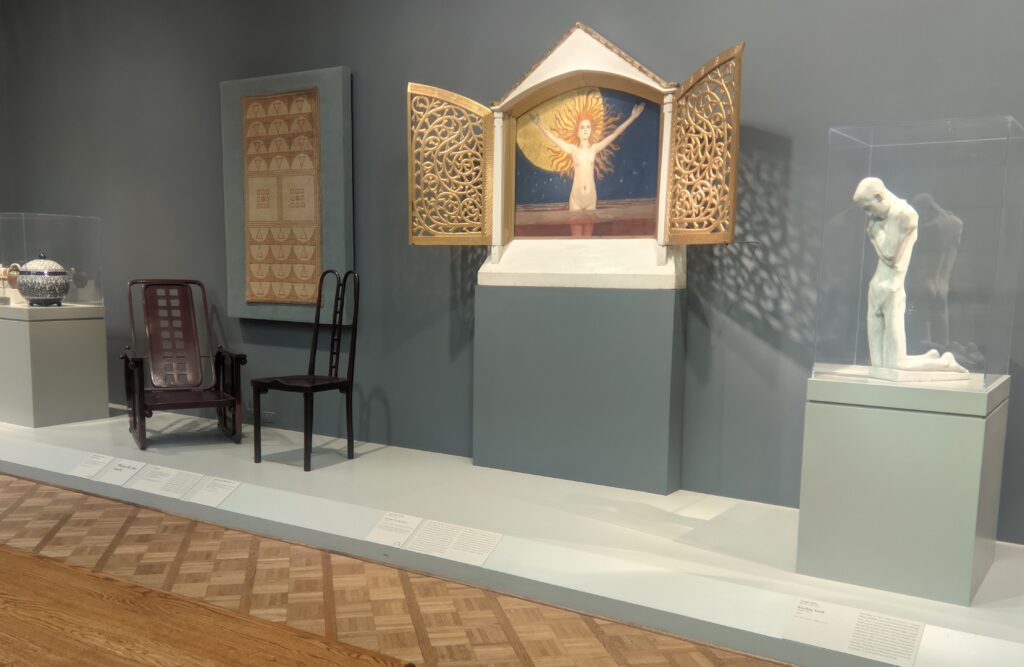





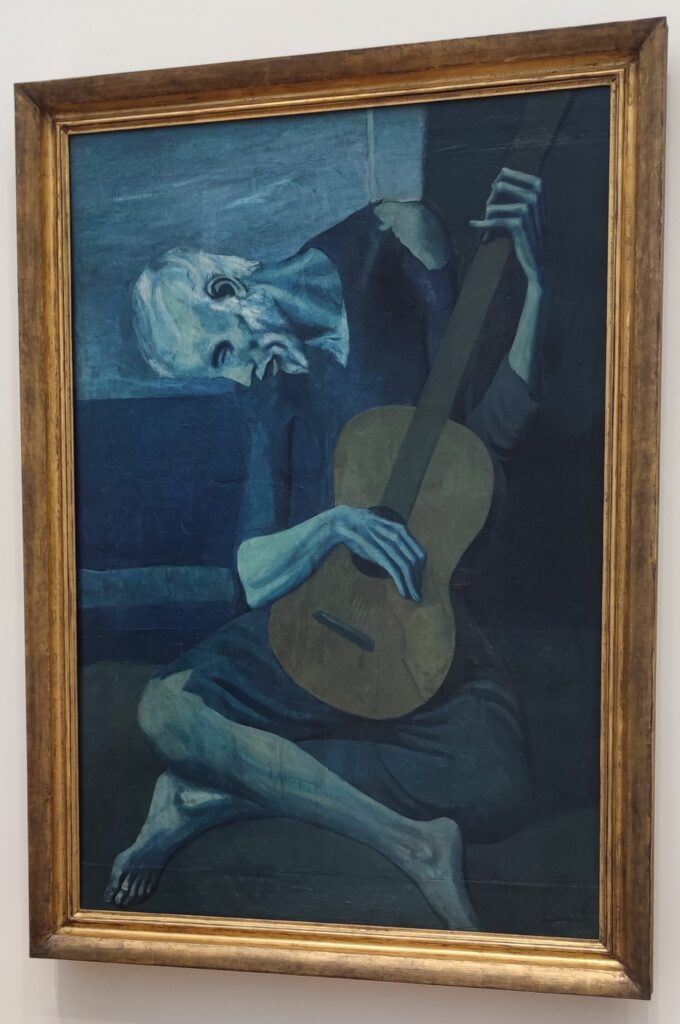

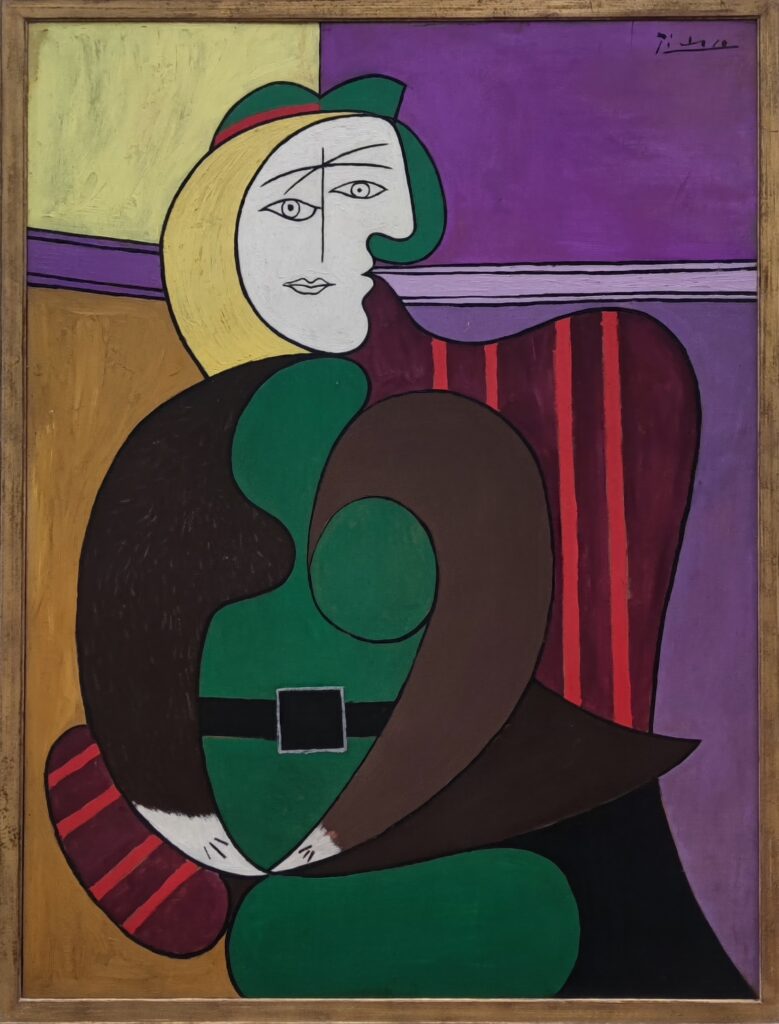




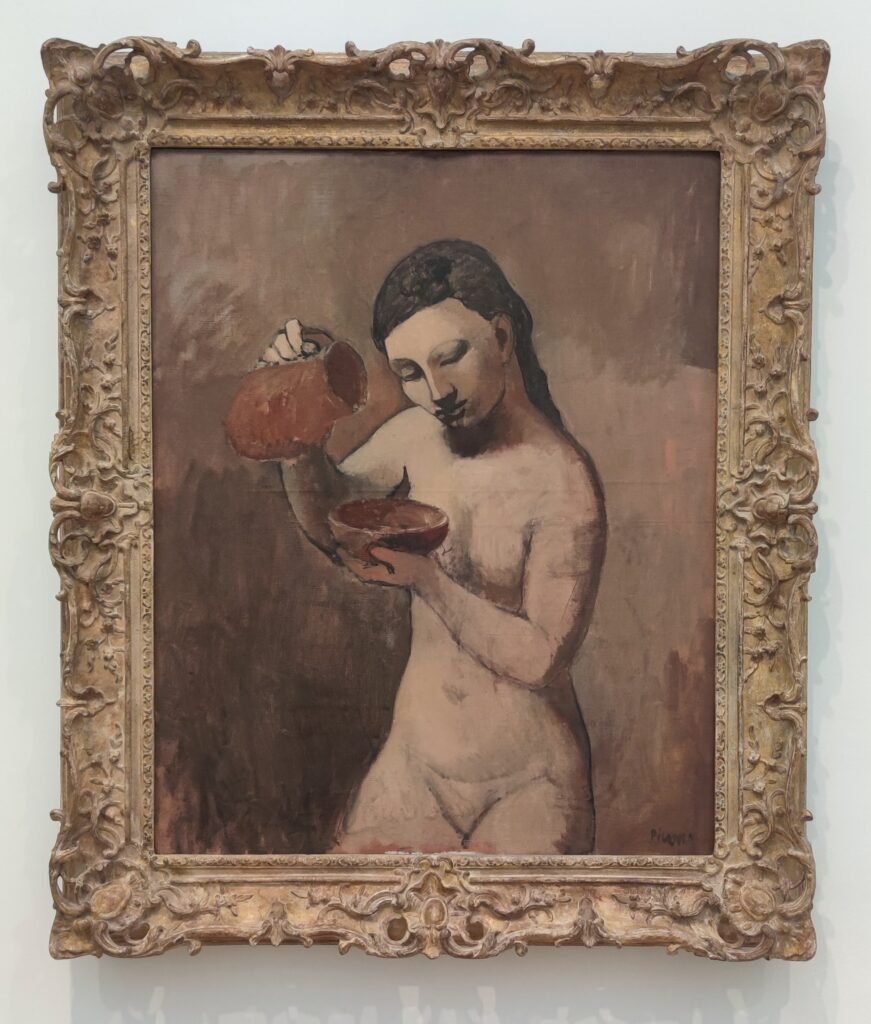

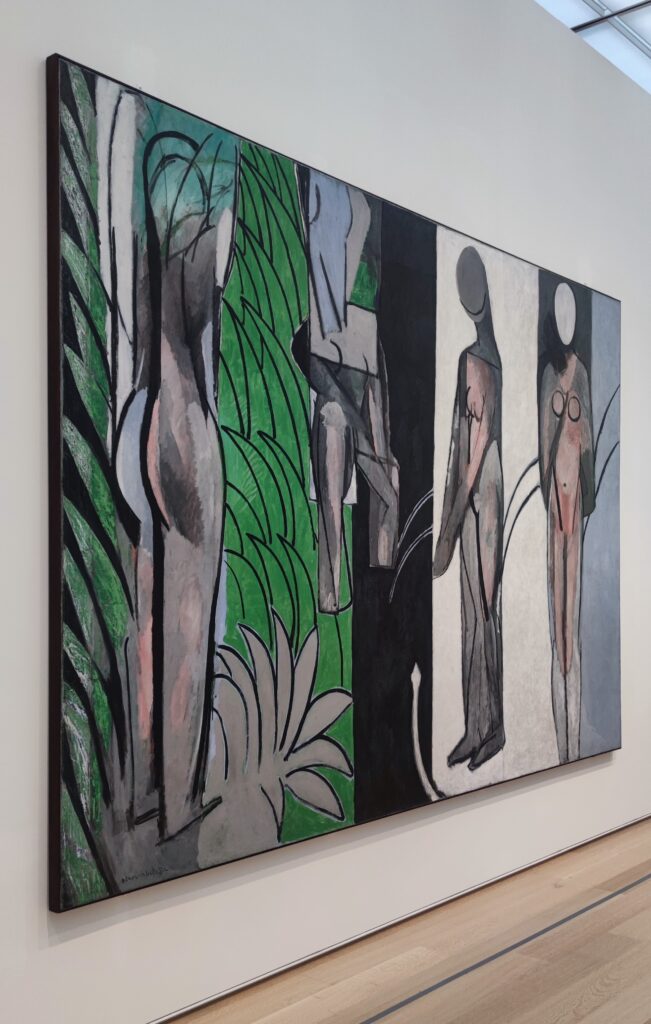

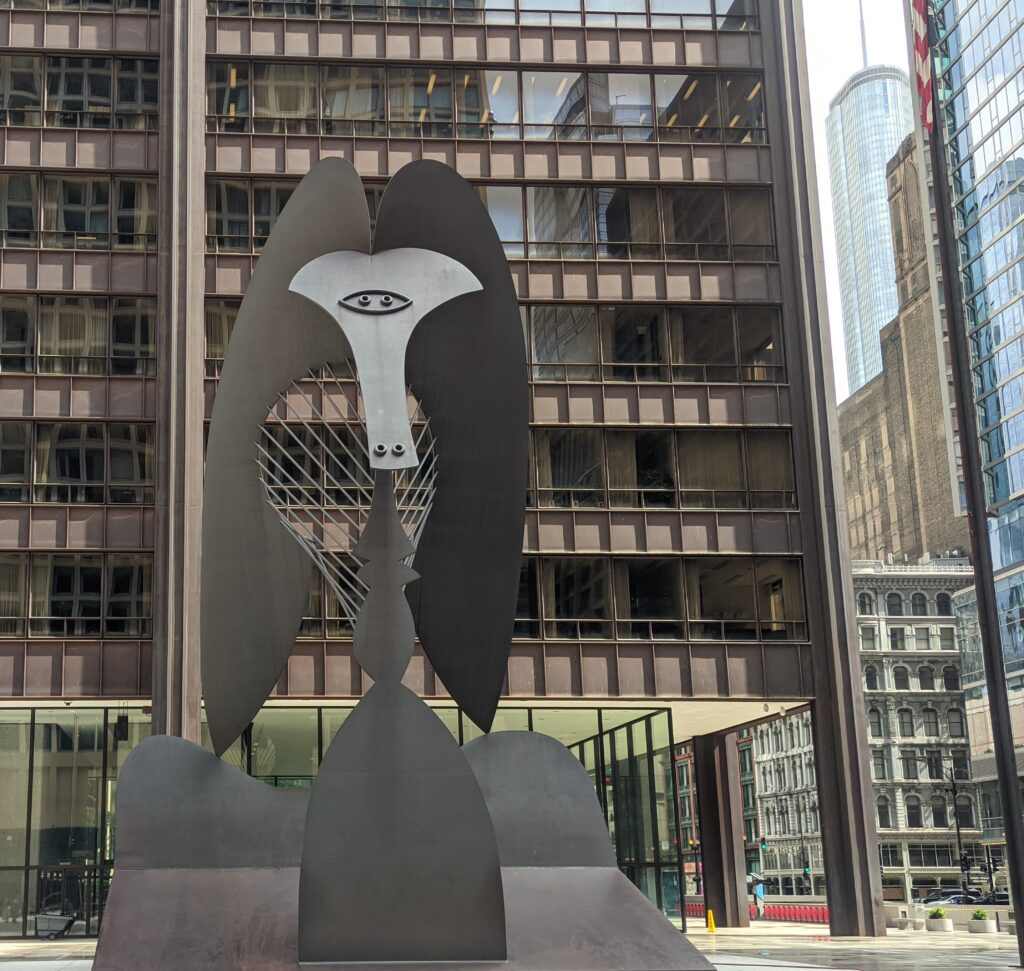

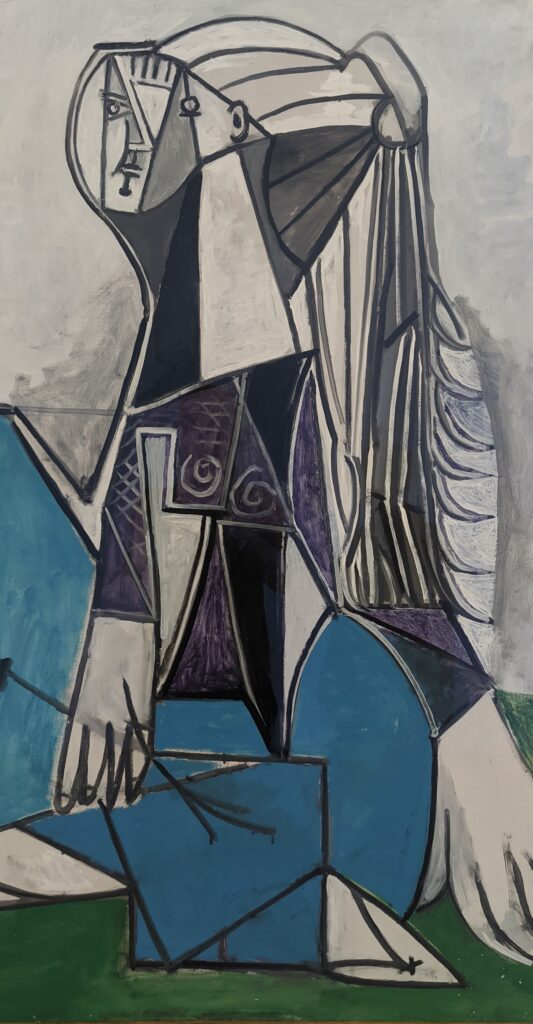

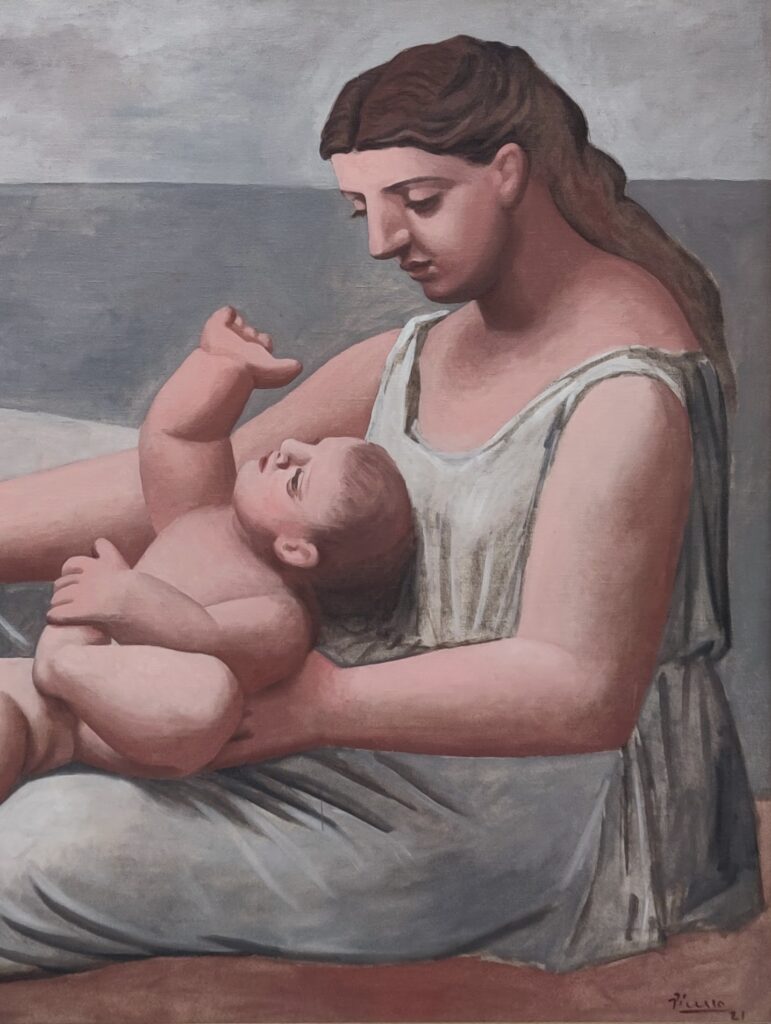



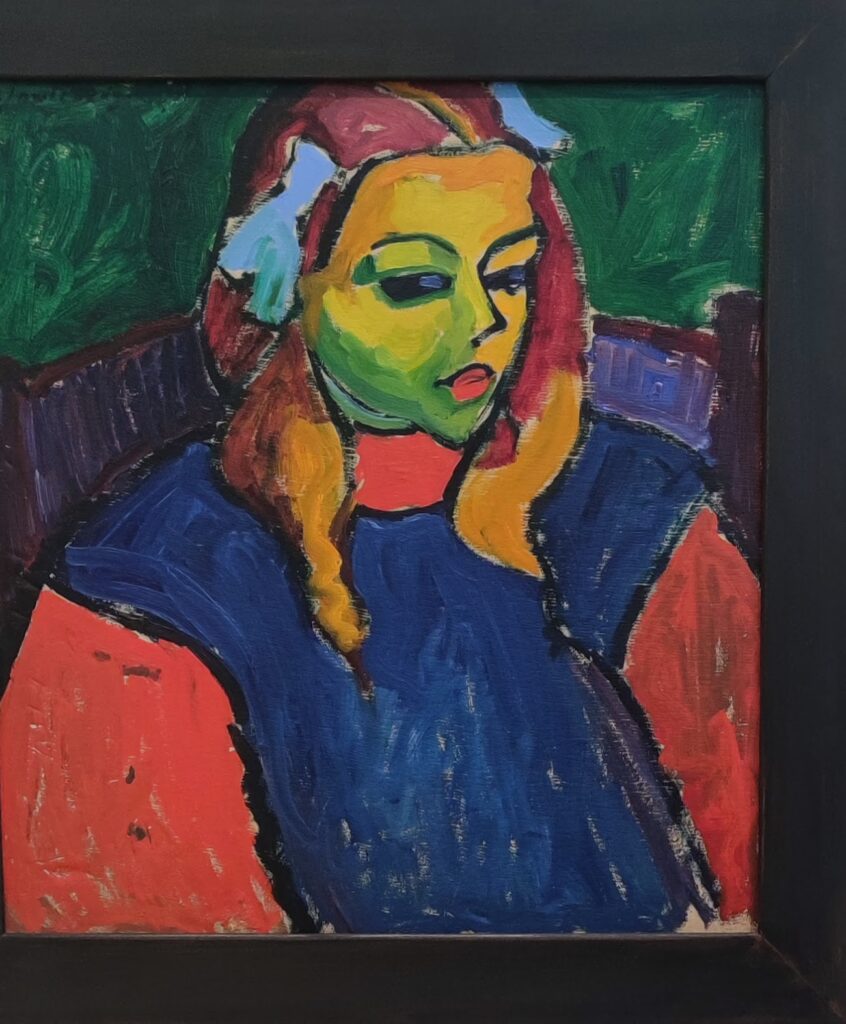

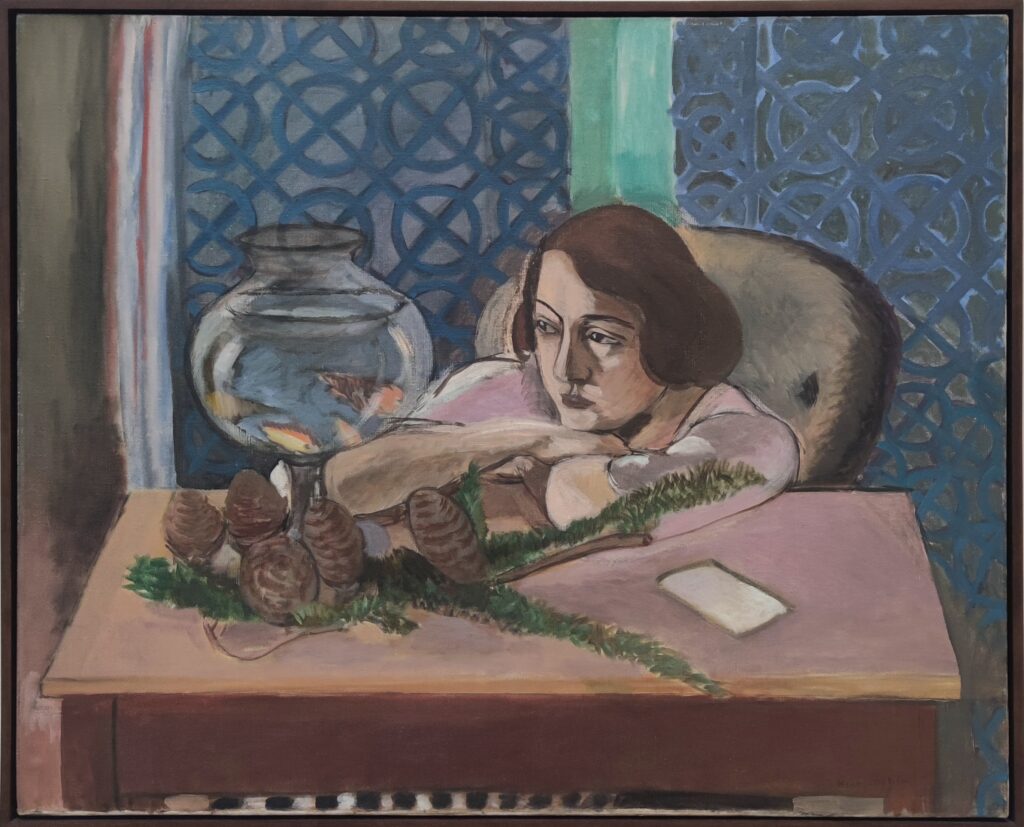

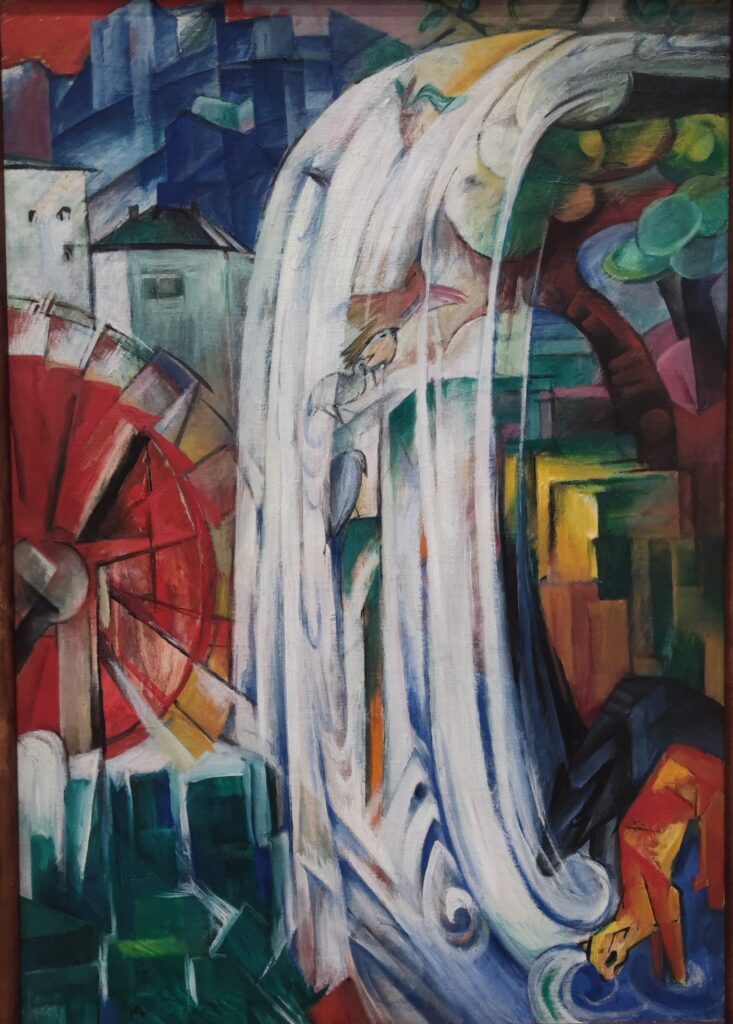



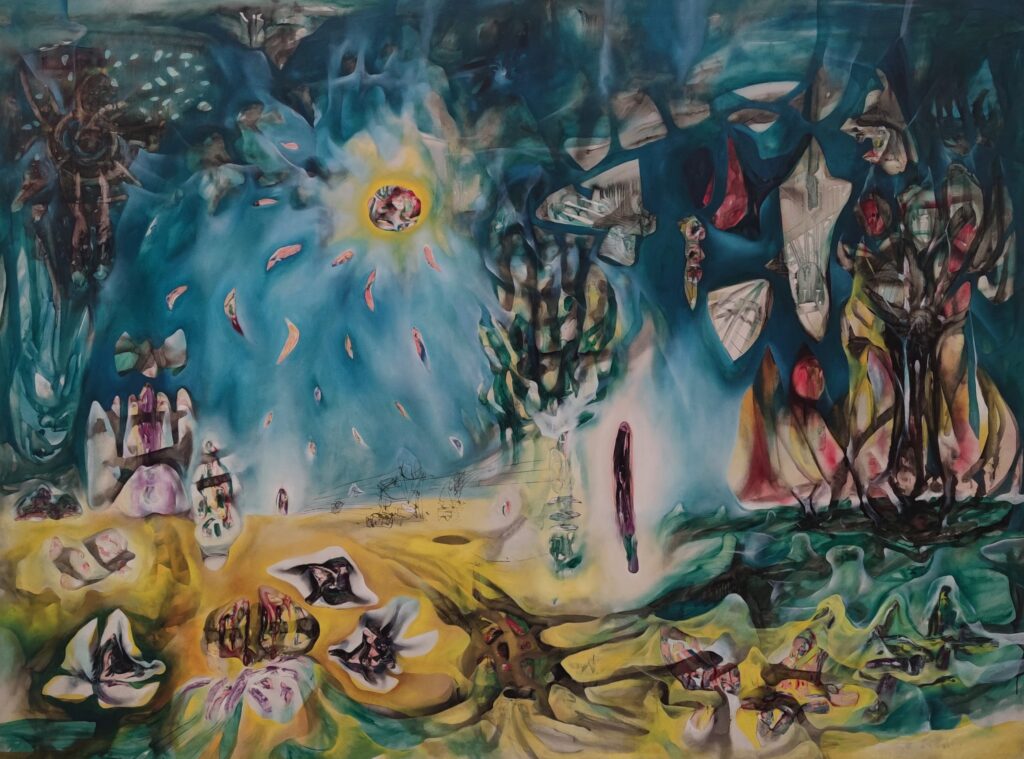

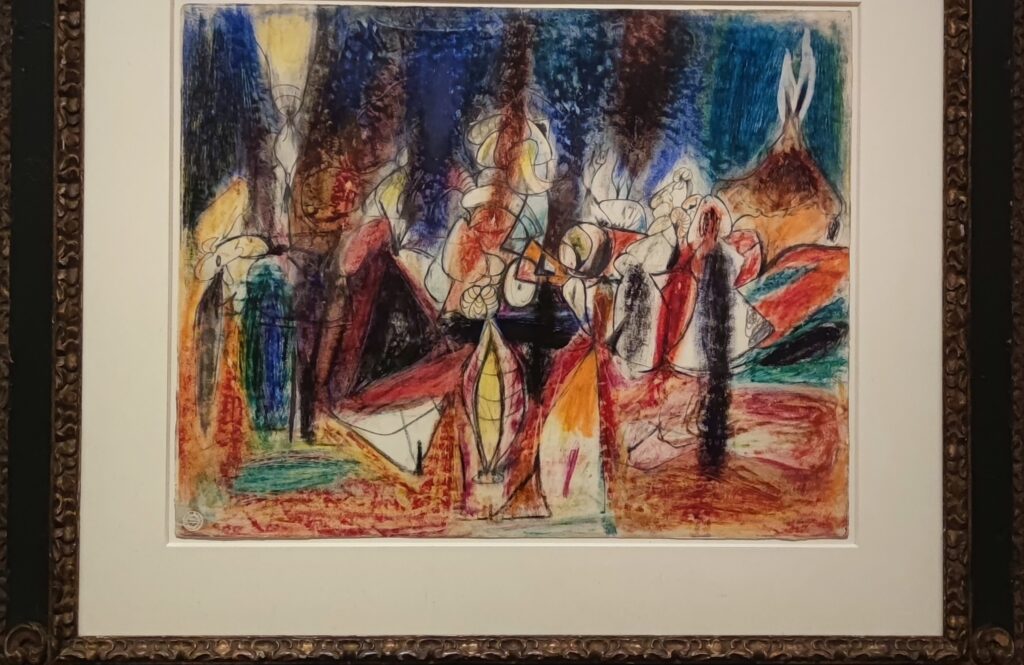

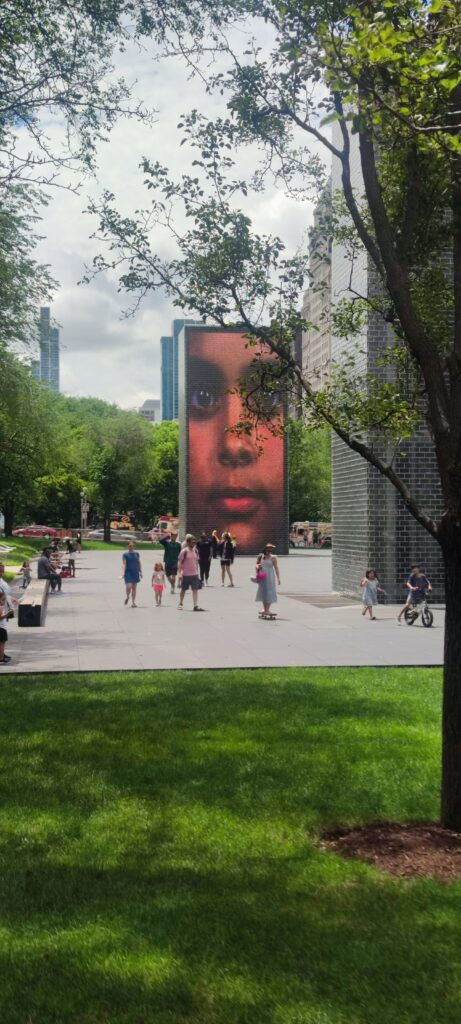

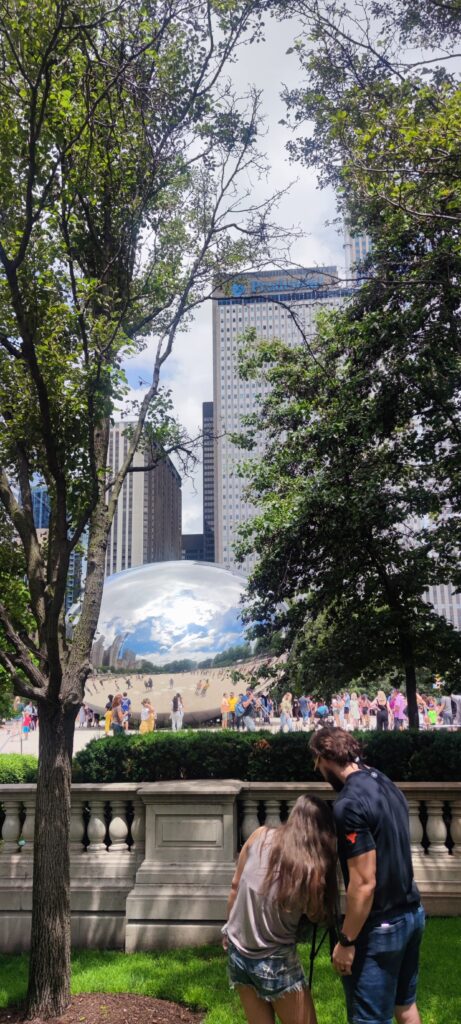

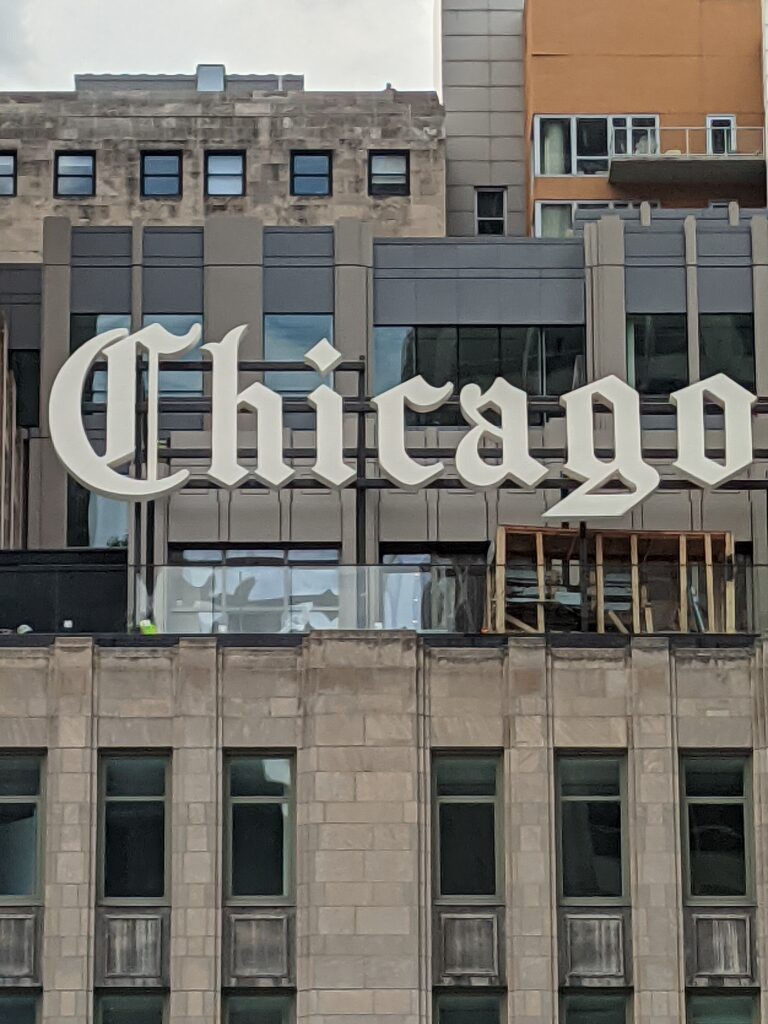

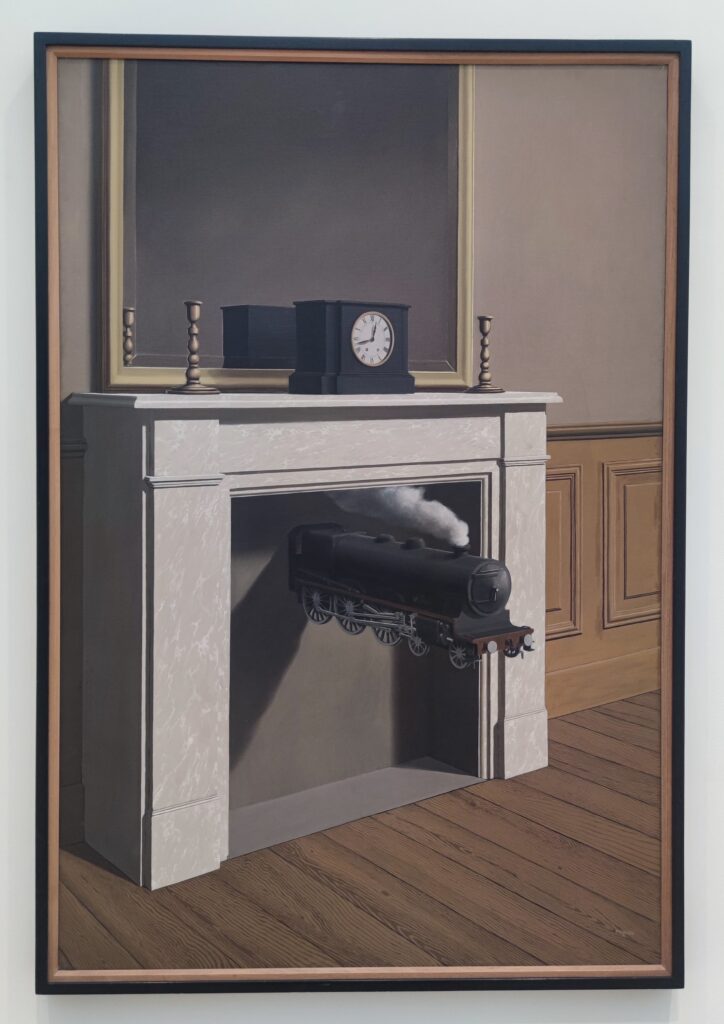



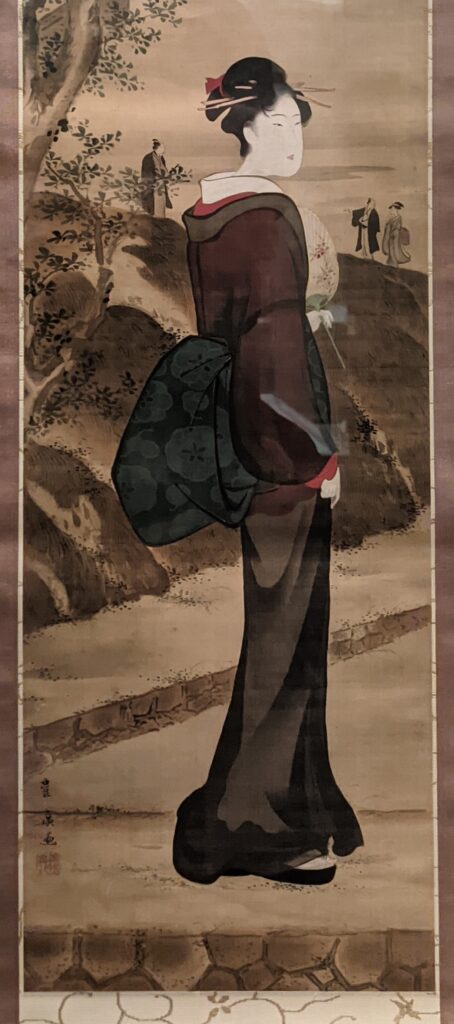

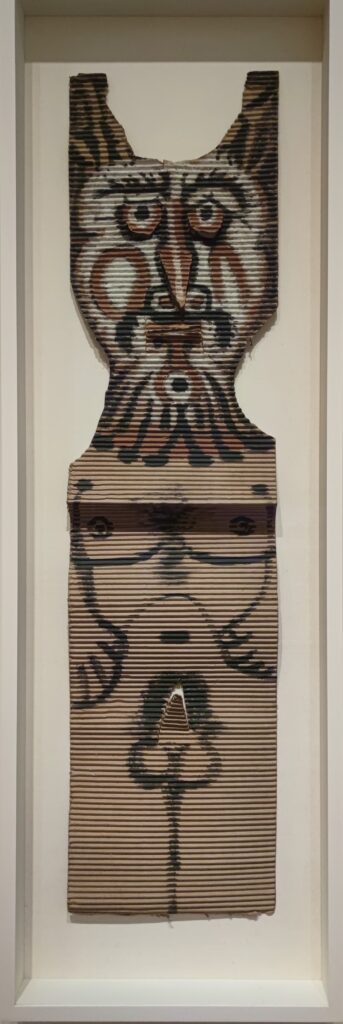



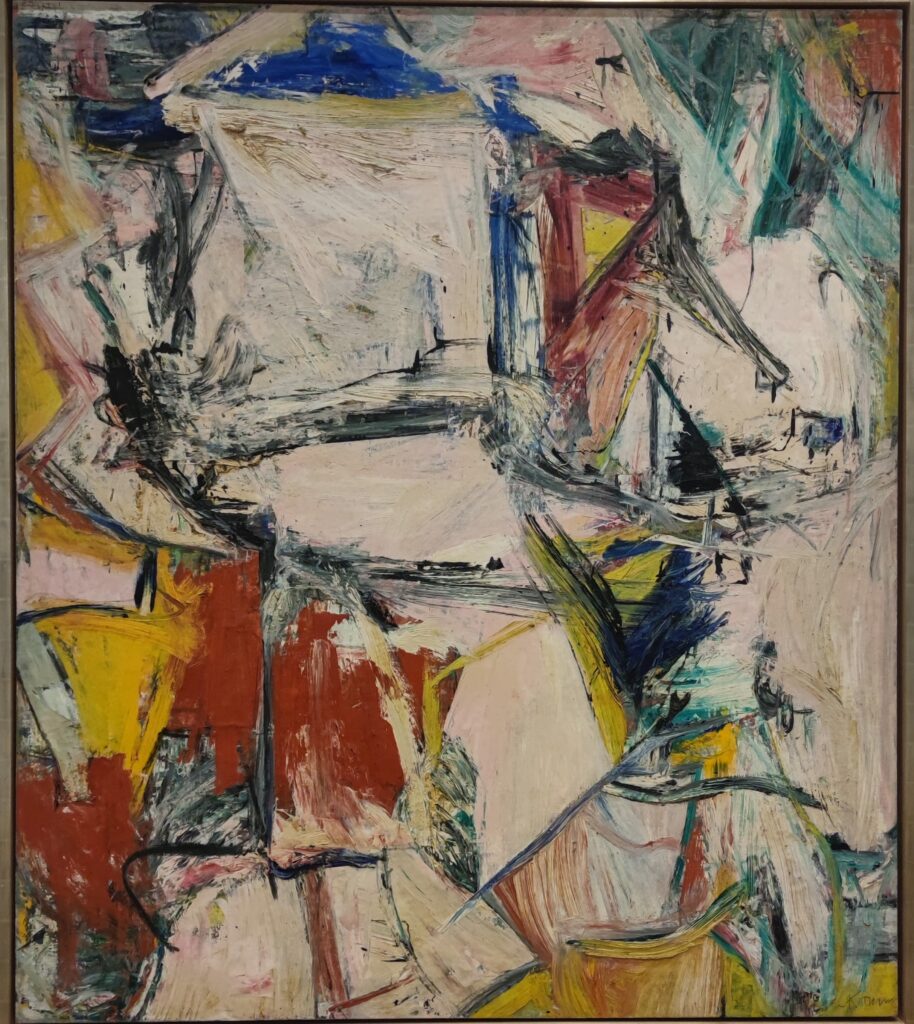

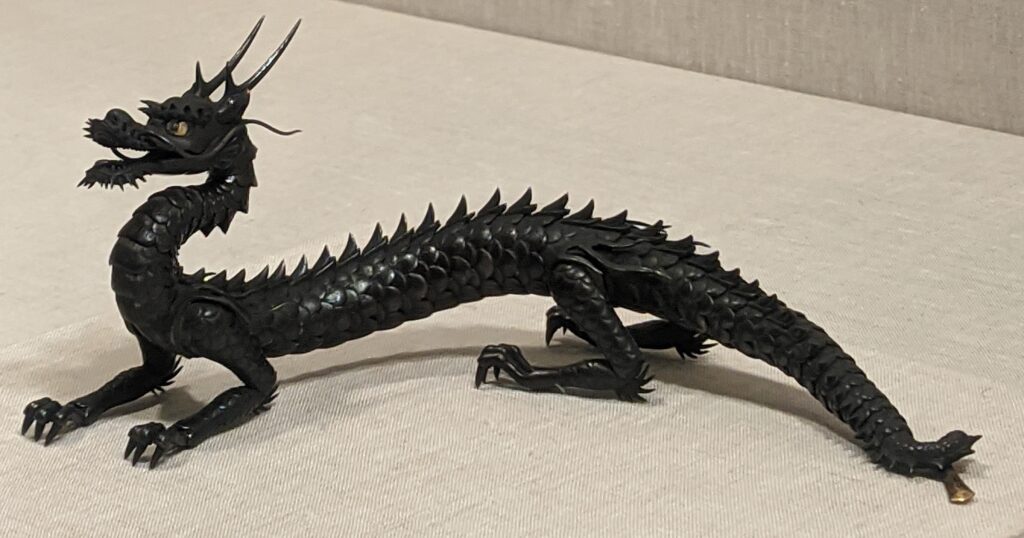

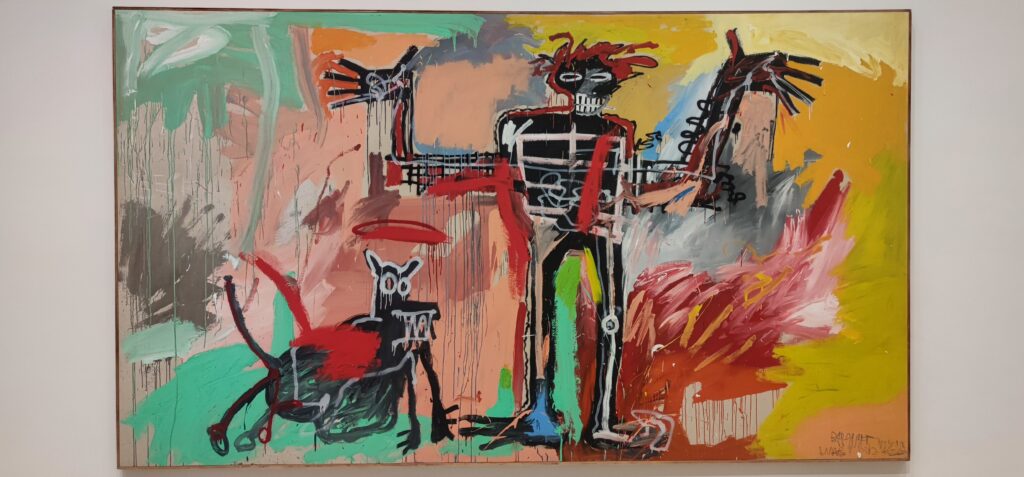

Upcoming & Past Exhibitions
Georgia O’Keeffe’s “My New Yorks”
June 2 — September 22, 2024
In June 2024, the exhibition entitled “My New Yorks” will explore the urban landscapes created by Georgia O’Keeffe during the 1920s. O’Keeffe moved into the Shelton Hotel in New York City, then the world’s tallest residential skyscraper, in 1925. Over a five-year period, the painter captured the city’s modernist architecture both by looking down from her 30th-floor apartment and in street-level compositions using graphite, paint, and pastels.


Best known for her close-up views of flowers, large in scale, and her Southwestern landscapes, O’Keeffe’s cityscapes have been largely overlooked and offer a missing piece of the puzzle necessary to truly understand this artist’s unique experimentation with form and perspective. As she once explained, “One can’t paint New York as it is, but rather as it is felt.” In the summer of 1929, O’Keeffe visited Taos, New Mexico — a move that would change the course of her life and her career until her death in 1986.




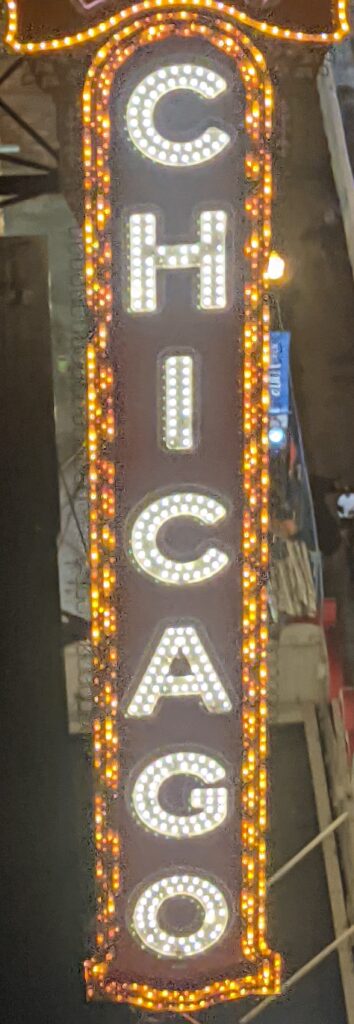




Previous Exhibitions
Remedios Varo


The art created by Remedios Varo (1908 — 1963) is intricate and fascinating, and was the subject of “Remedios Varo: Science Fictions” through November 27, 2023. While relatively small with less than two dozen paintings, this show marked the Art Institute’s first solo exhibition devoted to a female Surrealist. Born in Spain, Varo fled Europe in 1941 due to the dangers posed by World War II. She emigrated permanently to Mexico City where she infused her visual art with a wide variety of intellectual interests from ecology to feminism, and explored Surrealistic themes related to tarot, psychology, mysticism and unseen truths.
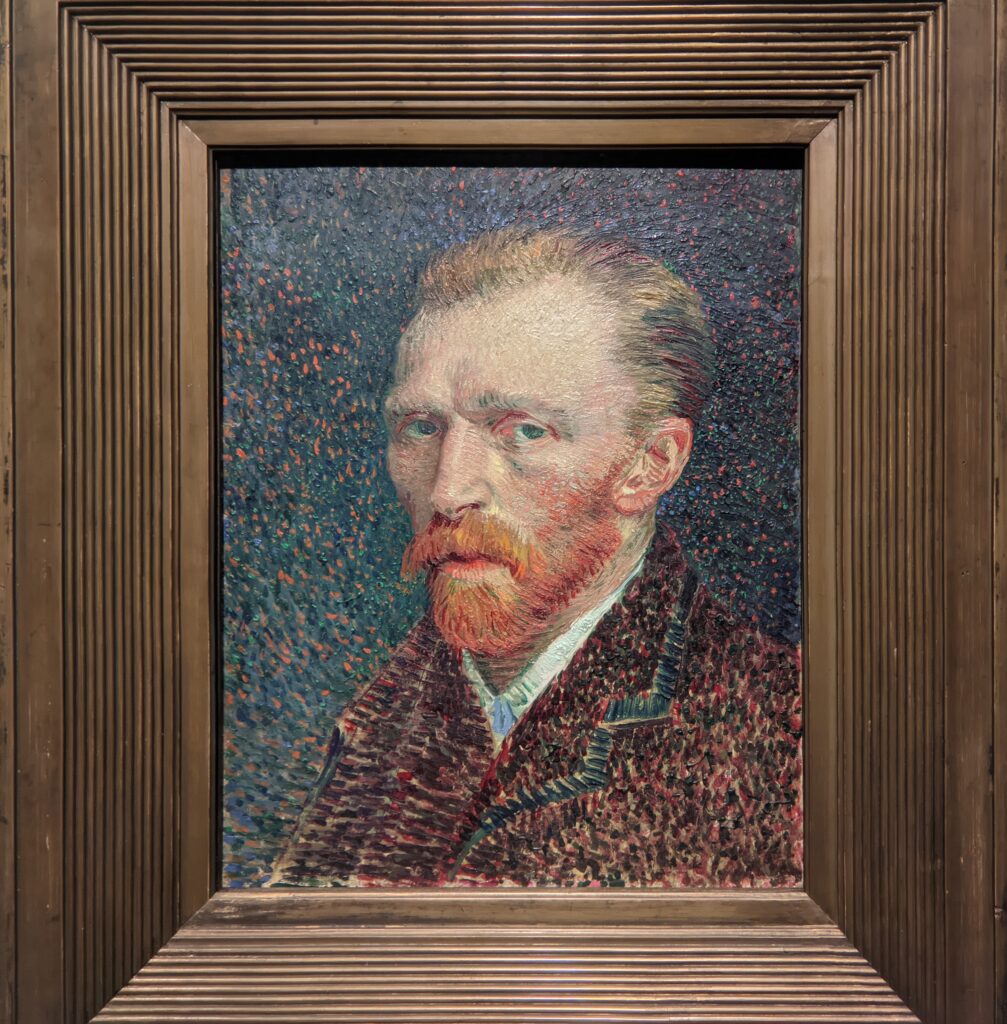



The Impressionists often found inspiration in pastoral and suburban locales. This past special exhibition at the Art Institute of Chicago explored the “next generation of ambitious artists” — specifically, Vincent van Gogh and four other Post-Impressionists who traveled outside of Paris to villages along the Seine on the northwestern fringes of the French capital in order to spark their creativity. Containing works from international museums and private collections, this fine show closed on September 4, 2023.
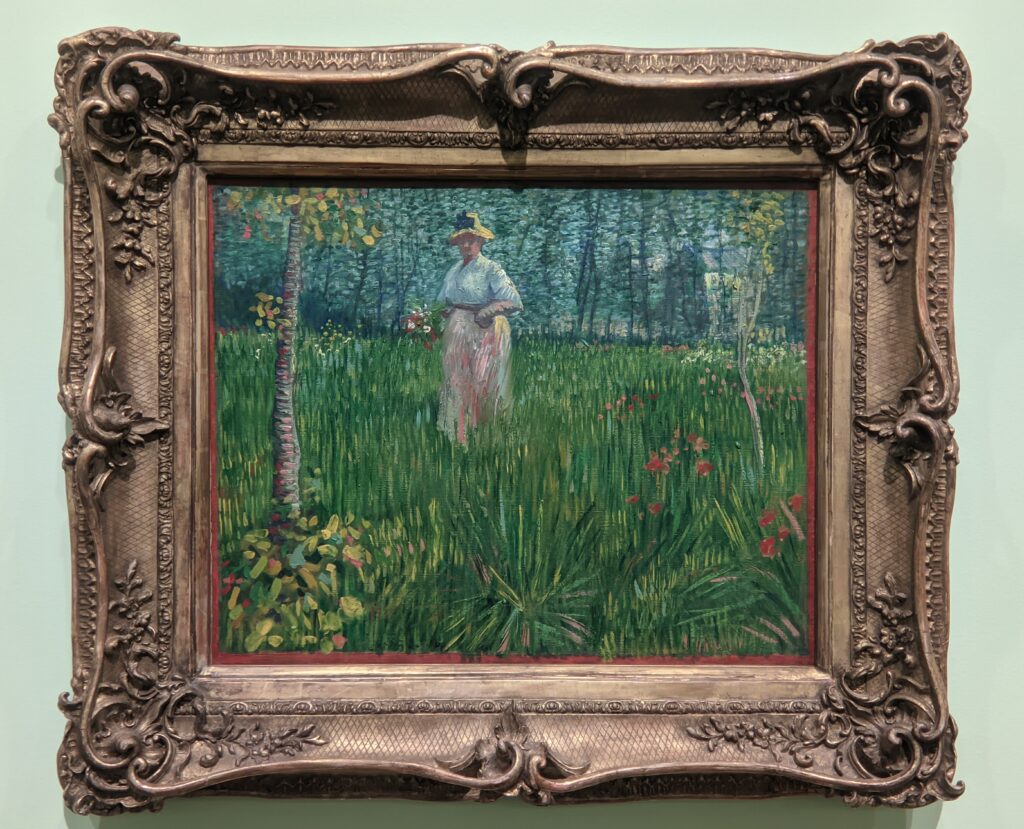

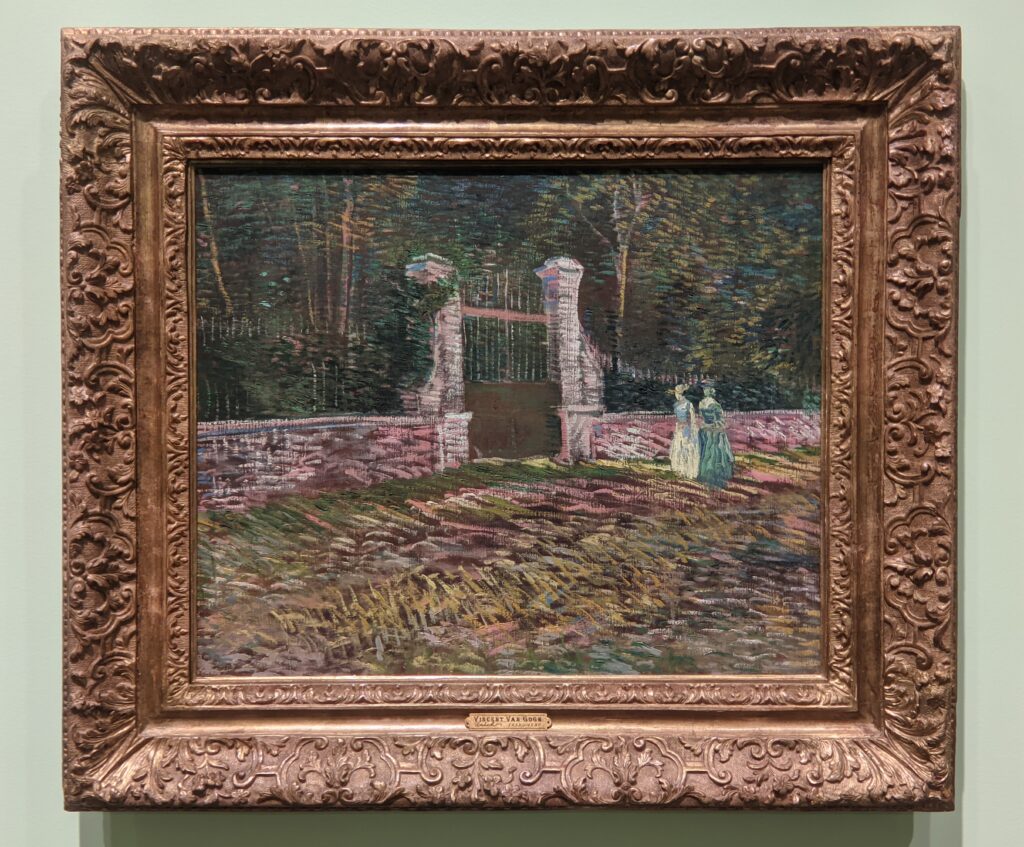

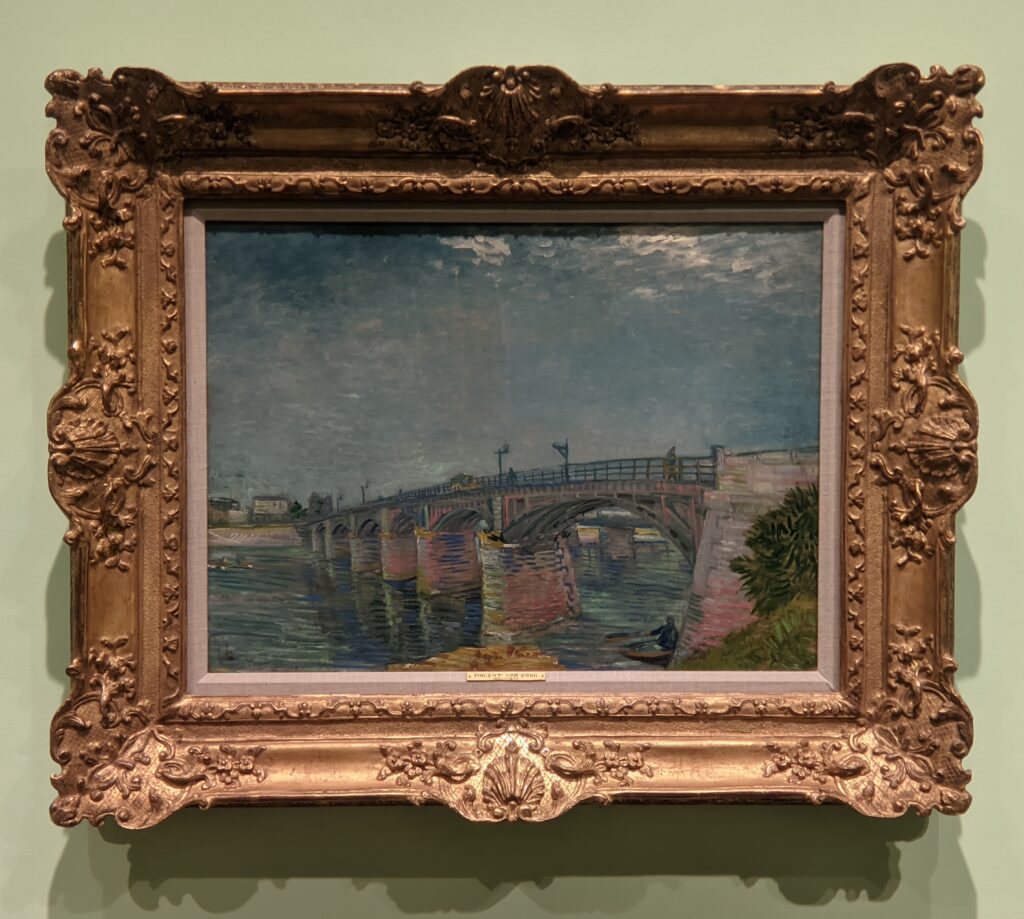



This exhibition, entitled “Van Gogh and the Avant-Garde: the Modern Landscape,” included 25 works by Vincent van Gogh, and an additional 50 paintings by Charles Angrand, Emile Bernard, Georges Seurat and Paul Signac (the two leaders of the movements known as Pointillism and Divisionism).




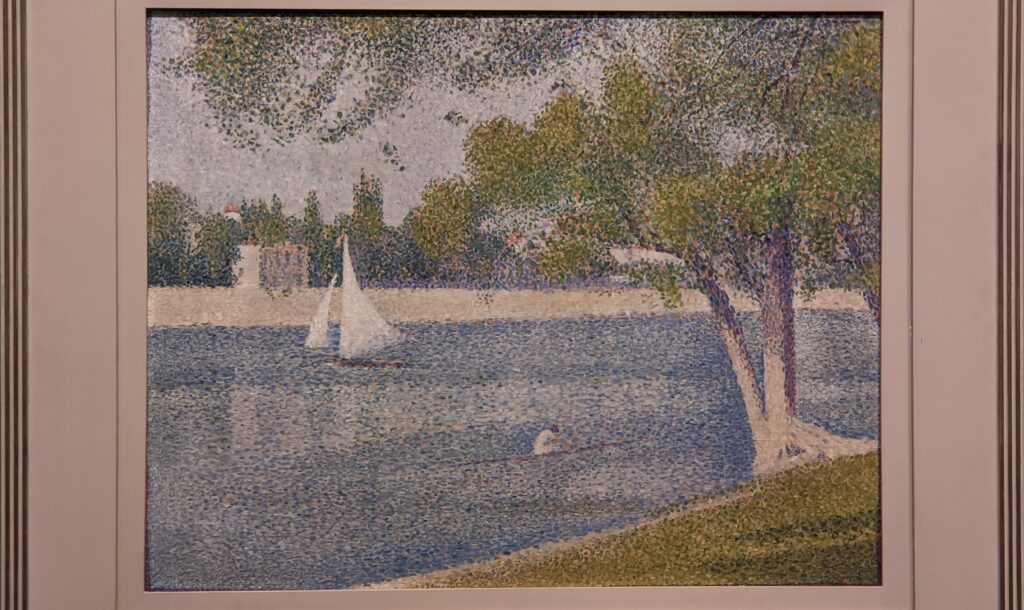





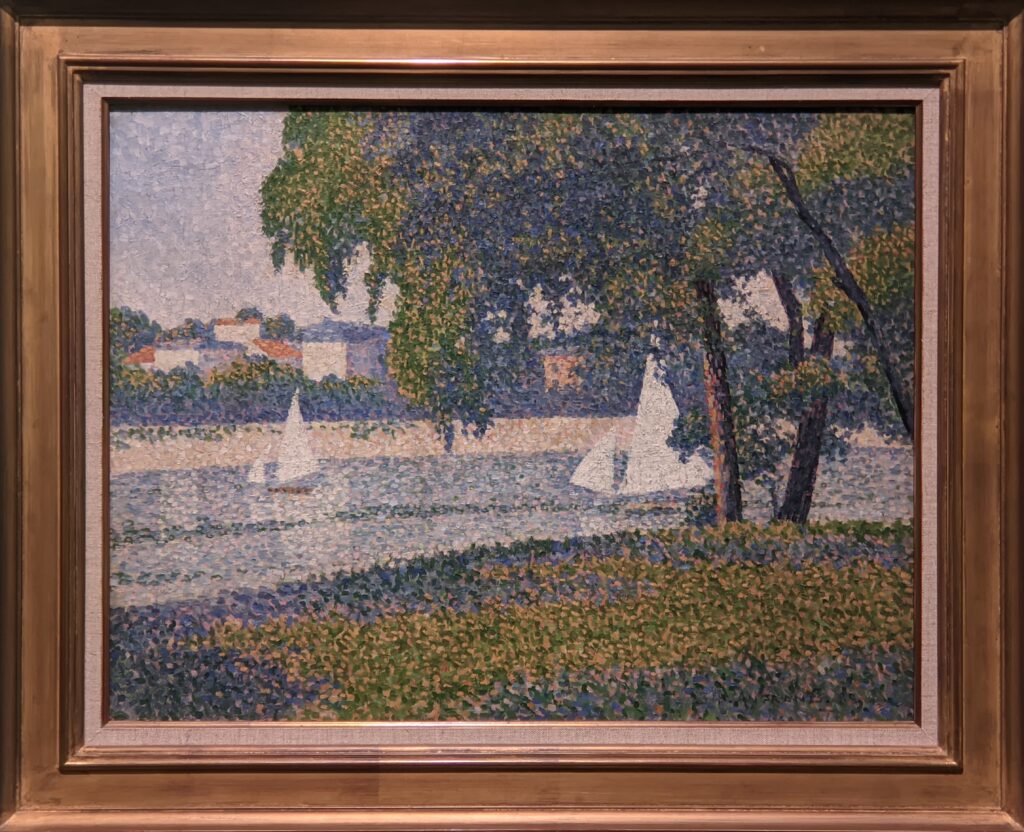



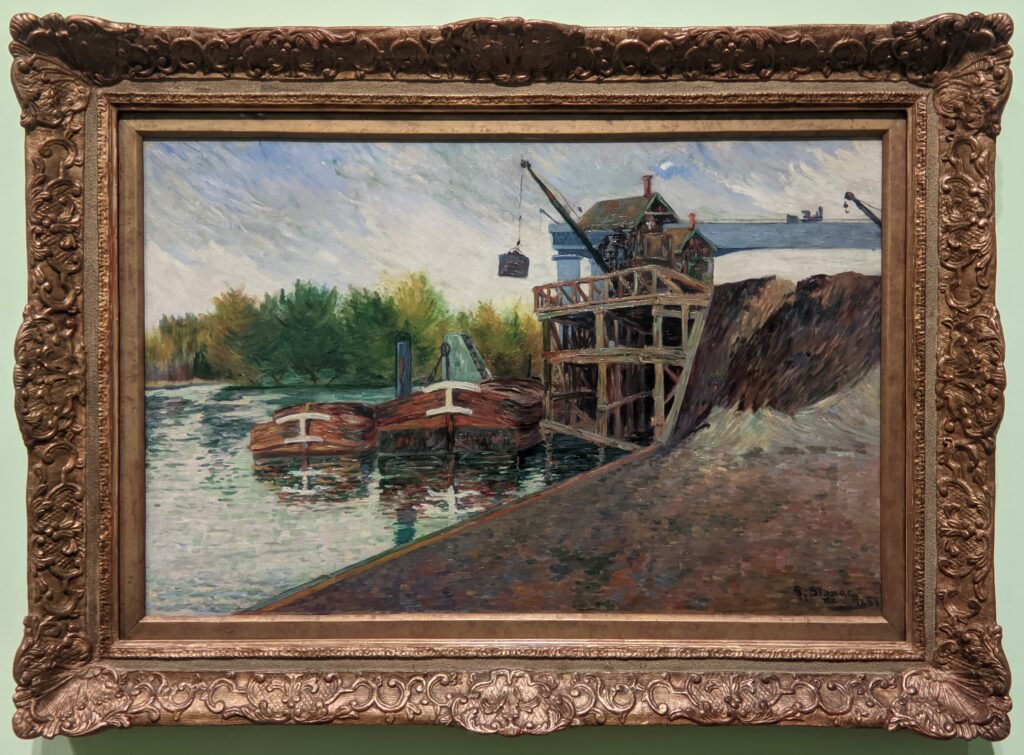

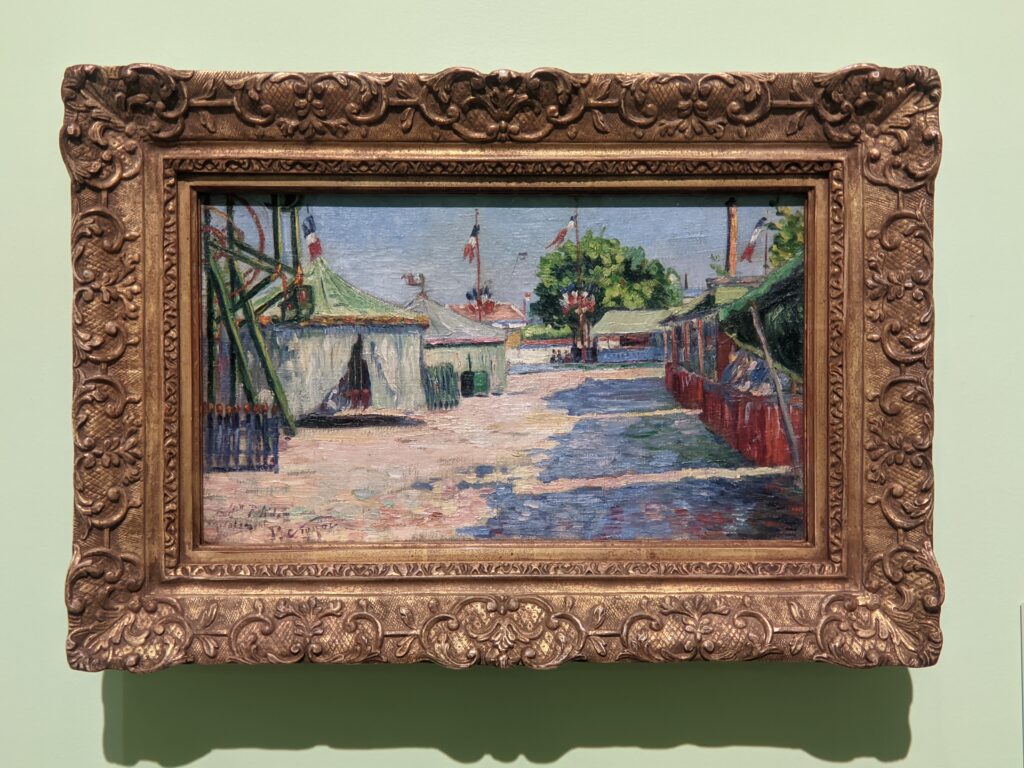

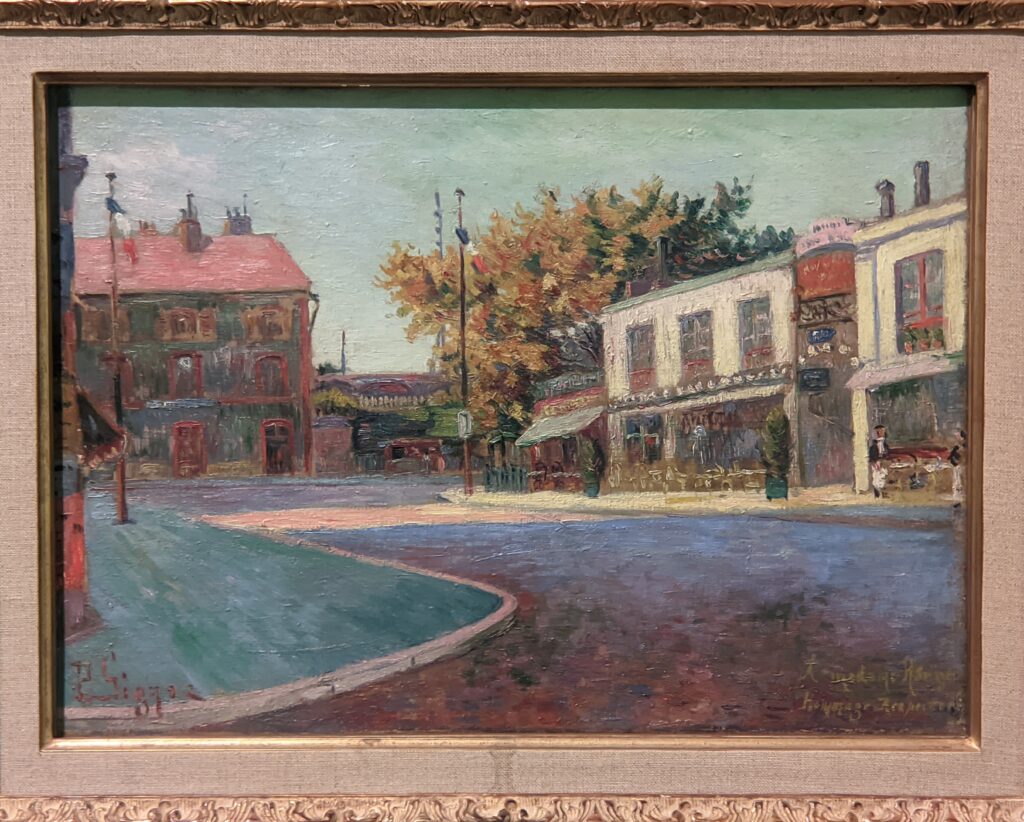



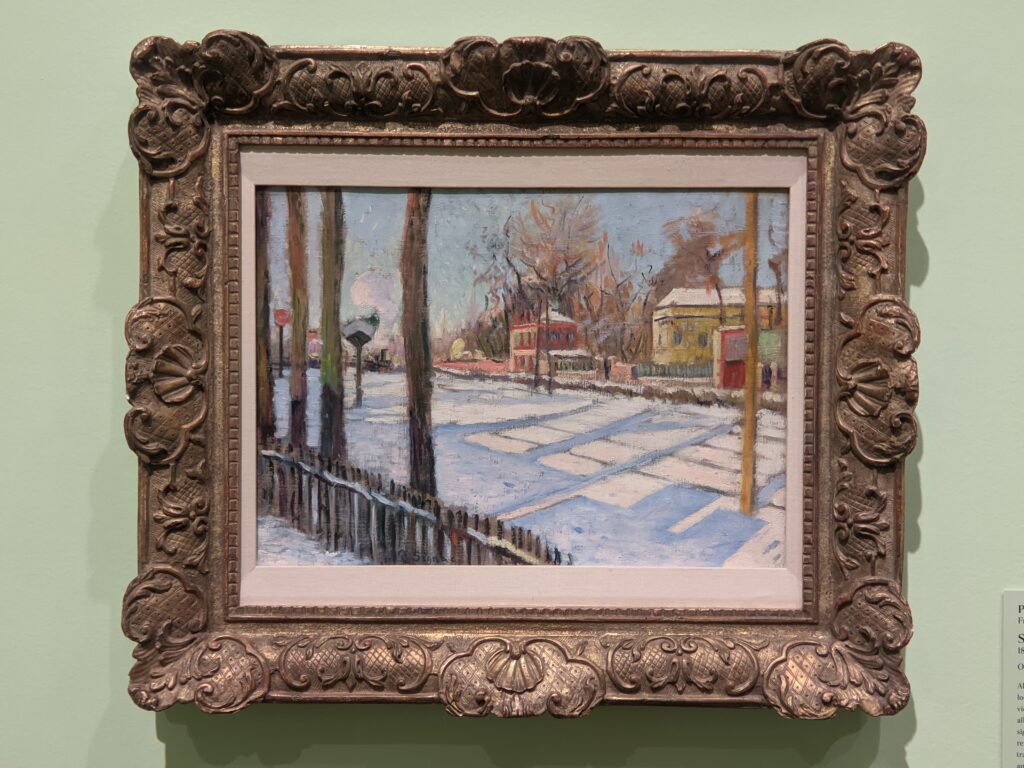

Landscape painting changed substantially during the 1880s, in large part due to the rapid industrialization around major art centers, notably Paris and London. Even though industrial development was adjudged to be unattractive by many, avant-garde artists such as Seurat and Signac flocked to the areas along the Seine River northwest of Paris because they found the changing physical landscape an appealing source for their inventive imaginations. The communes on the banks of the river such as Asnières and Clichy, once popular destinations for recreation, were now home to gas, coal and other manufacturing facilities. The brilliant colors along the Seine — combined with the bridges, factories and restaurants in the nearby villages — enticed this new generation of painters. At the same time, the lure of Impressionism has reached its heights and limits during the period between 1882 to 1890, and younger artists were seeking out fresh areas for experimentation. This thirst for innovation was evidenced in 1886 by Signac’s dramatic turn away from the Impressionist style (pictured above). By 1889, when Emile Bernard turned 21 years of age, Bernard had already abandoned Pointillism, Divisionism and the Cloisonnism he mastered two years earlier for a more hybrid style. Vincent van Gogh followed and absorbed the developments embraced by the avant-garde to break new ground as the father of Expressionism.
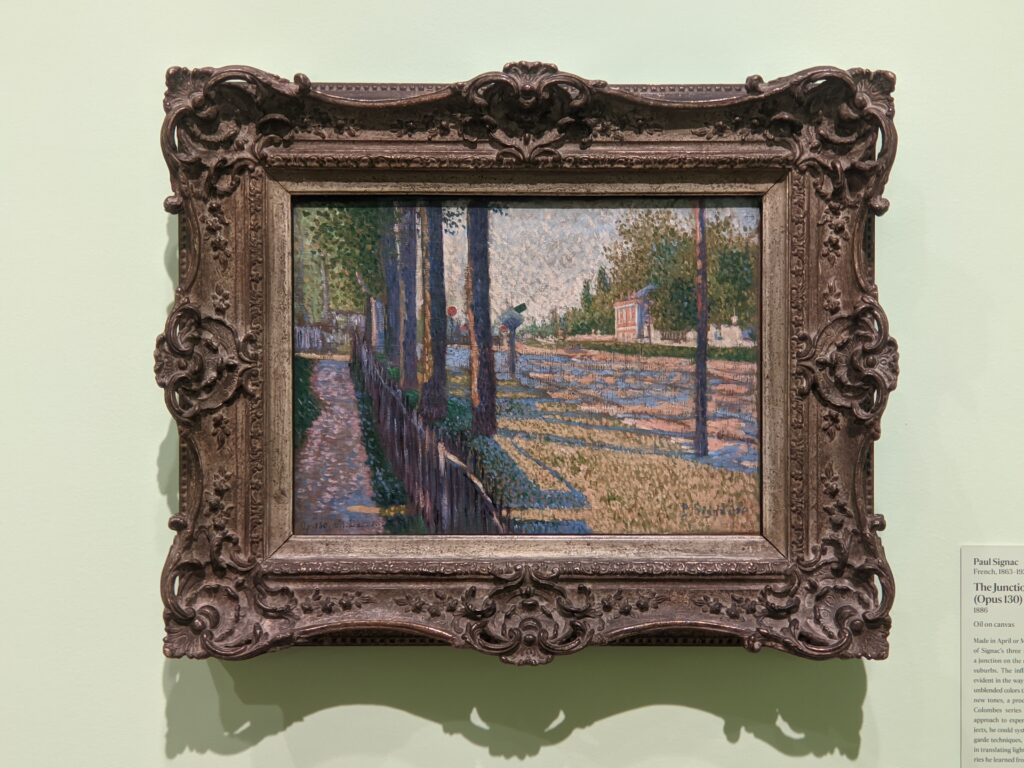

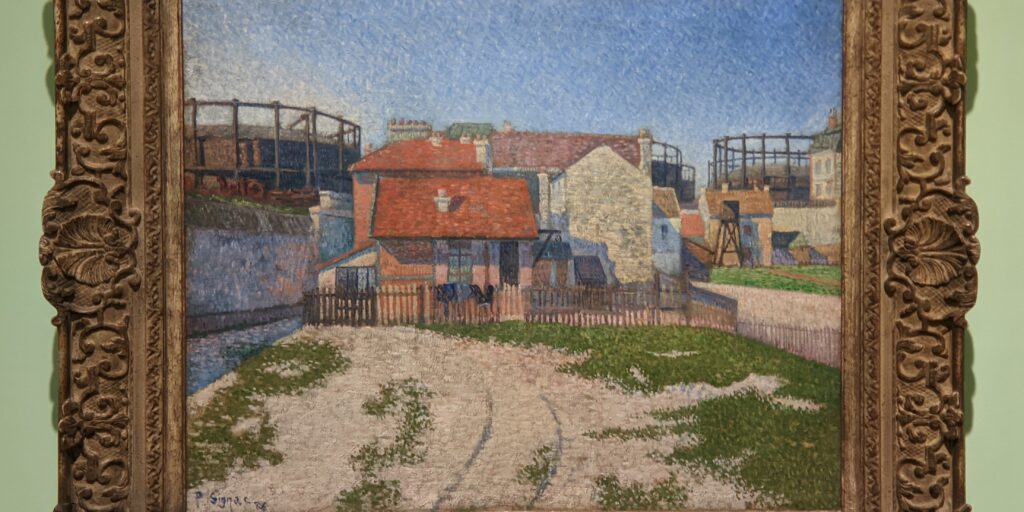







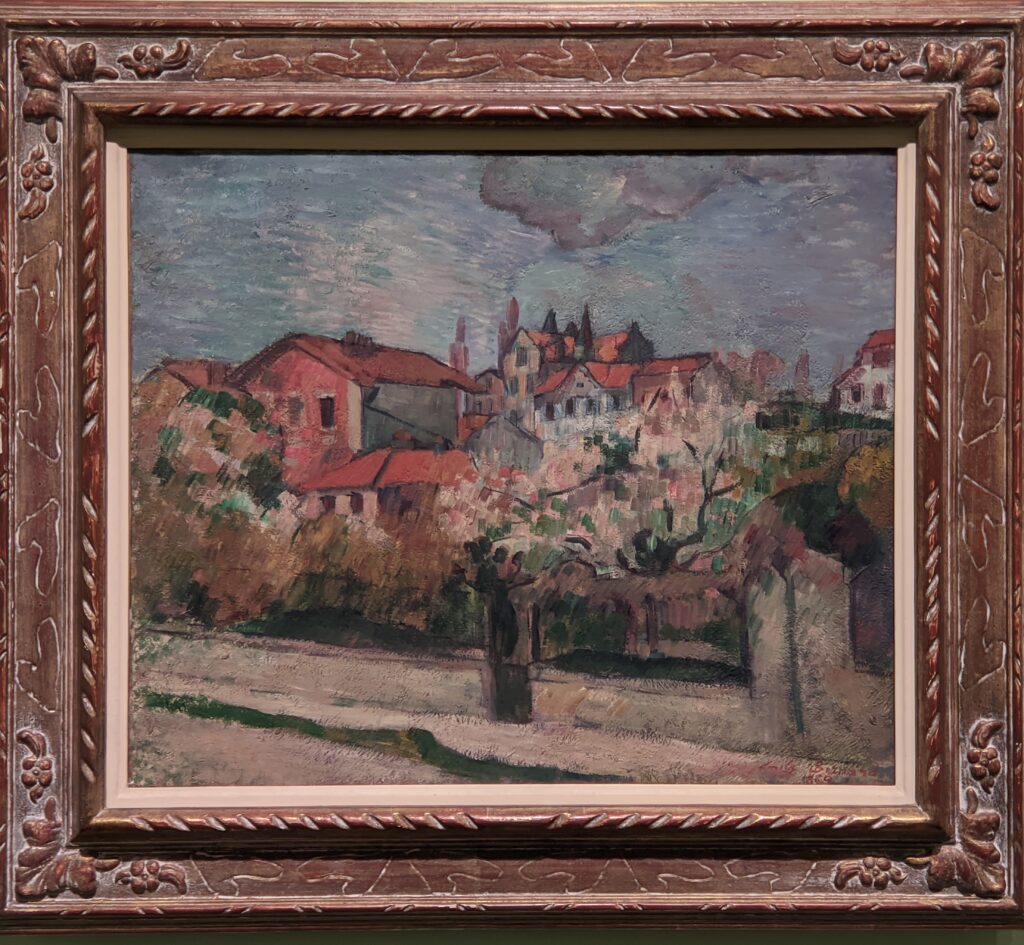



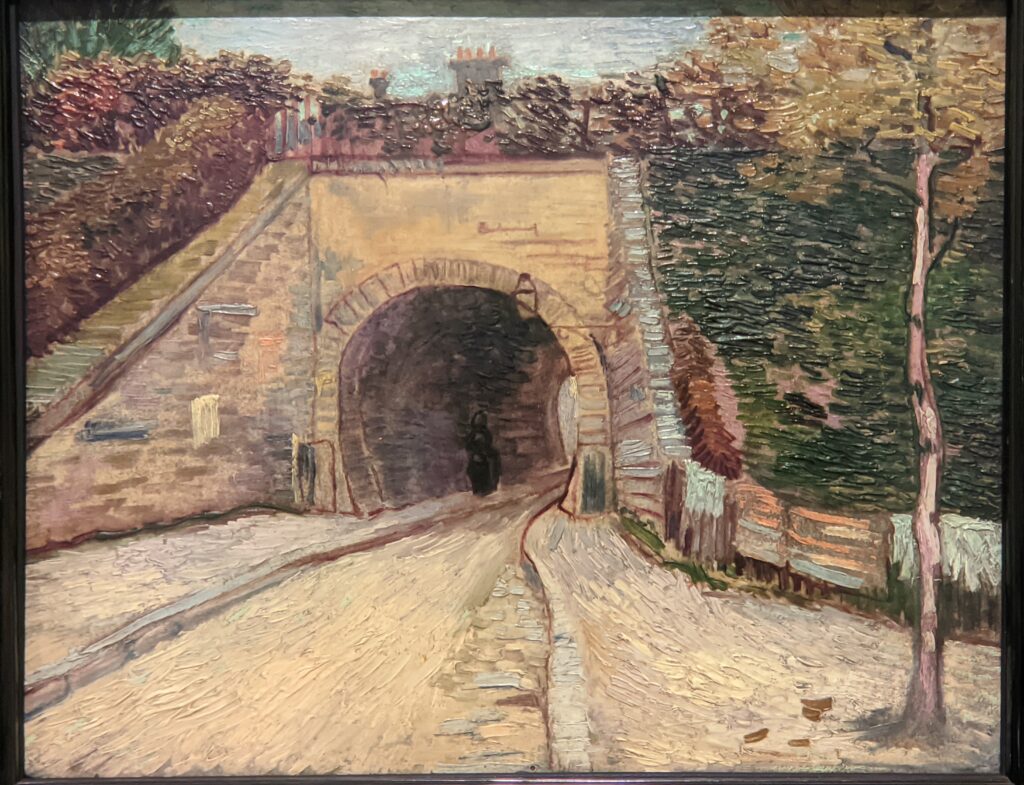

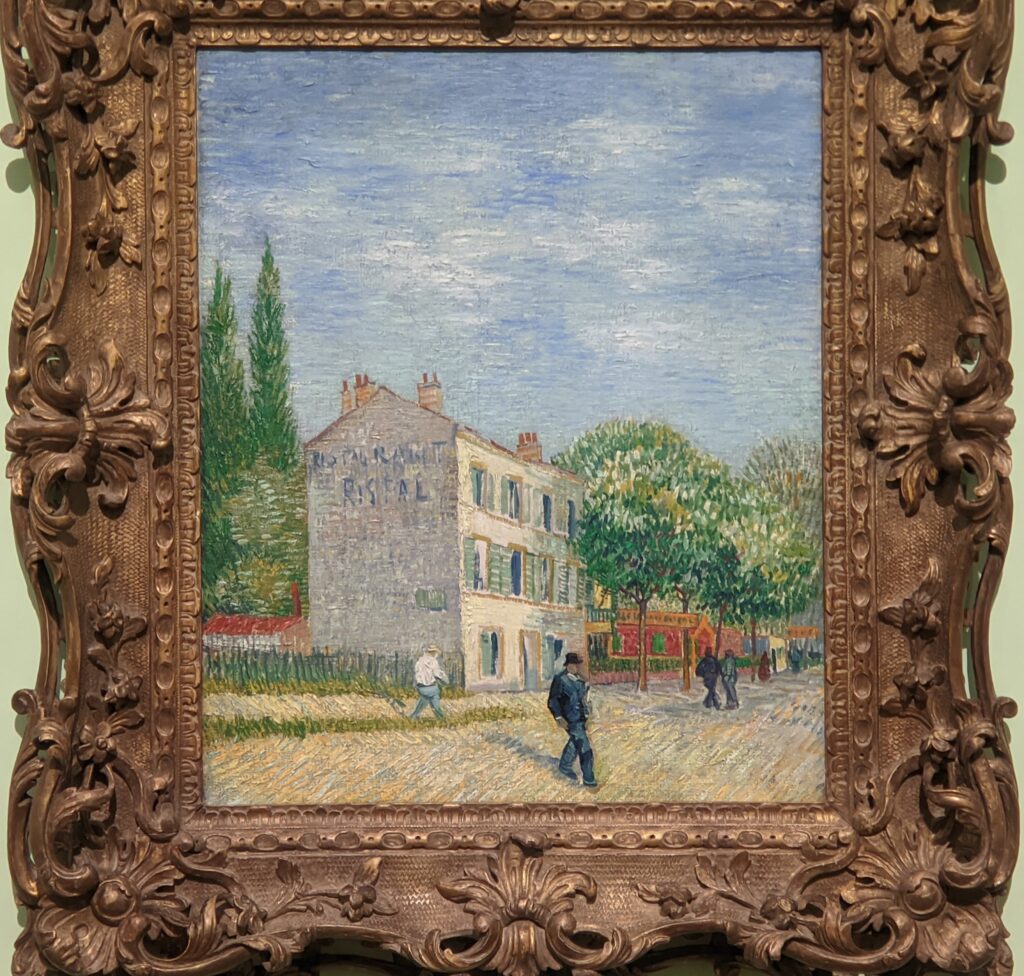

A Van Gogh Exhibit Closed in Chicago on September 4, 2023
The Art Institute of Chicago is closed on Tuesdays and Wednesdays. The general public may visit the museum from 11:00 in the morning until 5:00 in the afternoon from Friday through Monday. The Art Institute is open on Thursdays from 11:00 until 8:00 in the evening.
Art Lovers TIP: Membership benefits at the Art Institute include early access to the museum’s galleries from 10:00 until 11:00 on every morning from Thursday through Monday throughout the year, in addition to other privileges.
For more information on the special exhibition “Van Gogh and the Avant-Garde,” and images illustrating how landscape painting evolved in the area near Asnières along the Seine River between 1882 and 1890, we encourage you to read our article entitled “Excellent Van Gogh Paintings & the Beautiful Colors of Rome.”
Please feel free to share your feelings and opinions on the art and architecture of Chicago with us, and with our readers around the world. We are happy you spent time with us today! Thank you for your visit.
The Image Disappears
An exhibition entitled “Salvador Dalí: The Image Disappears,” the first show devoted to the Catalan/Spanish surrealist by the Art Institute of Chicago, was on display at the museum through June 12, 2023.


Dedication
We dedicate this article on Chicago to Walt Blenner, a lawyer based in St. Petersburg, Florida who represents injured Americans among many others, volunteers as a docent at the Dalí Museum in St. Petersburg and is an avid supporter & lover of the Arts. Walt Blenner is also an alumnus of the University of Chicago.







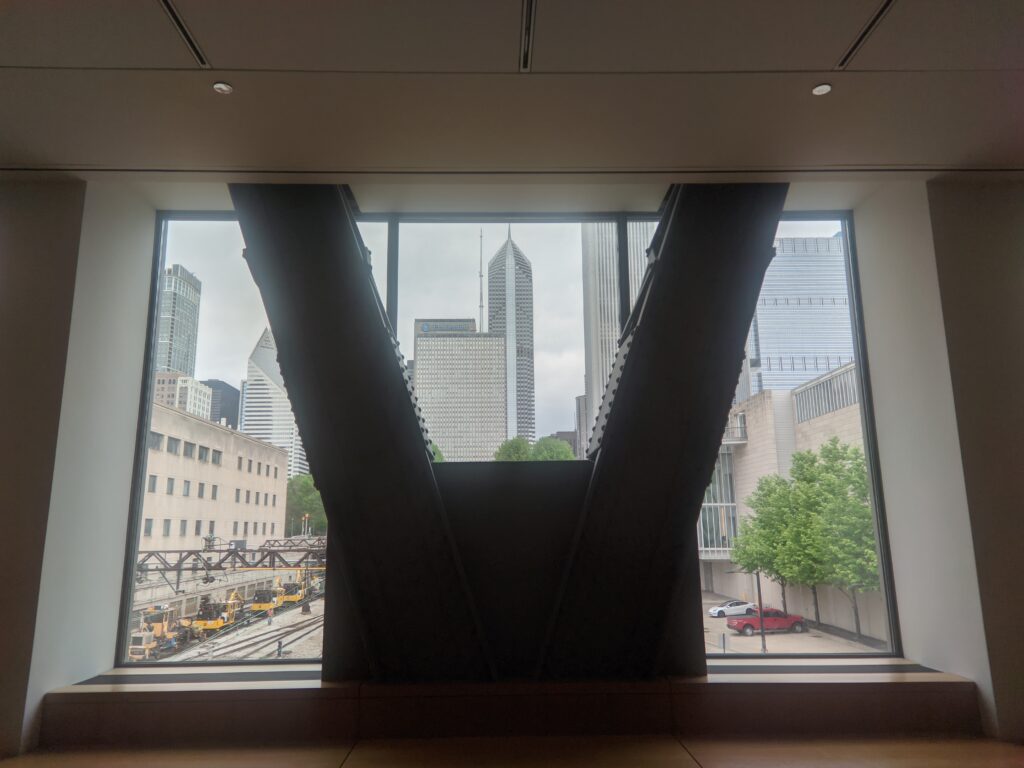







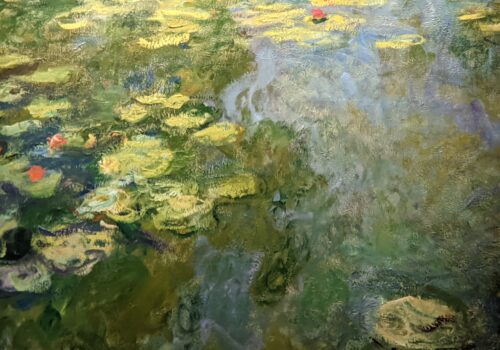
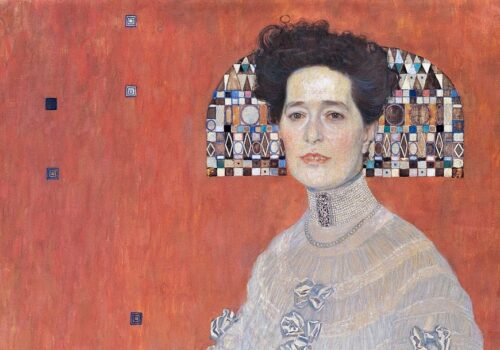

3 Comments
Allen Forys
Thank you for your work dealing with the Art Institute of Chicago. My first experience with the art institute was when I was about 16 back in 1962. I lived in a suburb of Chicago about six miles from downtown Chicago. My art teacher took our class on a field trip.
I became enthralled bt the city and the art museum. The entrance to the Art Institute was flanked by two impressive lions. I am thankful for the teacher that took us. My parents never would have taken me there, and the two lions in front were too intimidating to venture by timid self. That trip strengthened my interest in art and architecture.I eventually became an art teacher and taught art at a school district about 250 miles South for 32 years. I fell in love with the museum and the impressive collection. The museum has grown over the last 60 years by adding two wings and having many major exhibits. I wish you would have made mention of the School of the Art Institute of Chicago and the many important artists that attended
The city has also grown. I remember the talles building was 60 stories tall. I remember the construction of Marina Towers. They were the two corn cob looking concrete structures next to the river. In high school I thought it was fitting that they were located in Chicago as city was a major distribution center for grains and farm products. In college I remember going up to the observation deck on the 100 story “Sears” tower and see how the city has become taller with more award winning buildings.
I love your presentation of the architecture and art. I only wish there was a way to include the food of the city as well as the sound of its music and theatre. I’m very happy to have stumbled across your work and am inspired to make another trip to Chicagoagain soon.
Steven & Artur
The School of the Art Institute of Chicago (SAIC) is a private art school with nearly 3,000 undergraduate students and more than 700 graduate students, 75% of whom are female. The School’s Visiting Artists Program, dating back to 1868, hosts presentations by scholars, designers and artists. Thomas Hart Benton, Jeff Koons, Joan Mitchell, Georgia O’Keeffe and Grant Wood are among the School’s alumni. In 2021, U.S. News & World Report ranked SAIC as the second best (tied with Yale University) overall graduate program for fine arts in the U.S.A.
Julia Temkin
Very extensive article about Chicago and The Art Institute of Chicago. Wonderful photos of the city and very interesting paintings from the museum.
I have never been to Chicago and don’t know when I will go there, but now I have an idea of the city that you introduced me to on your excellent and very informative website with a lot of great photos.
Thank you Steven and Arthur